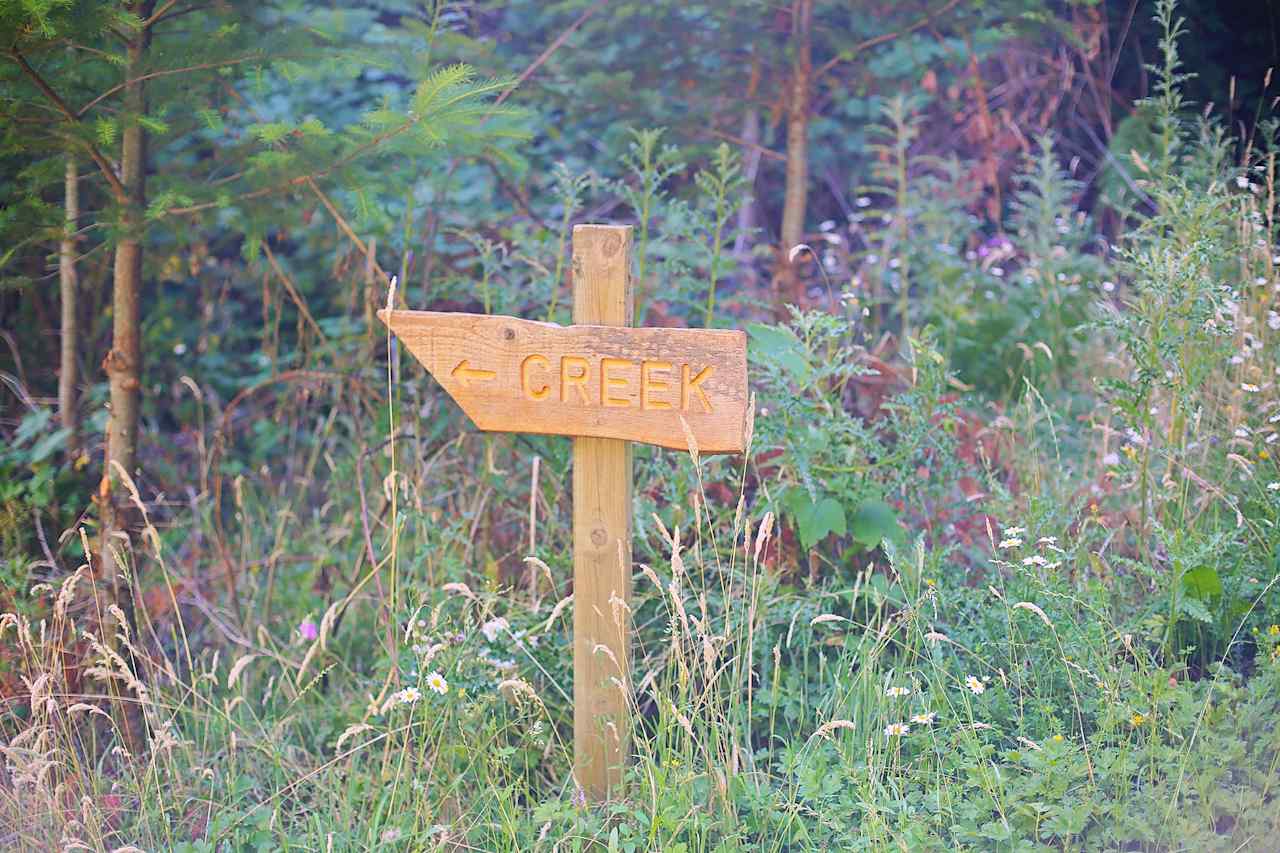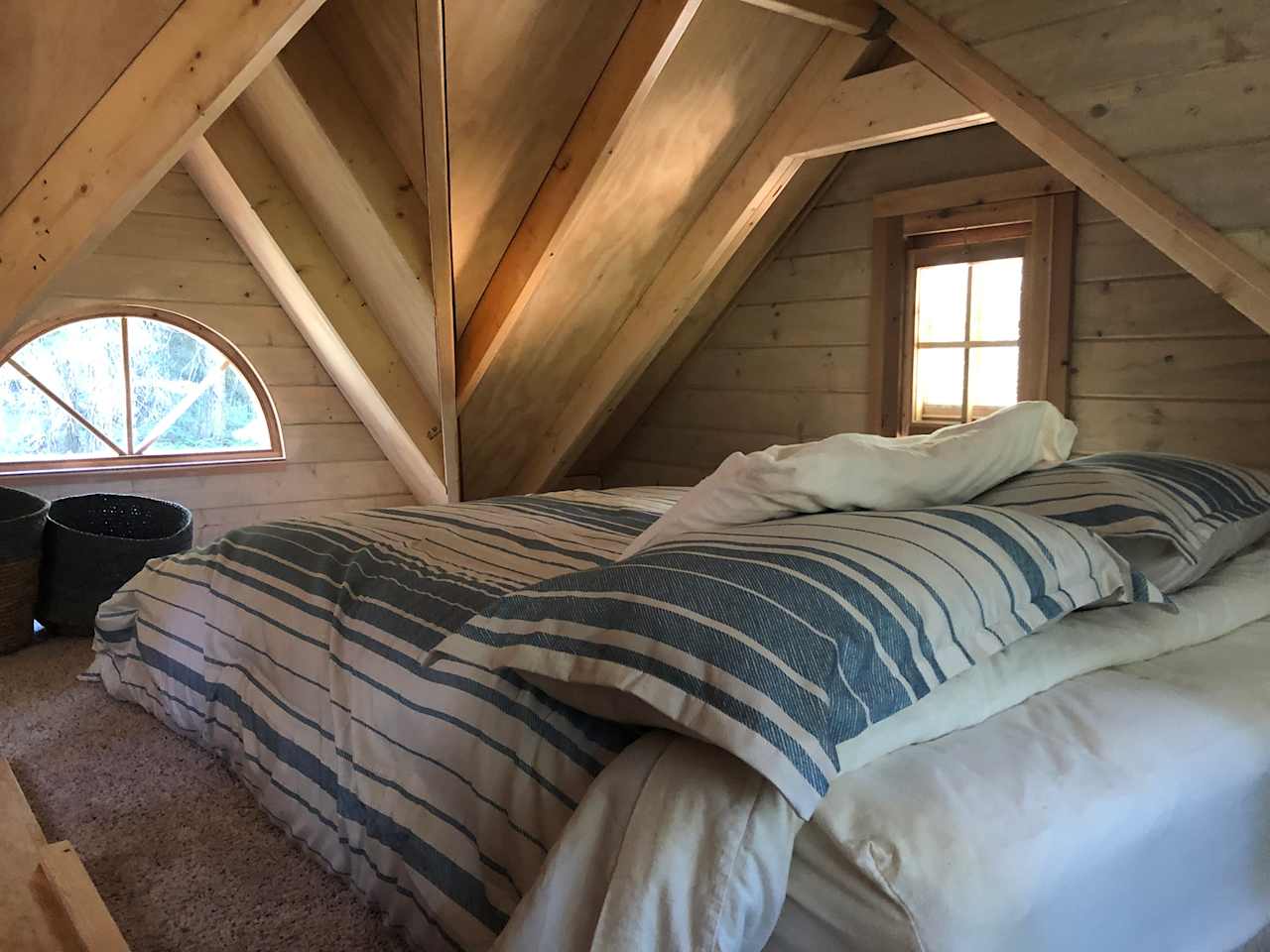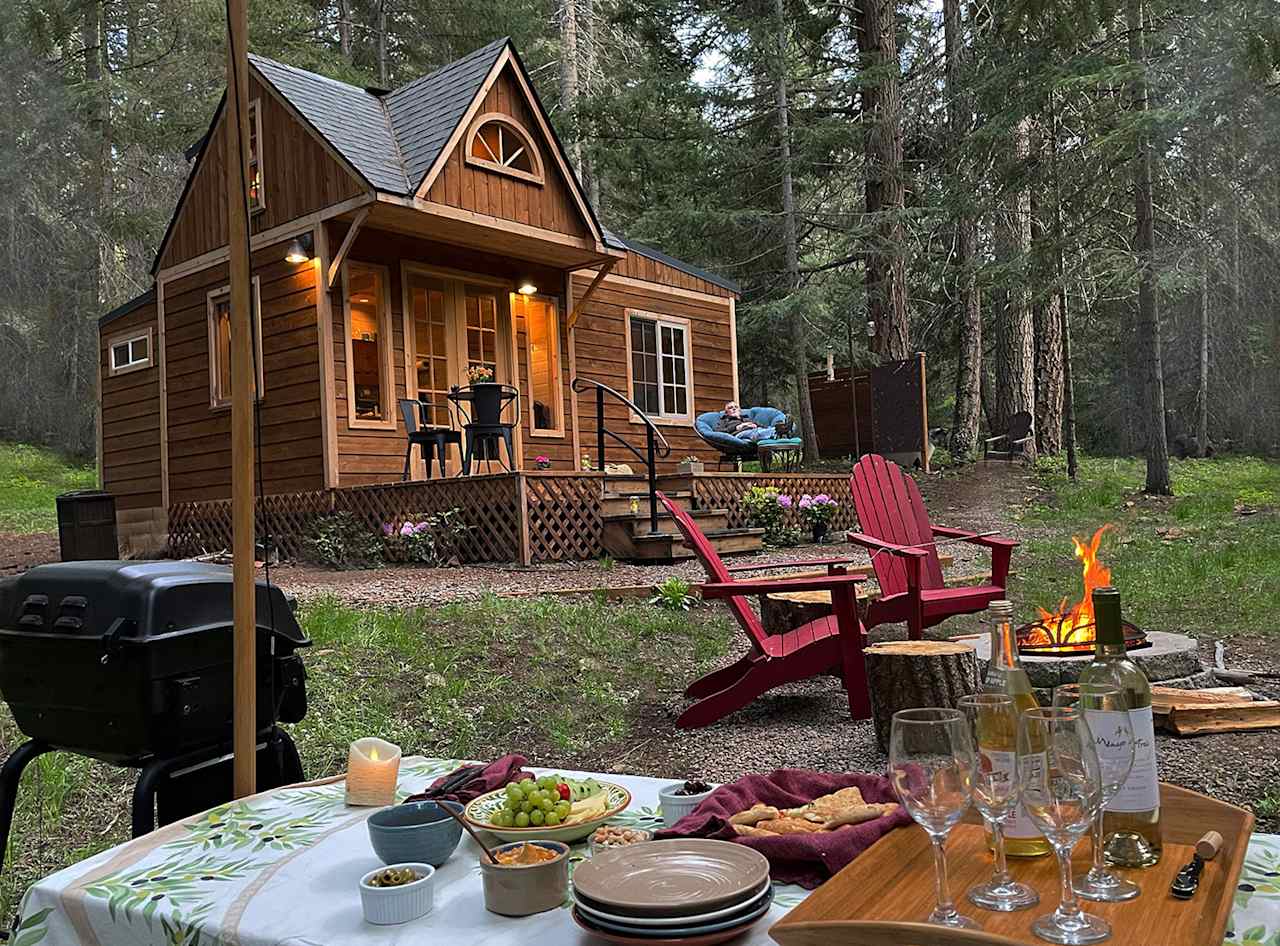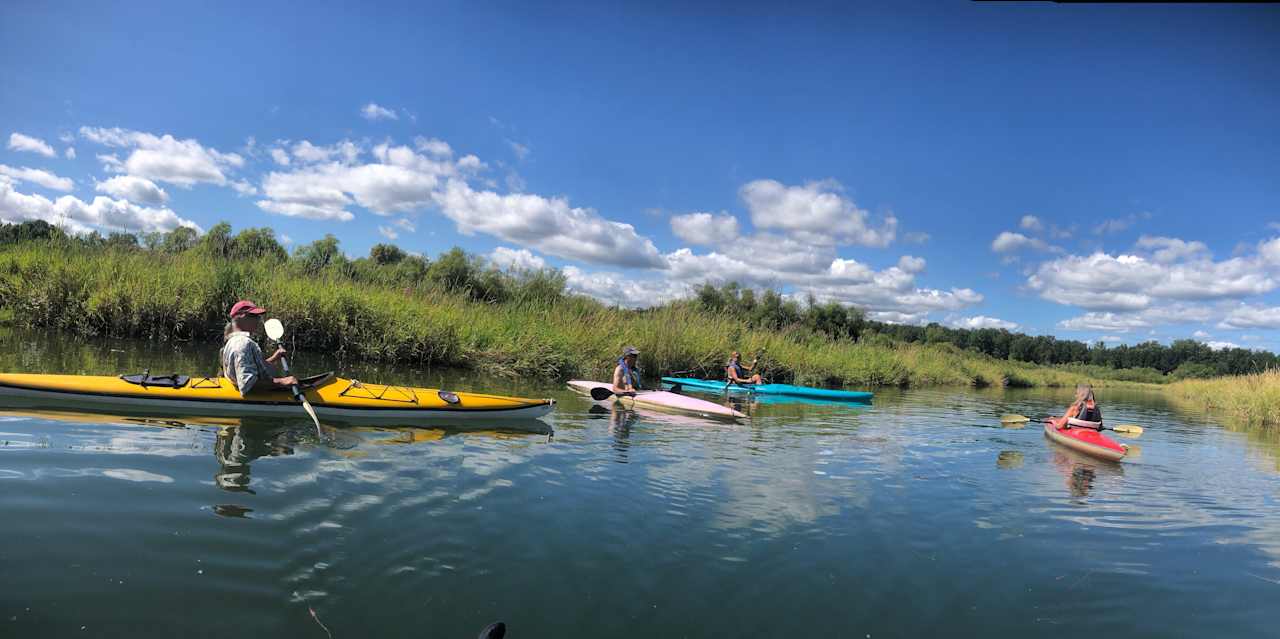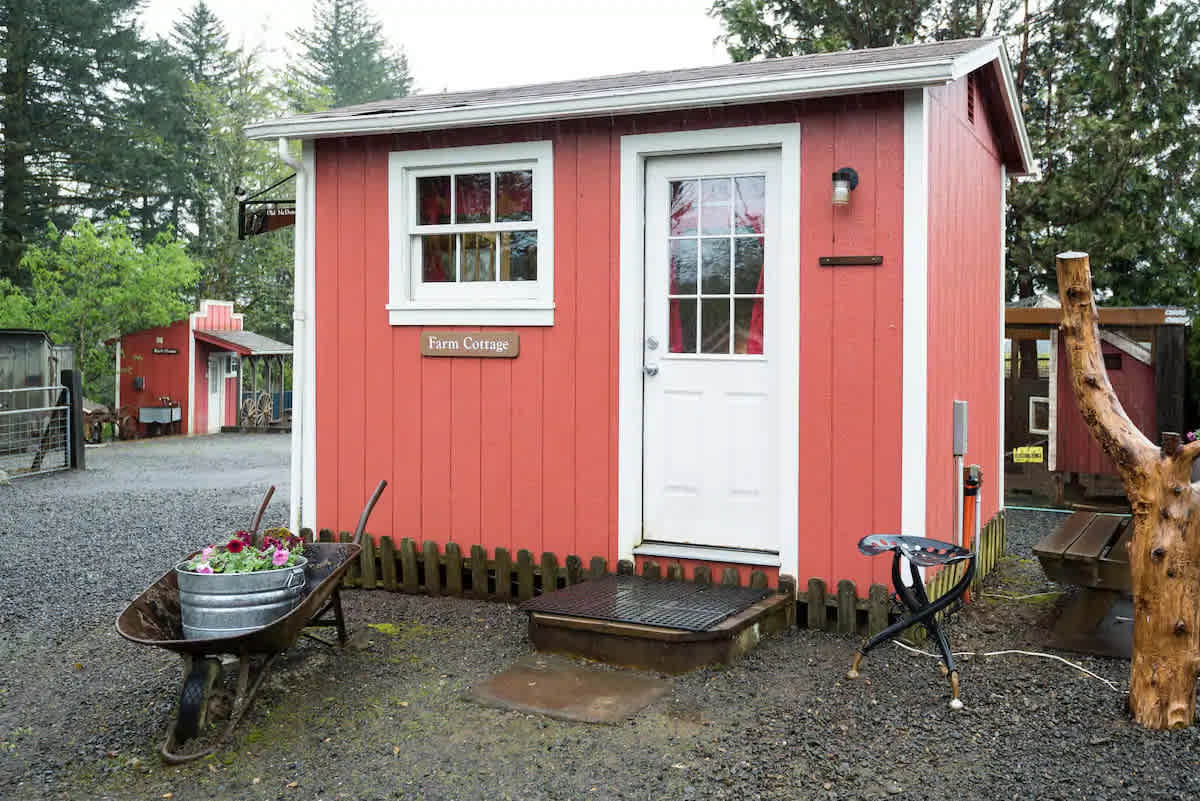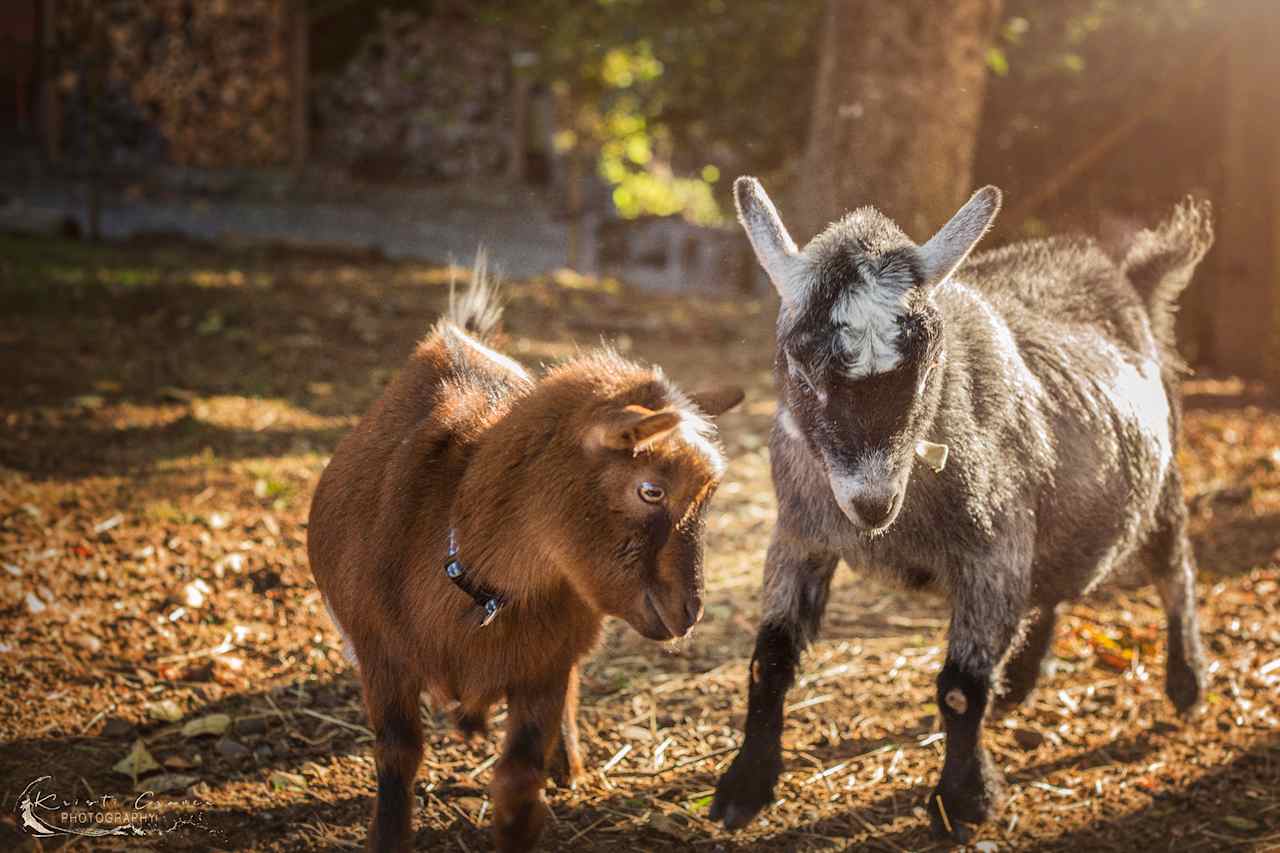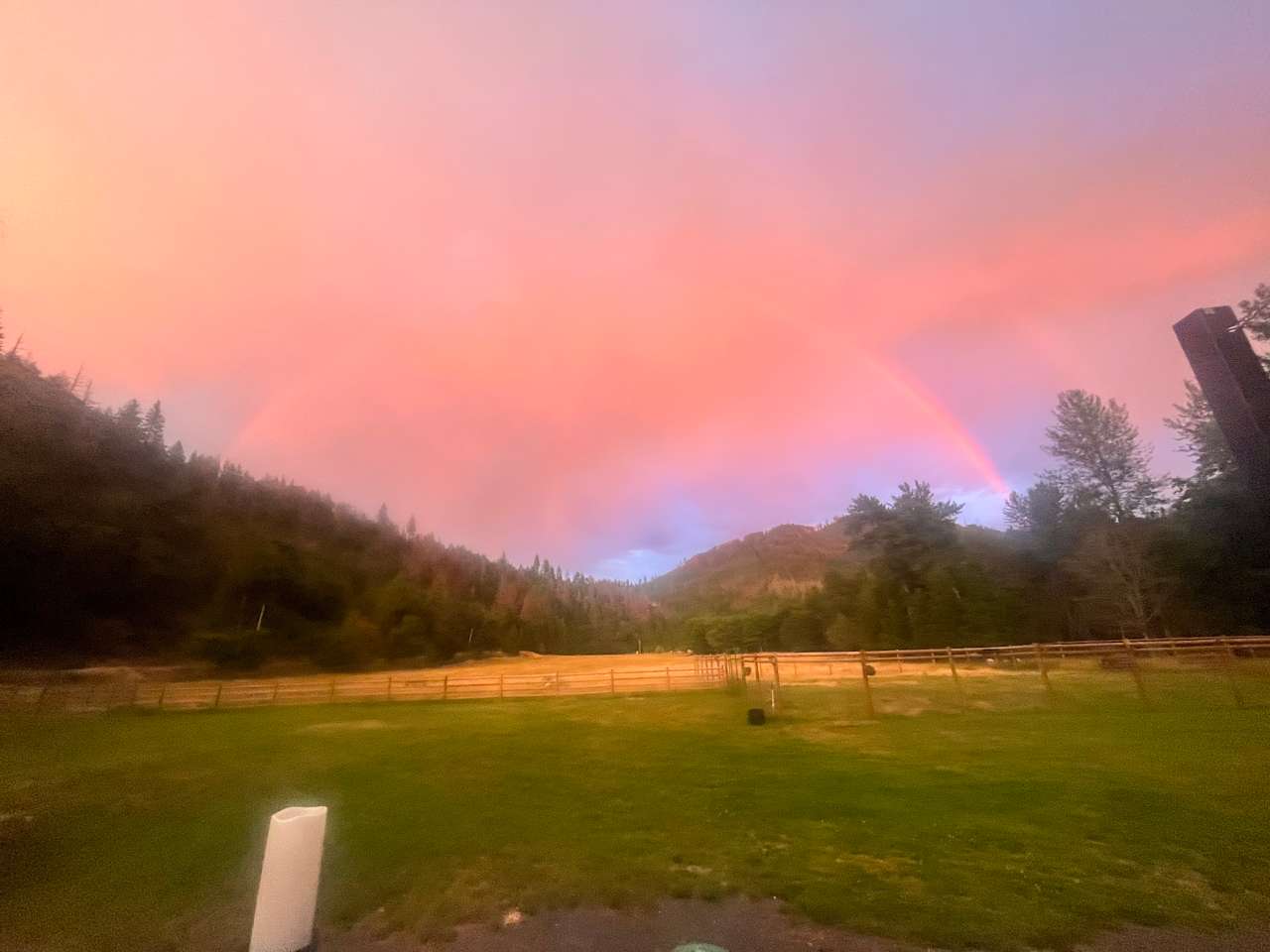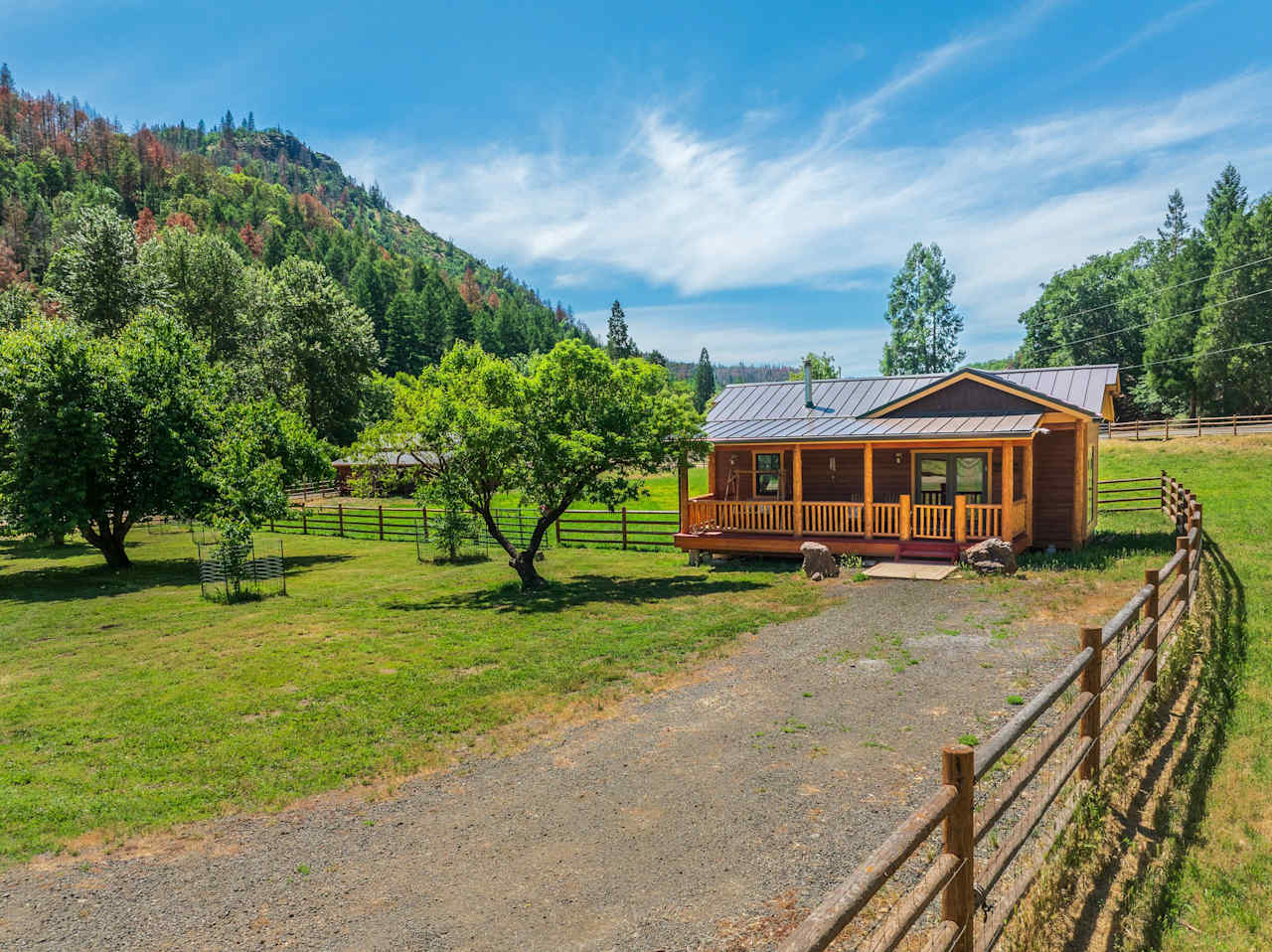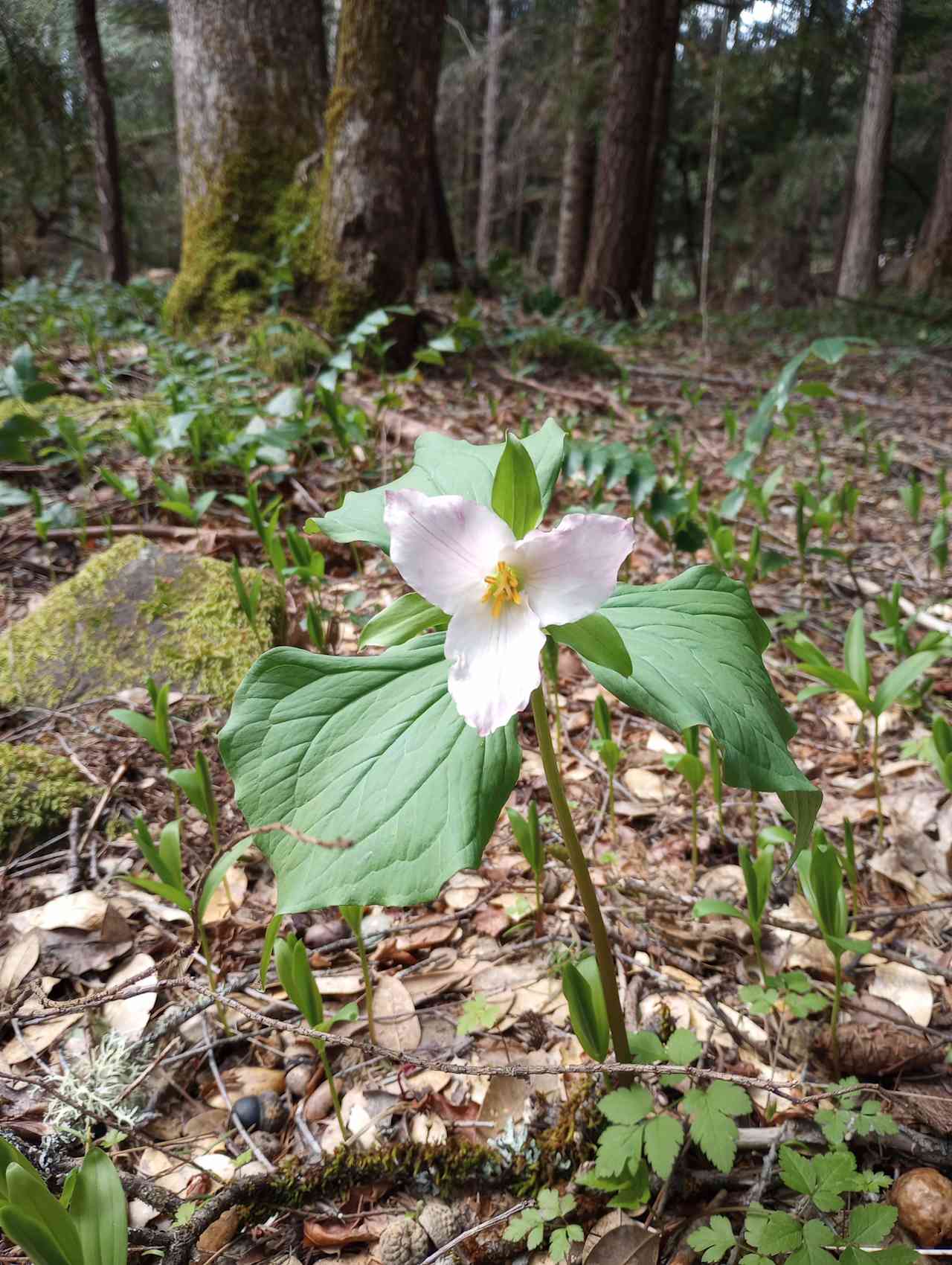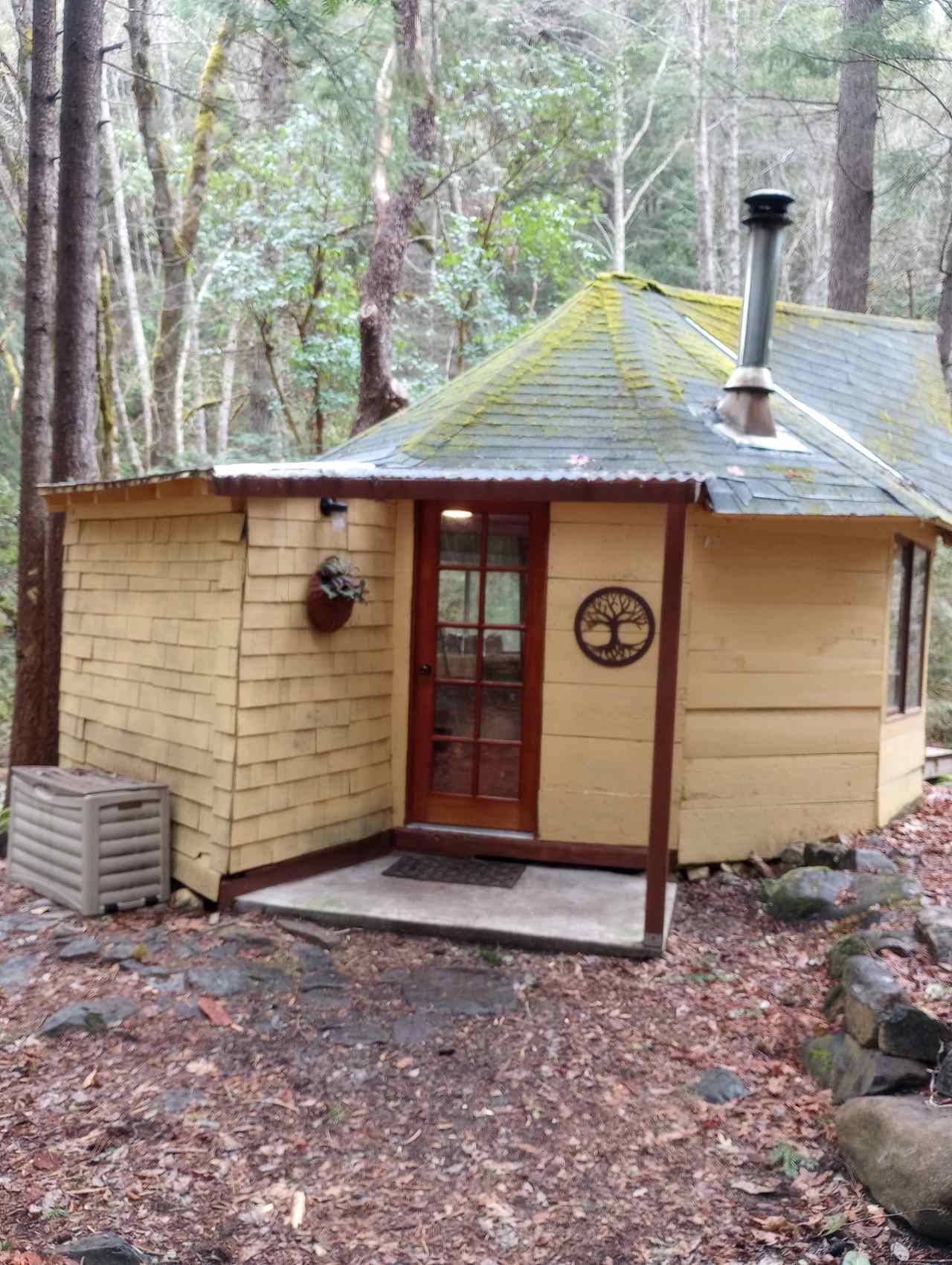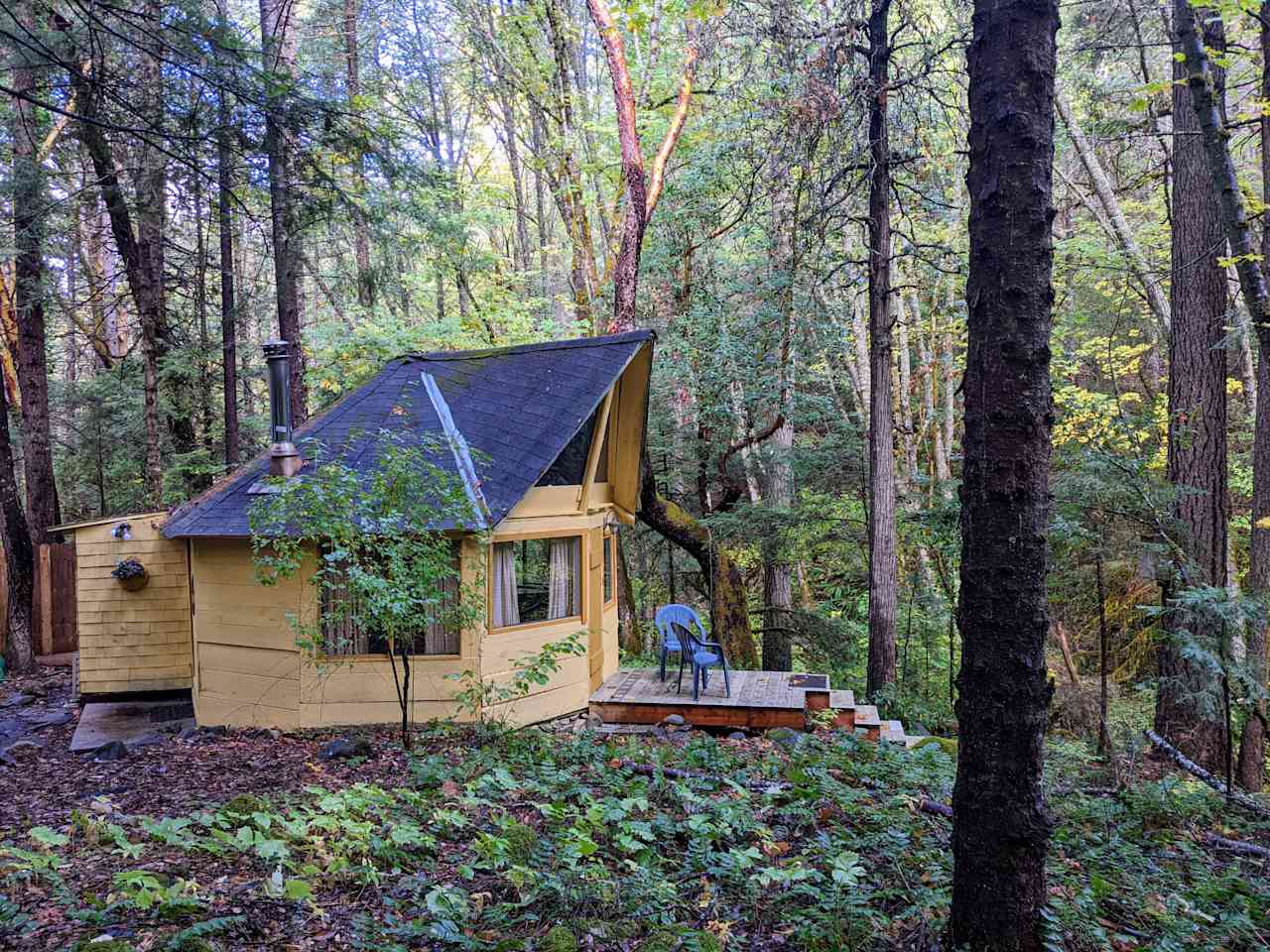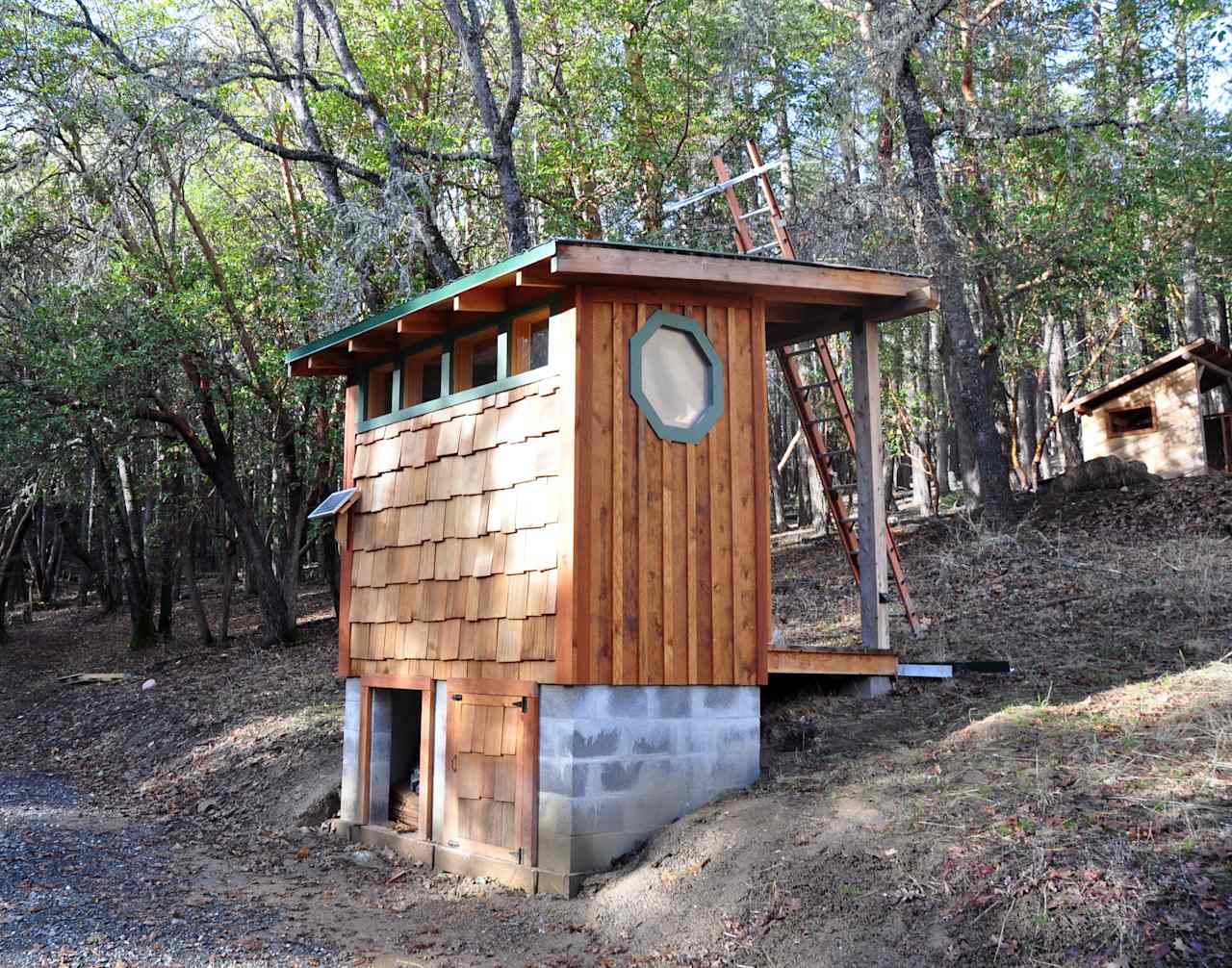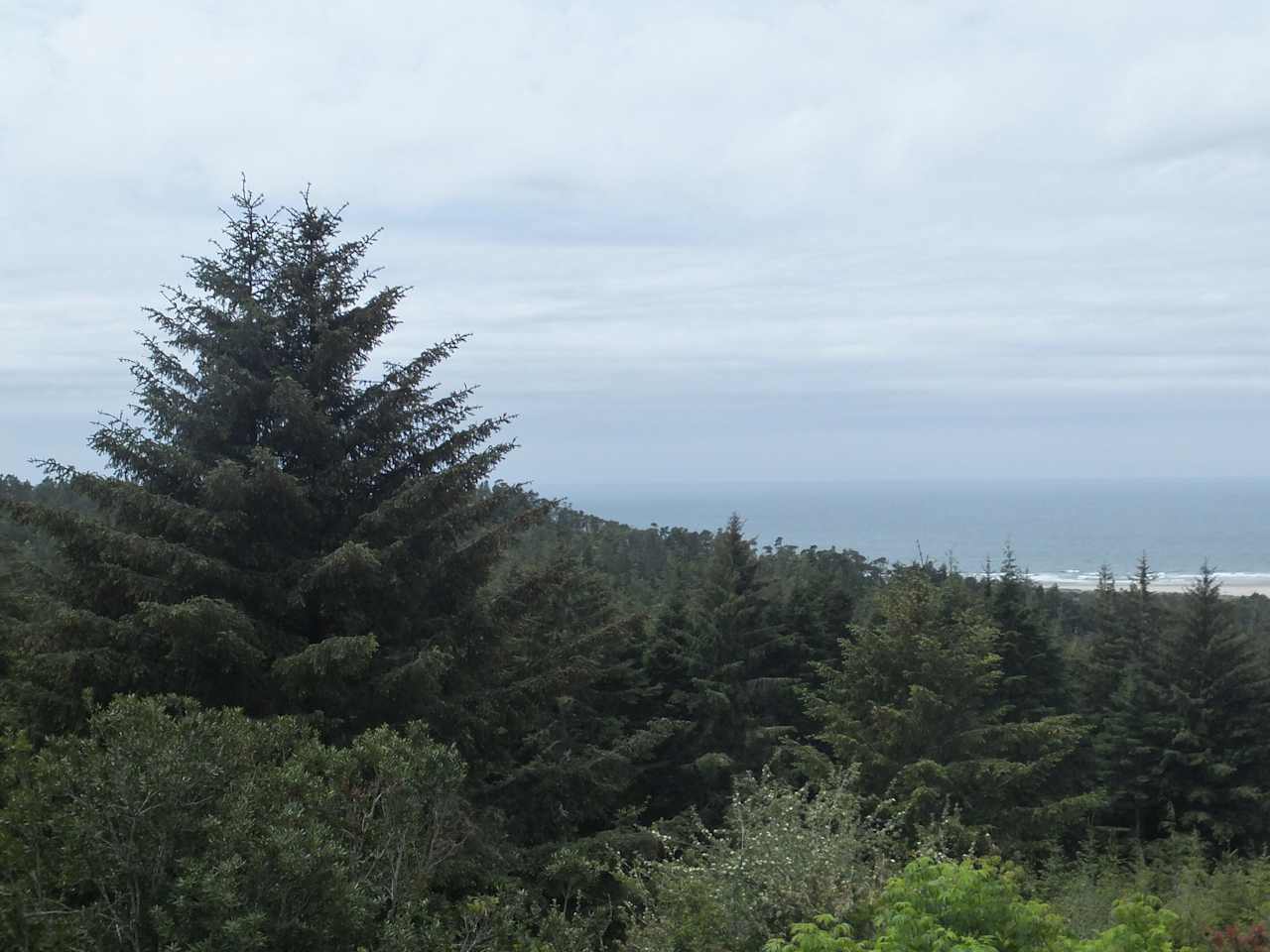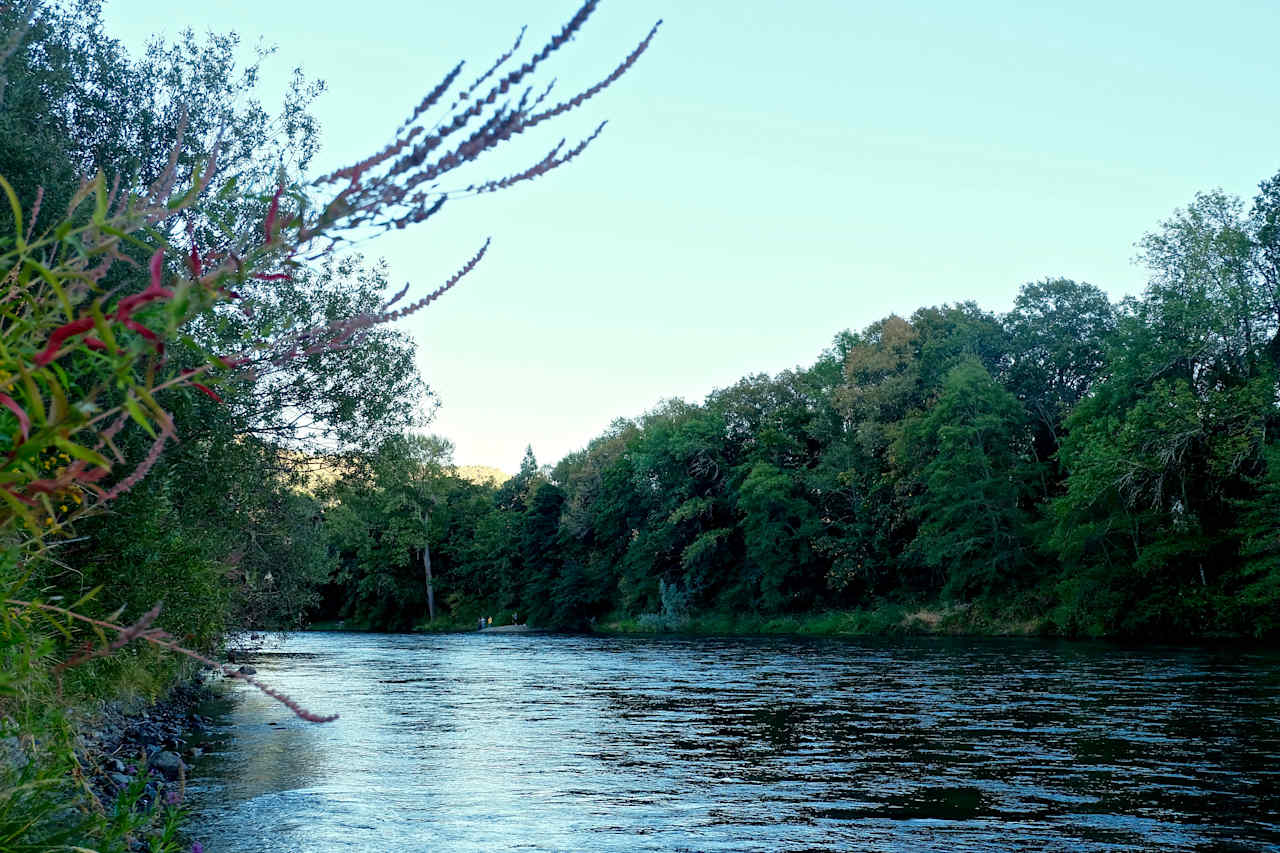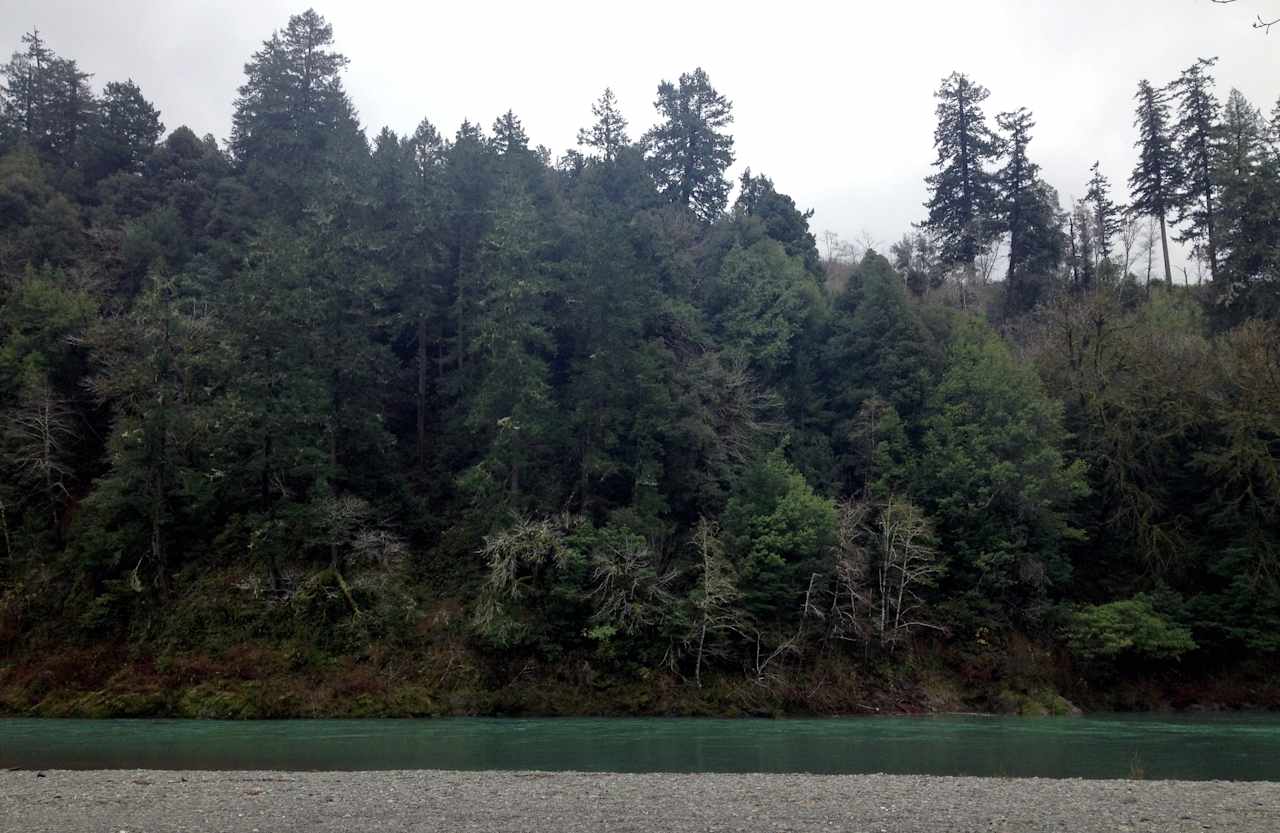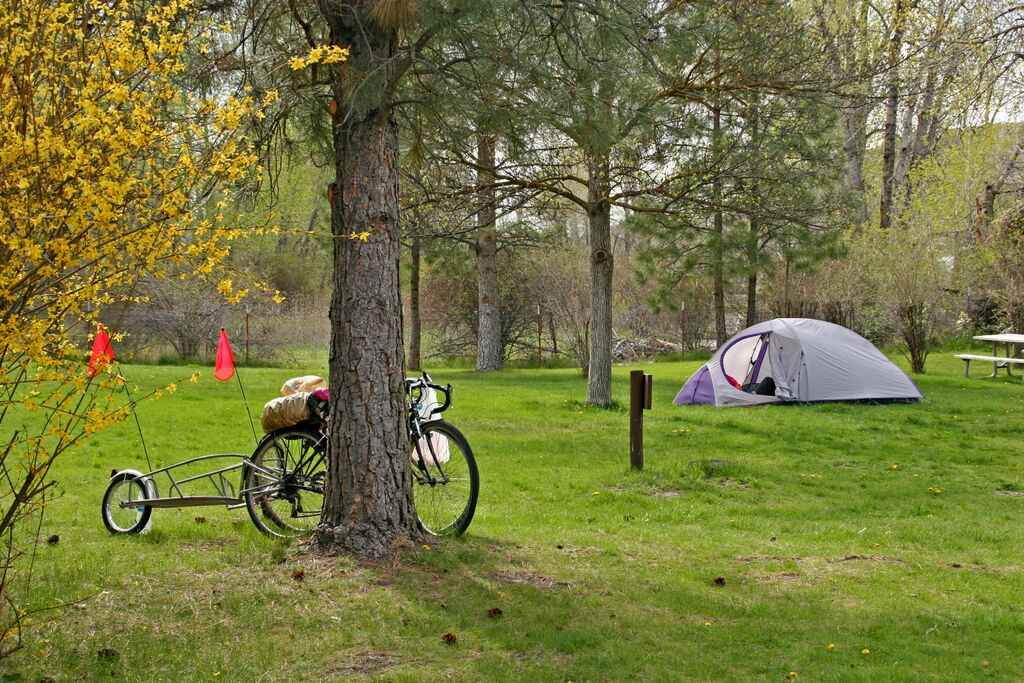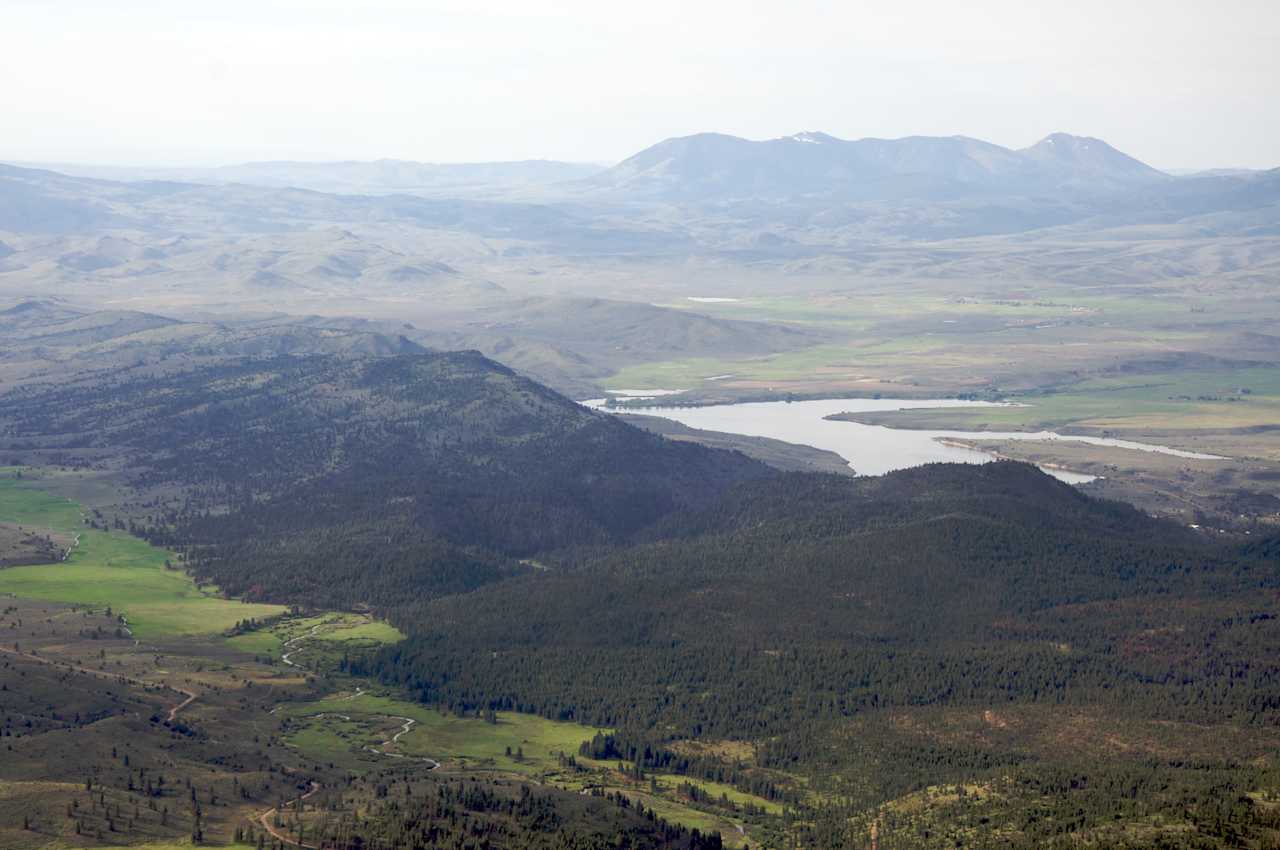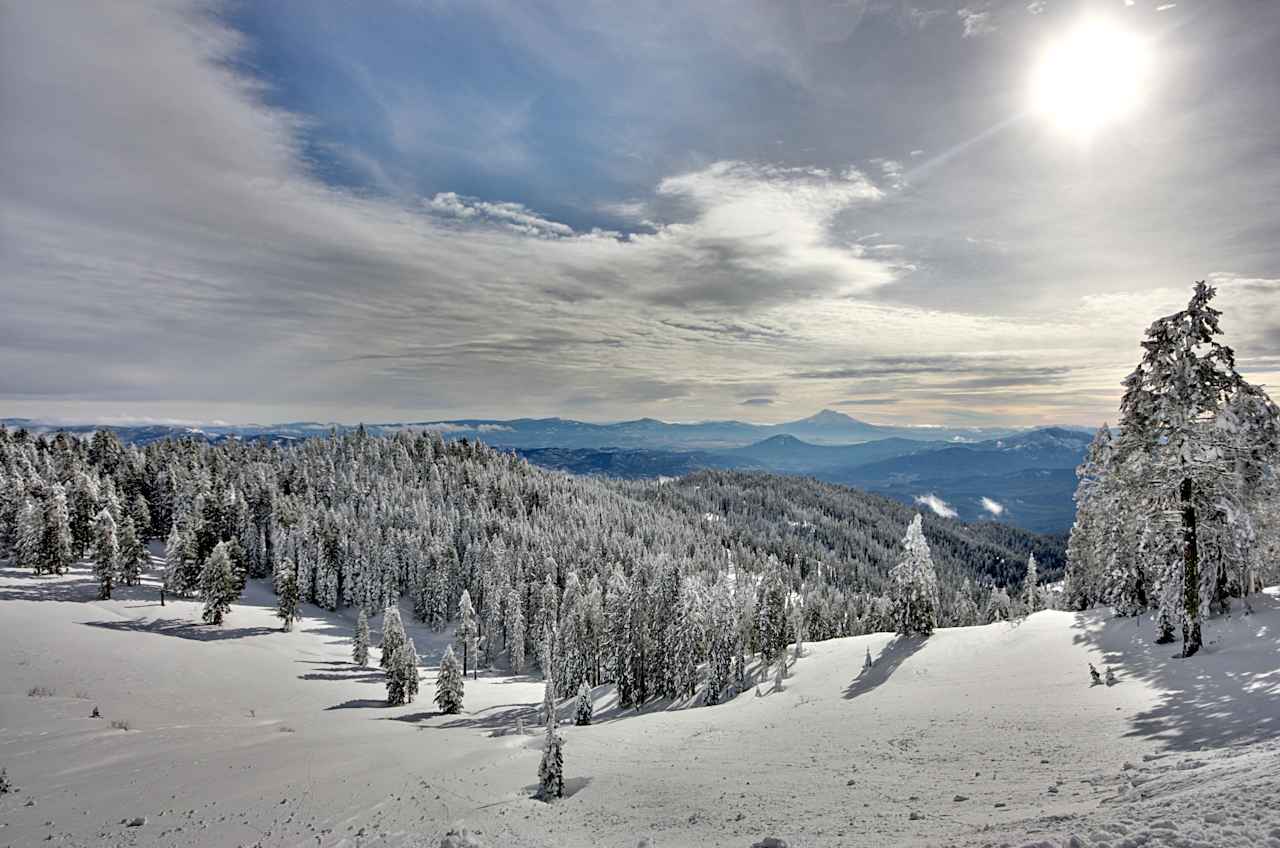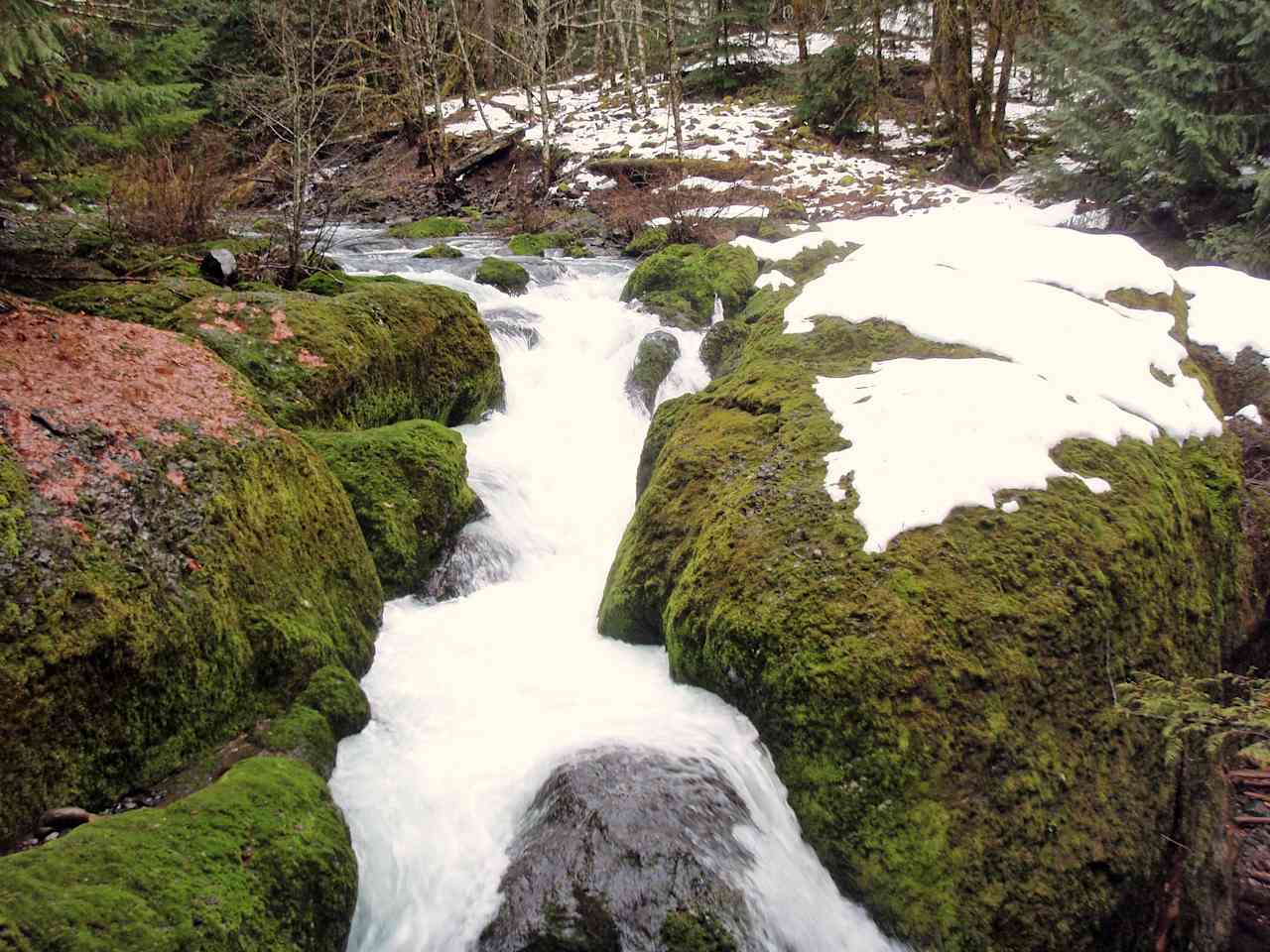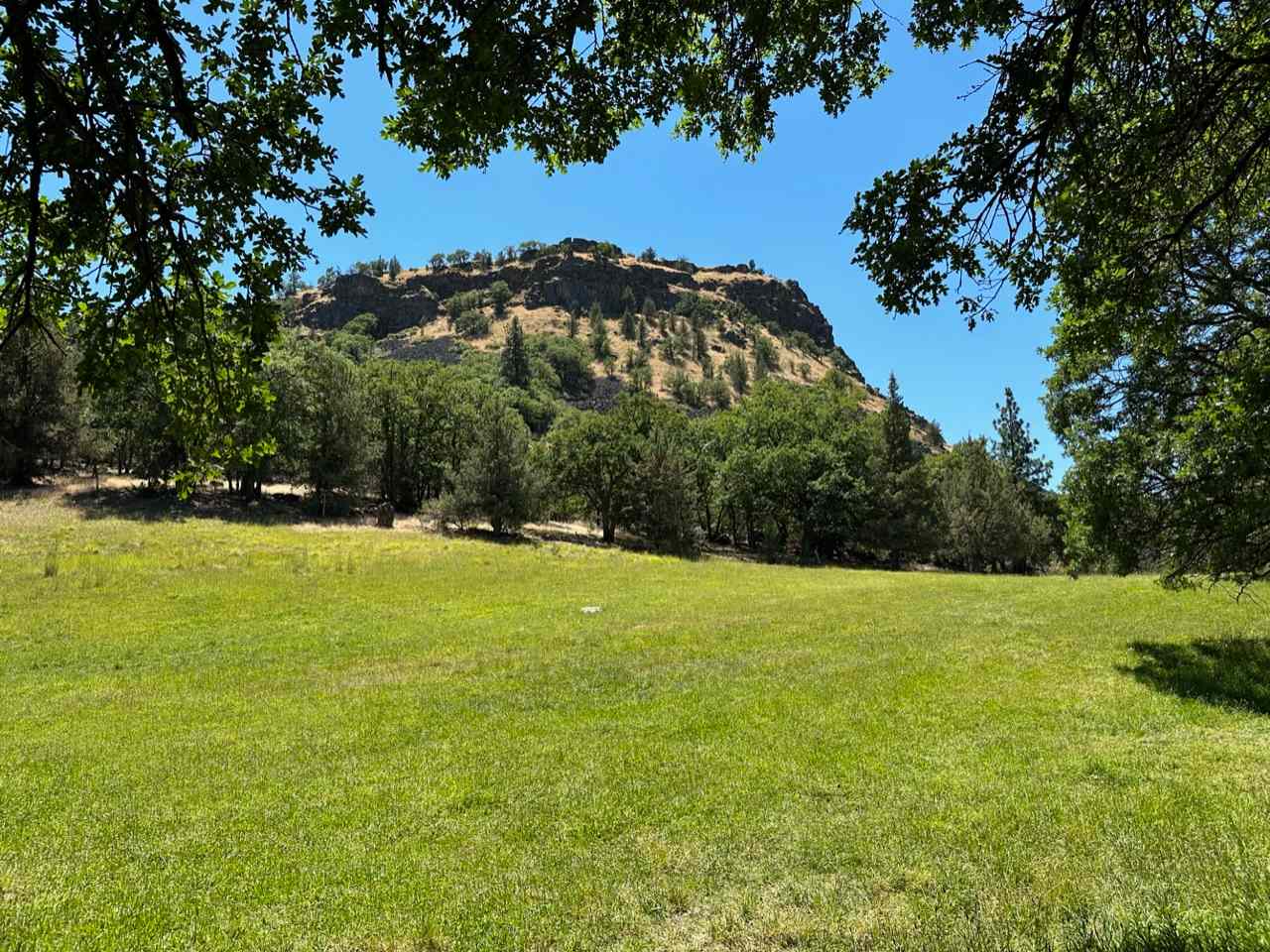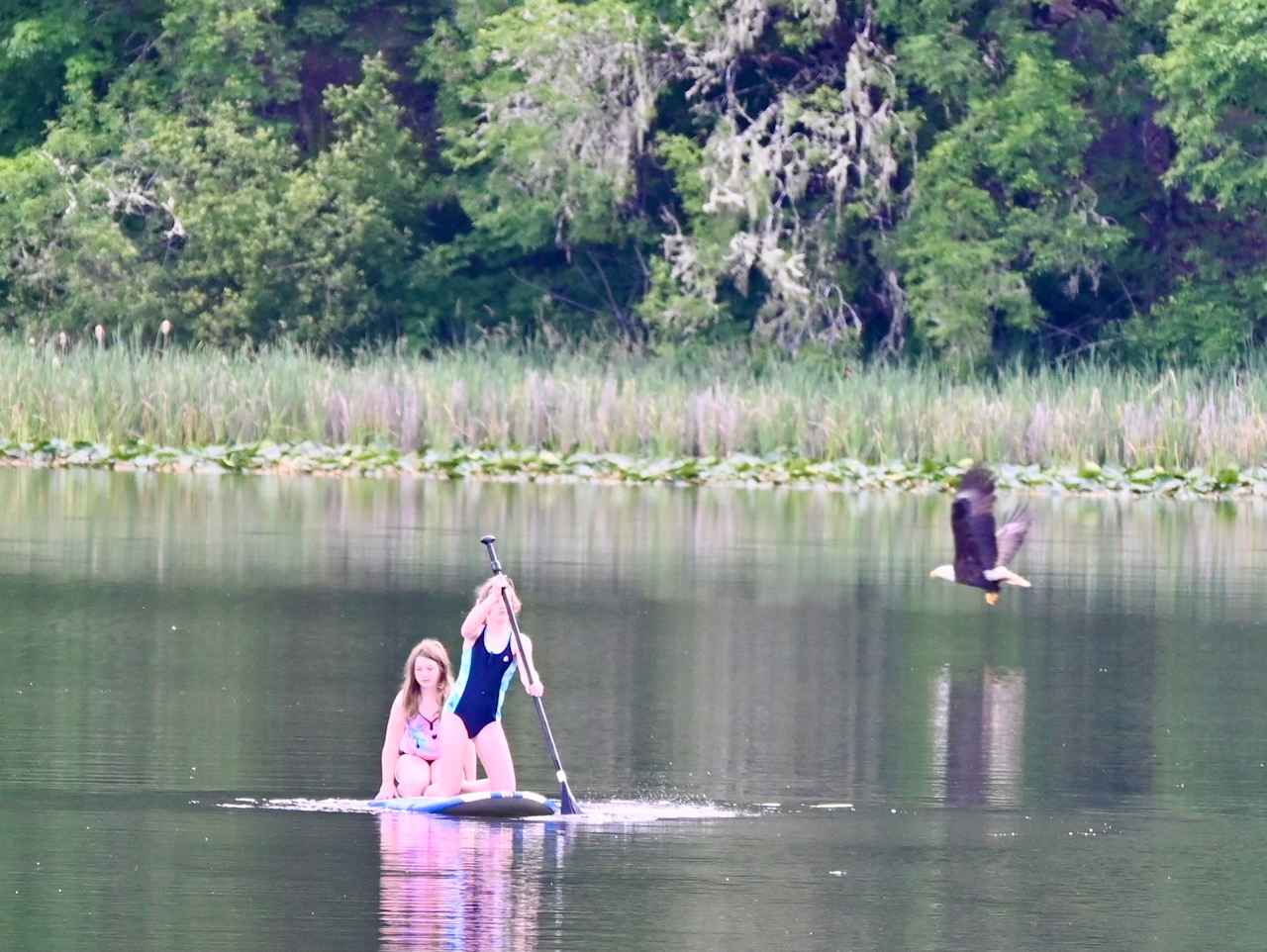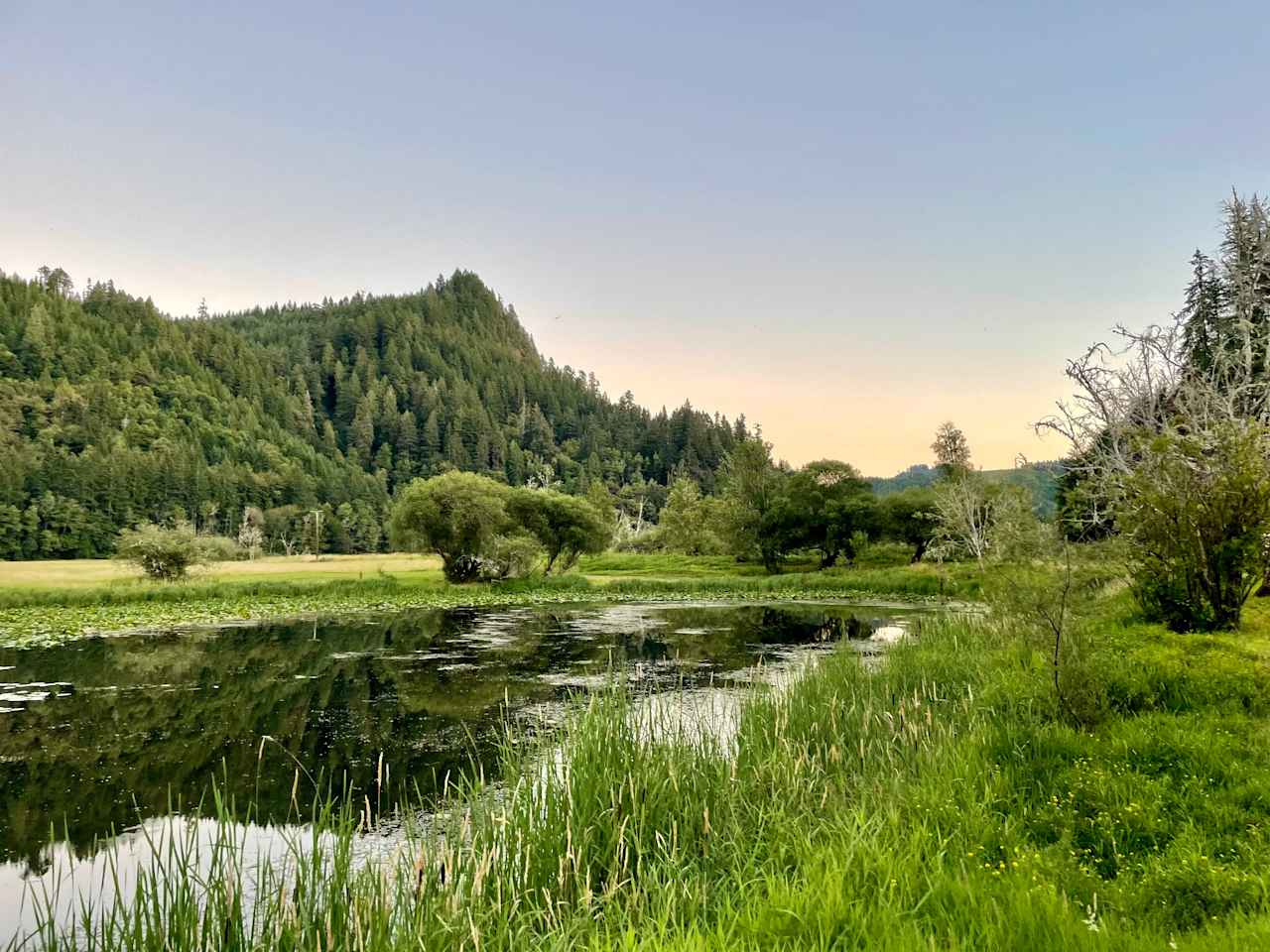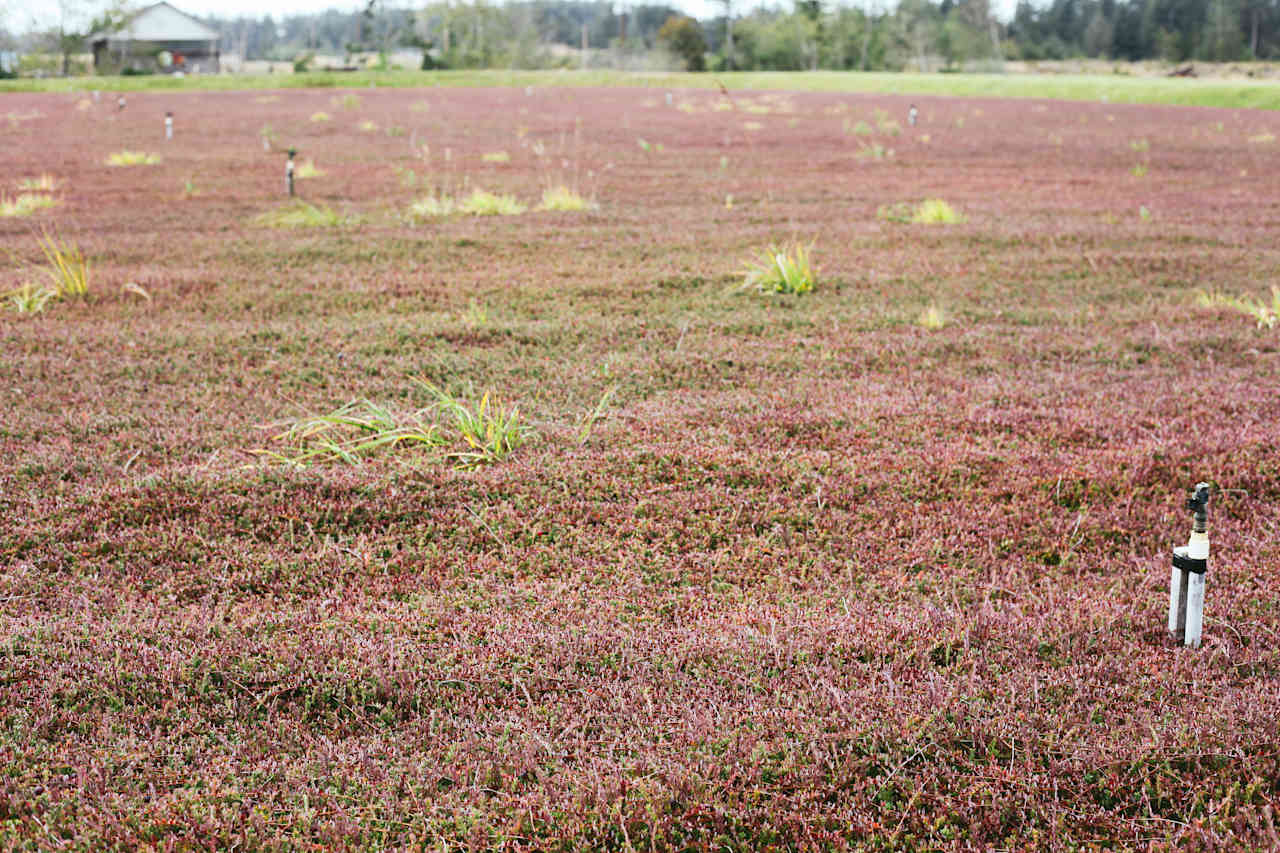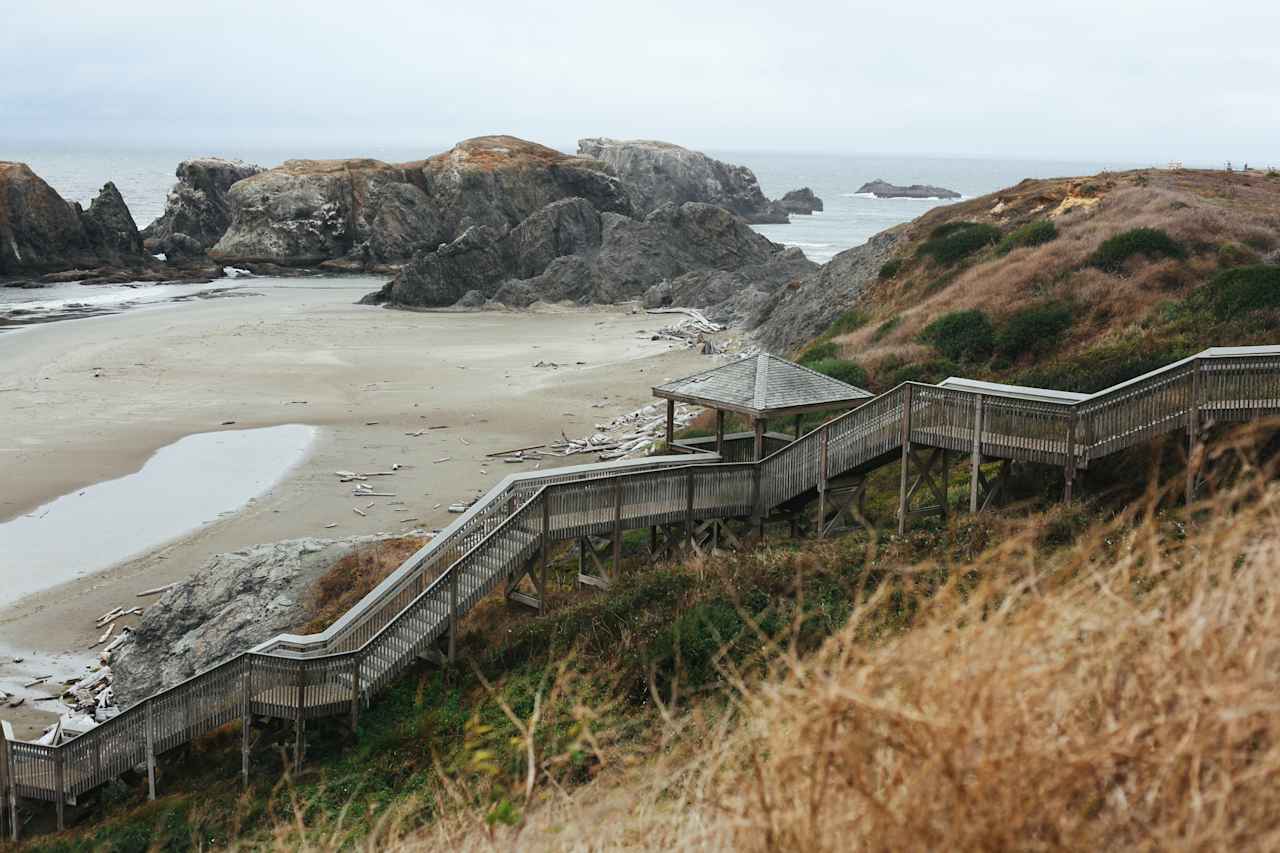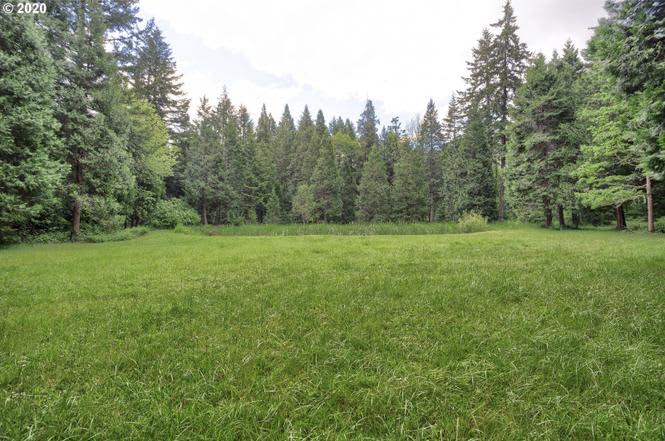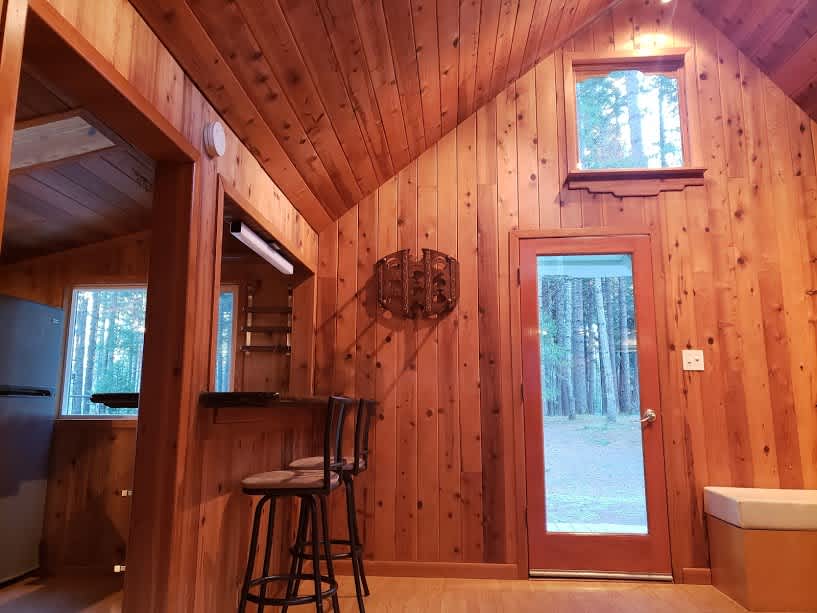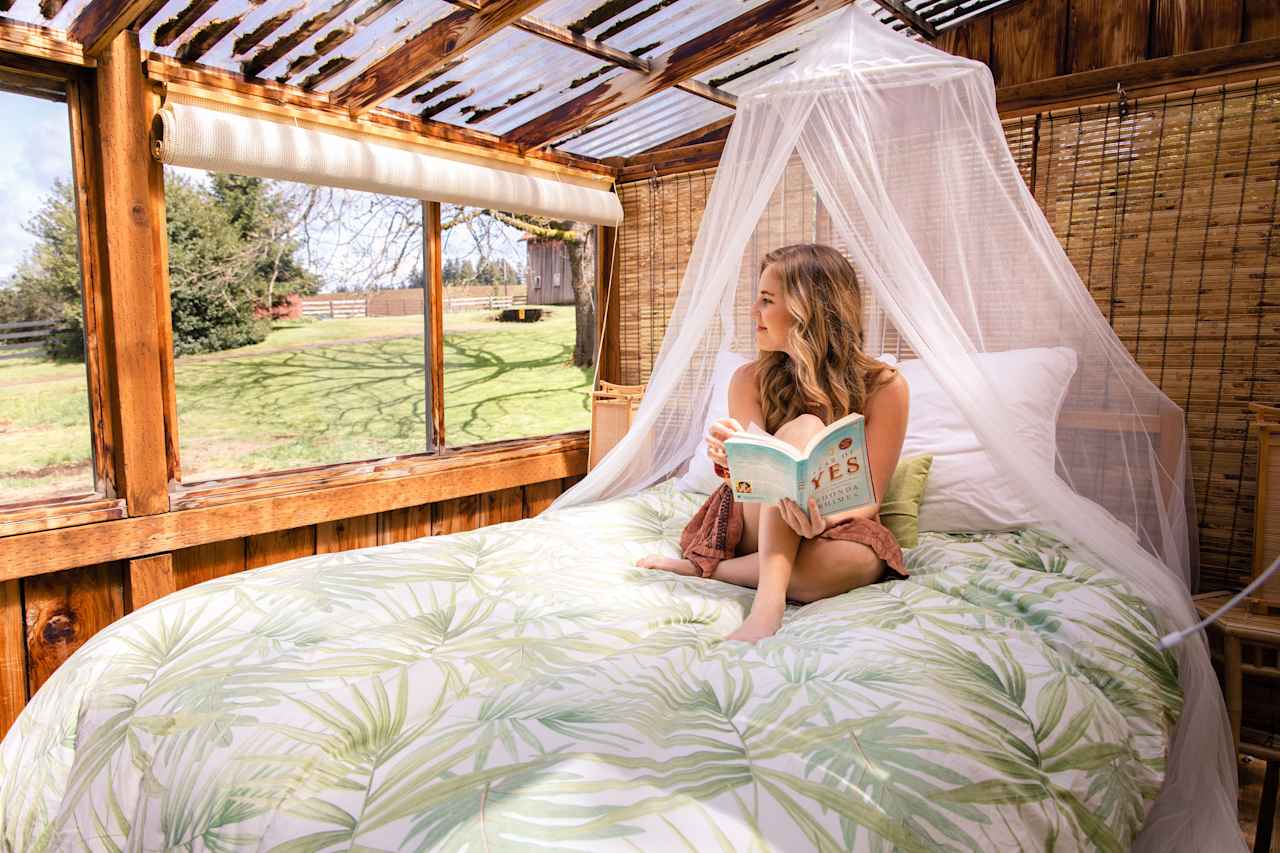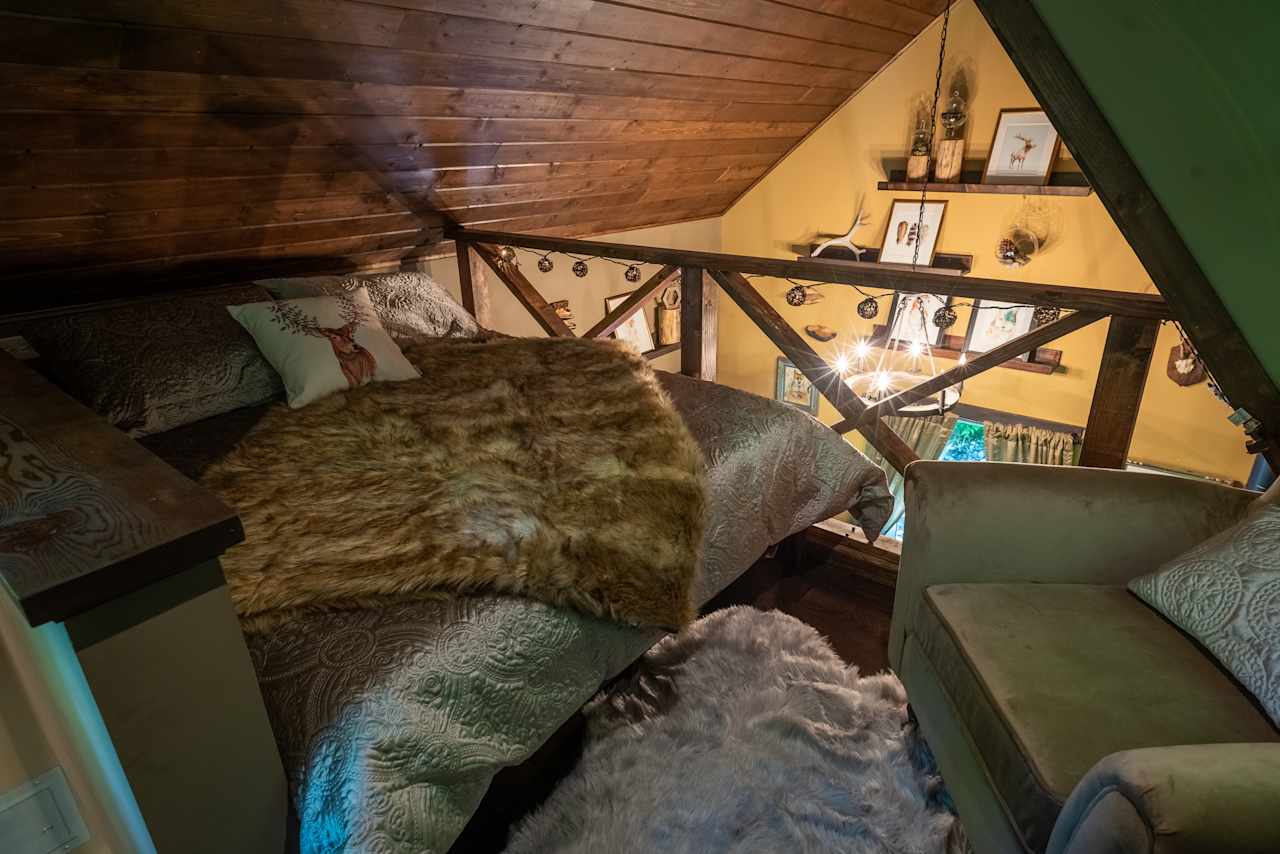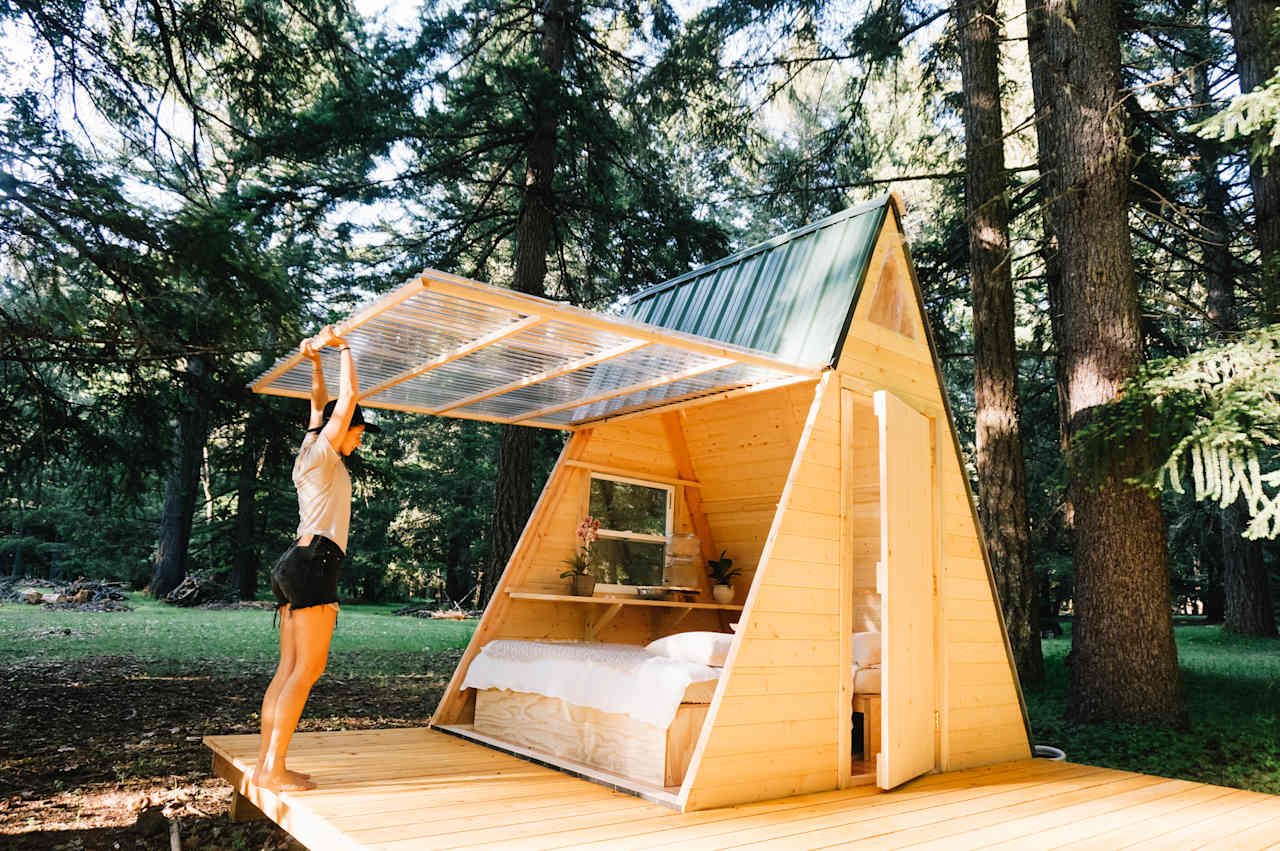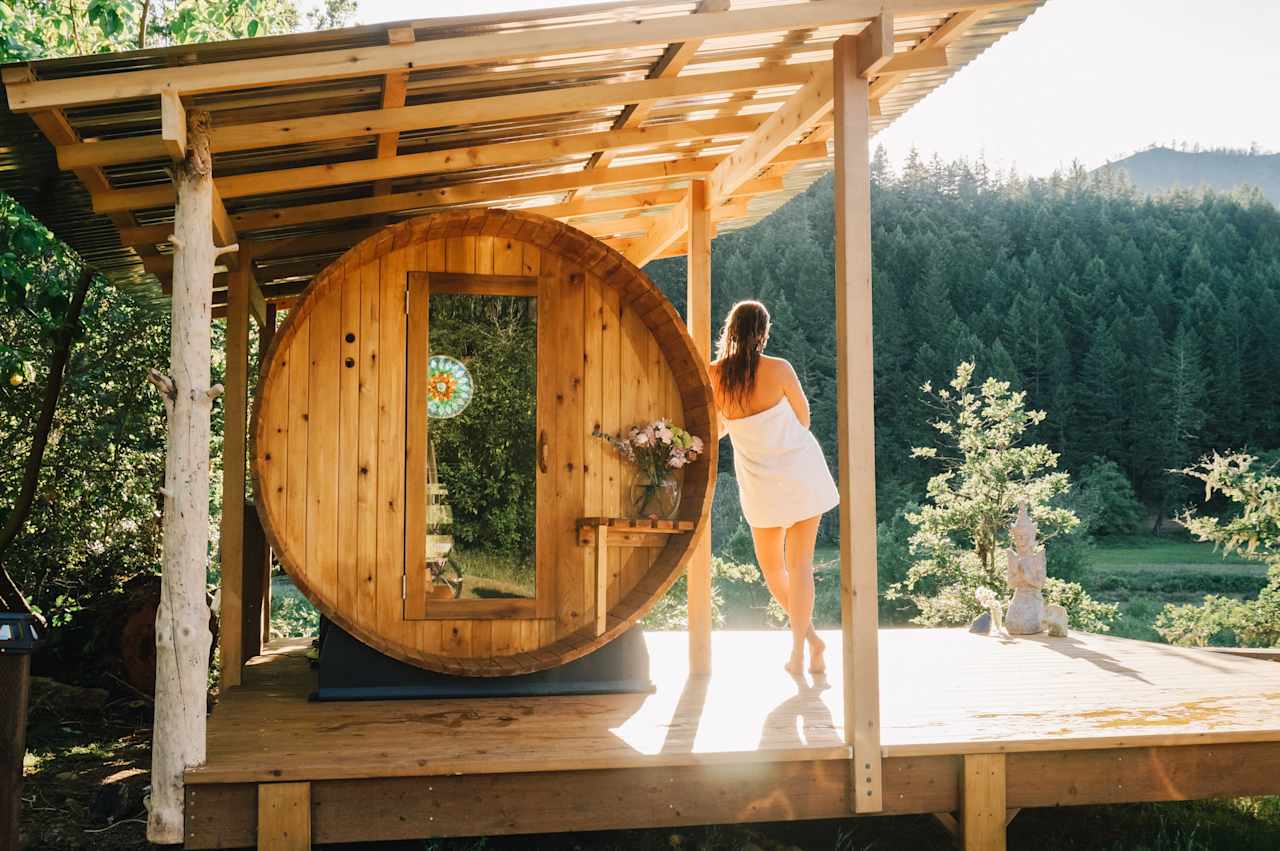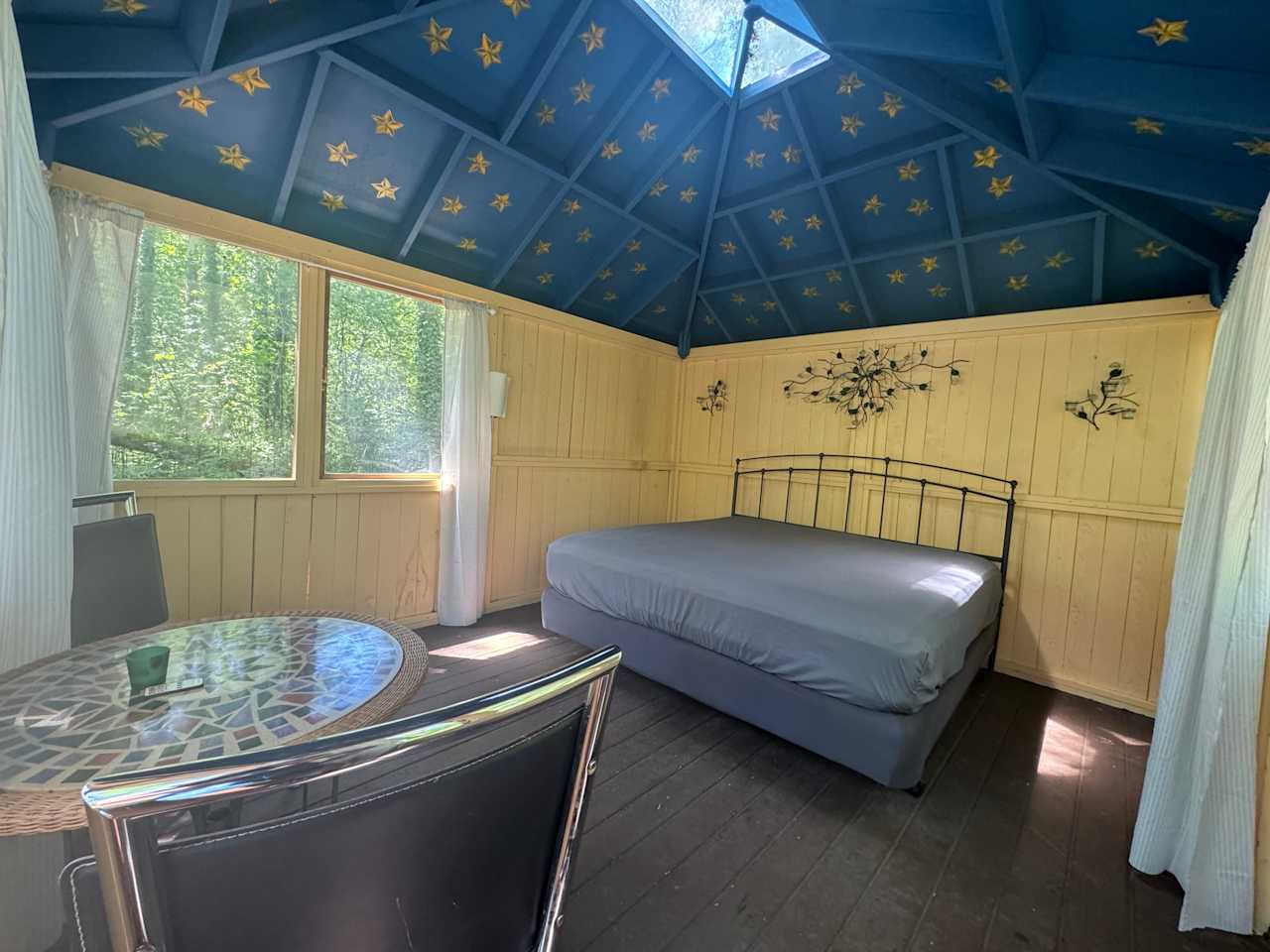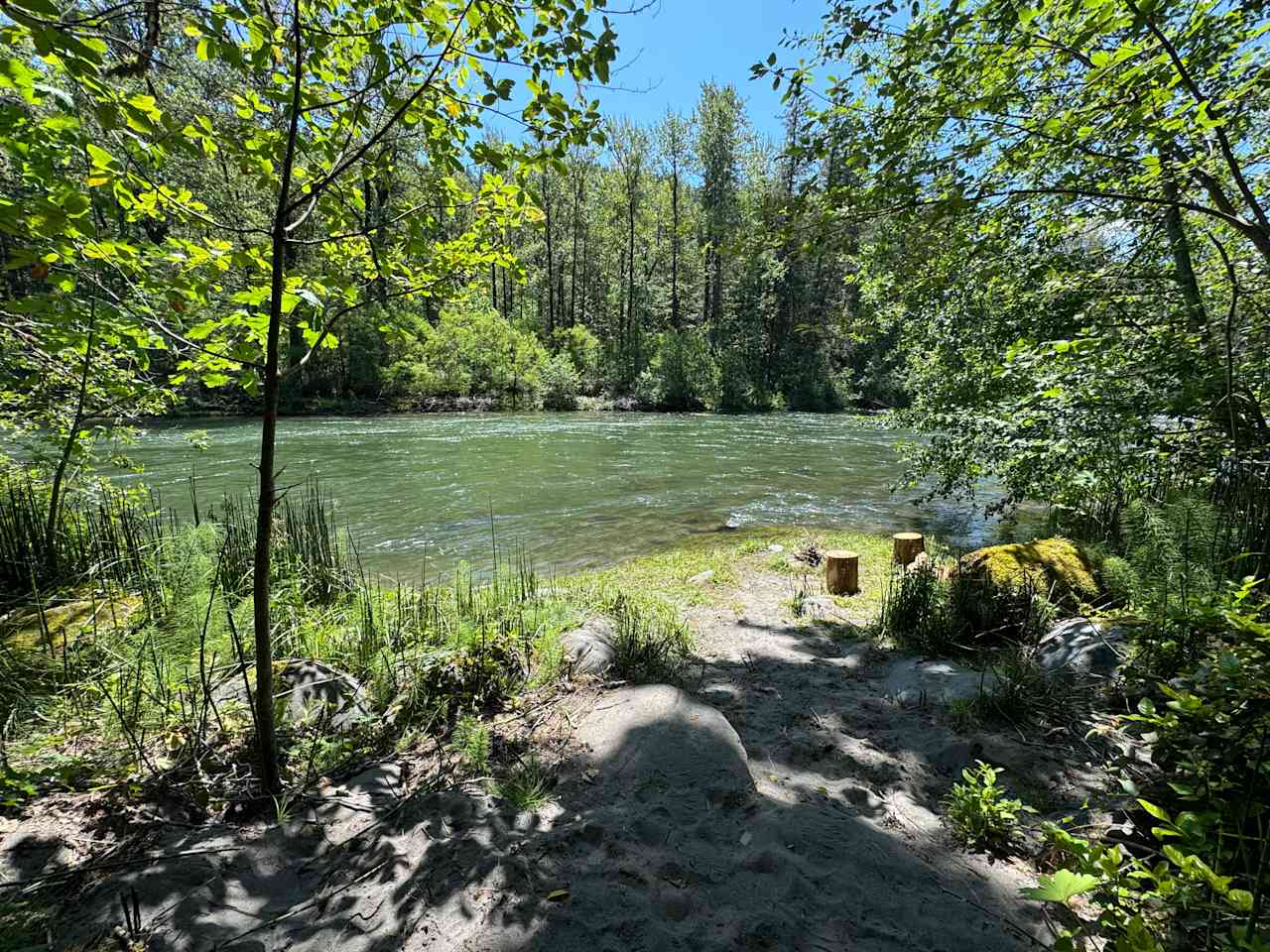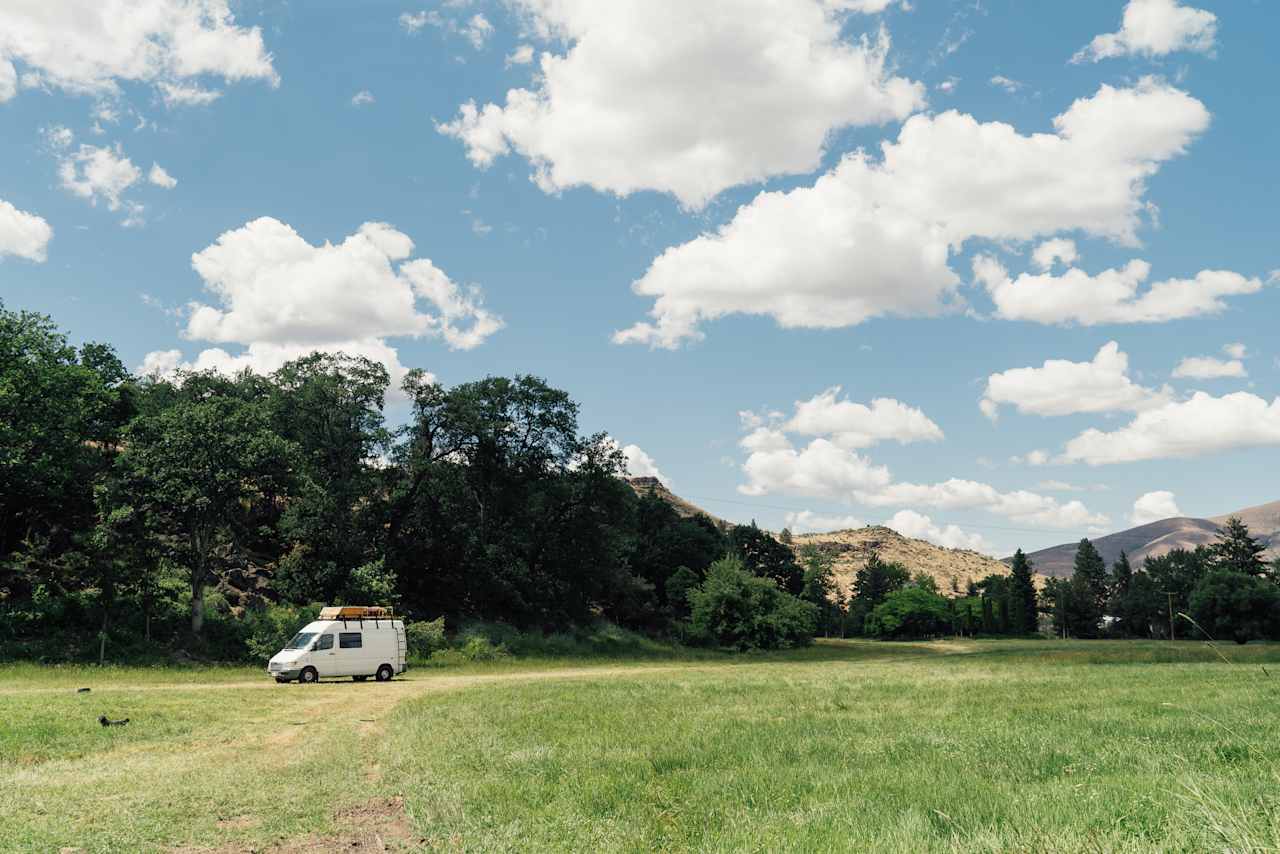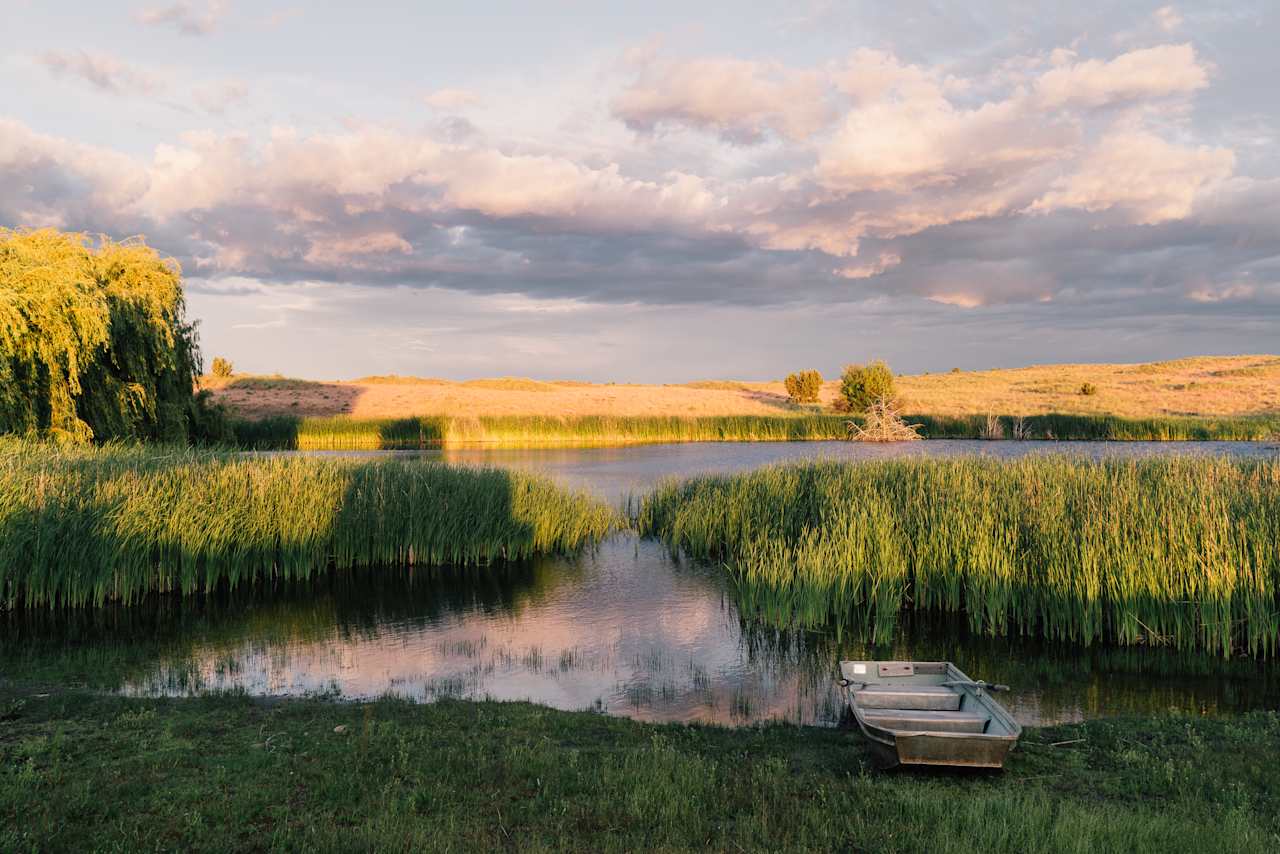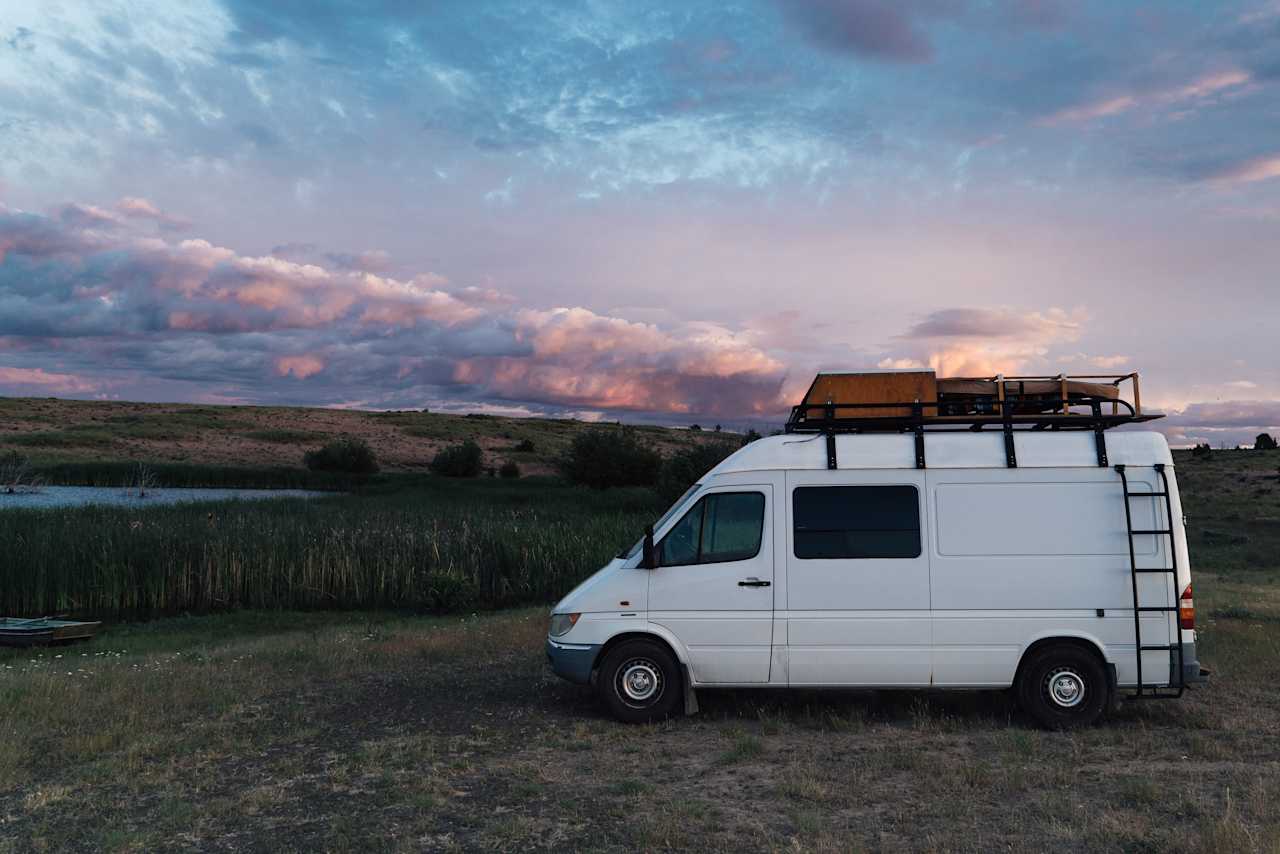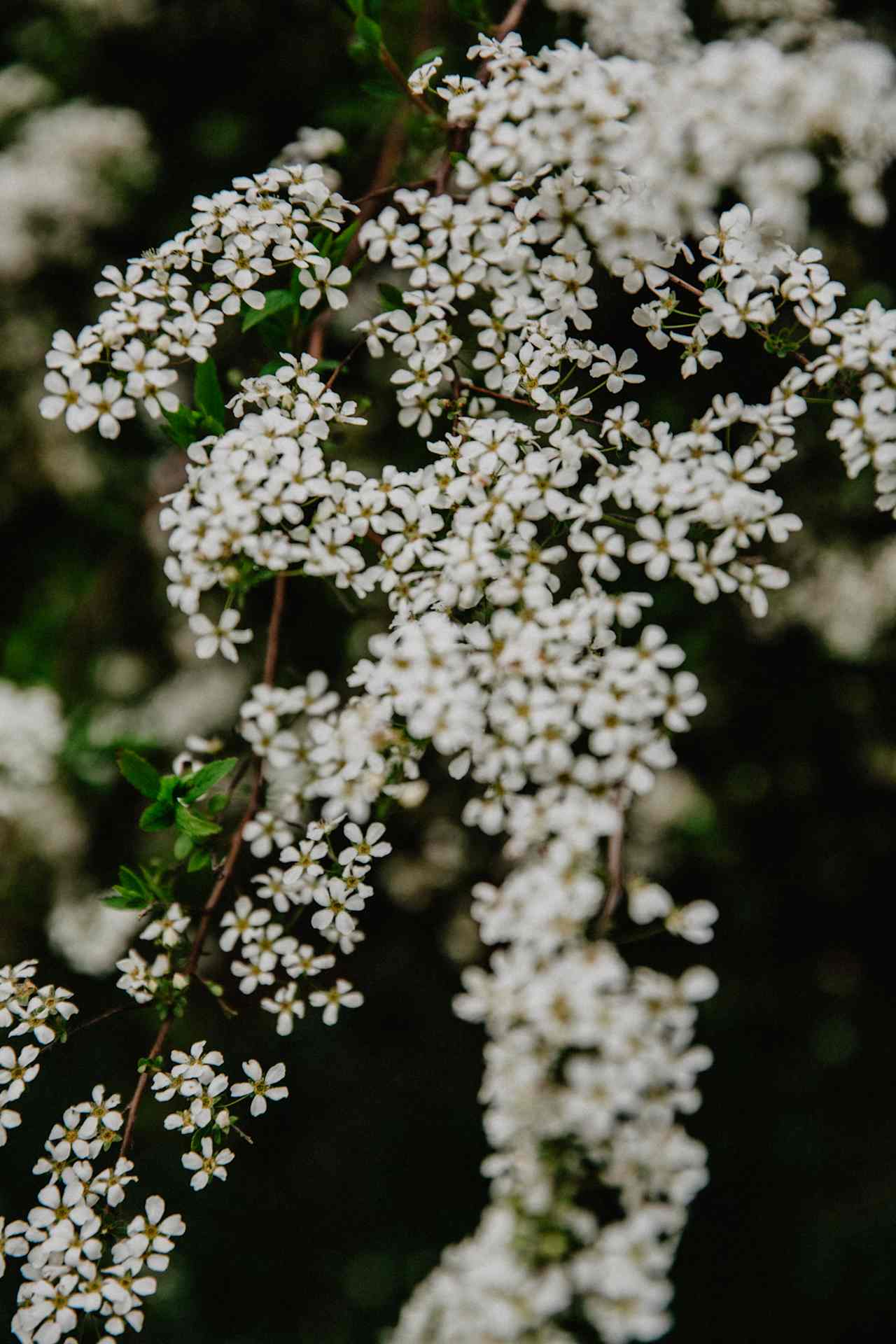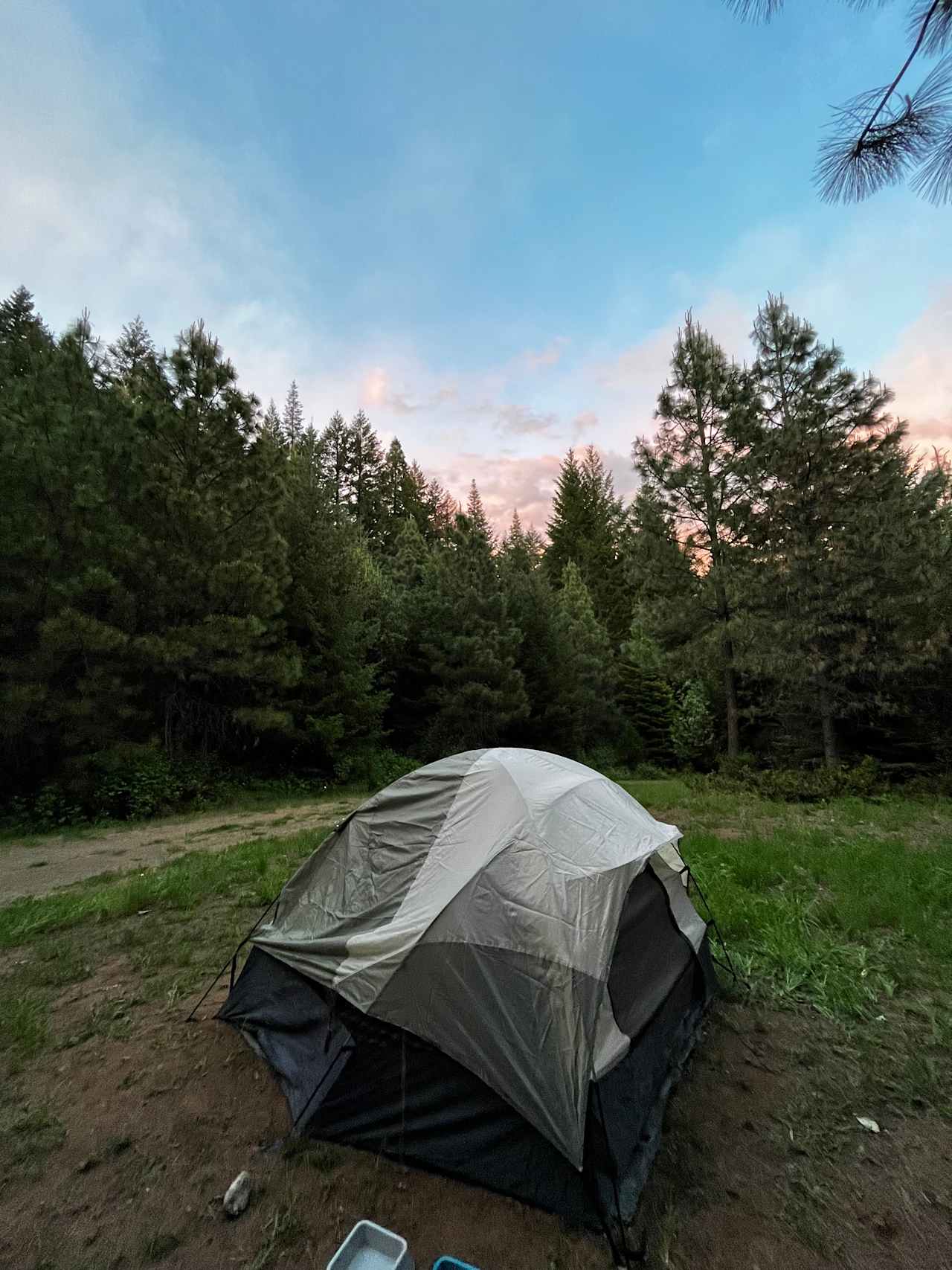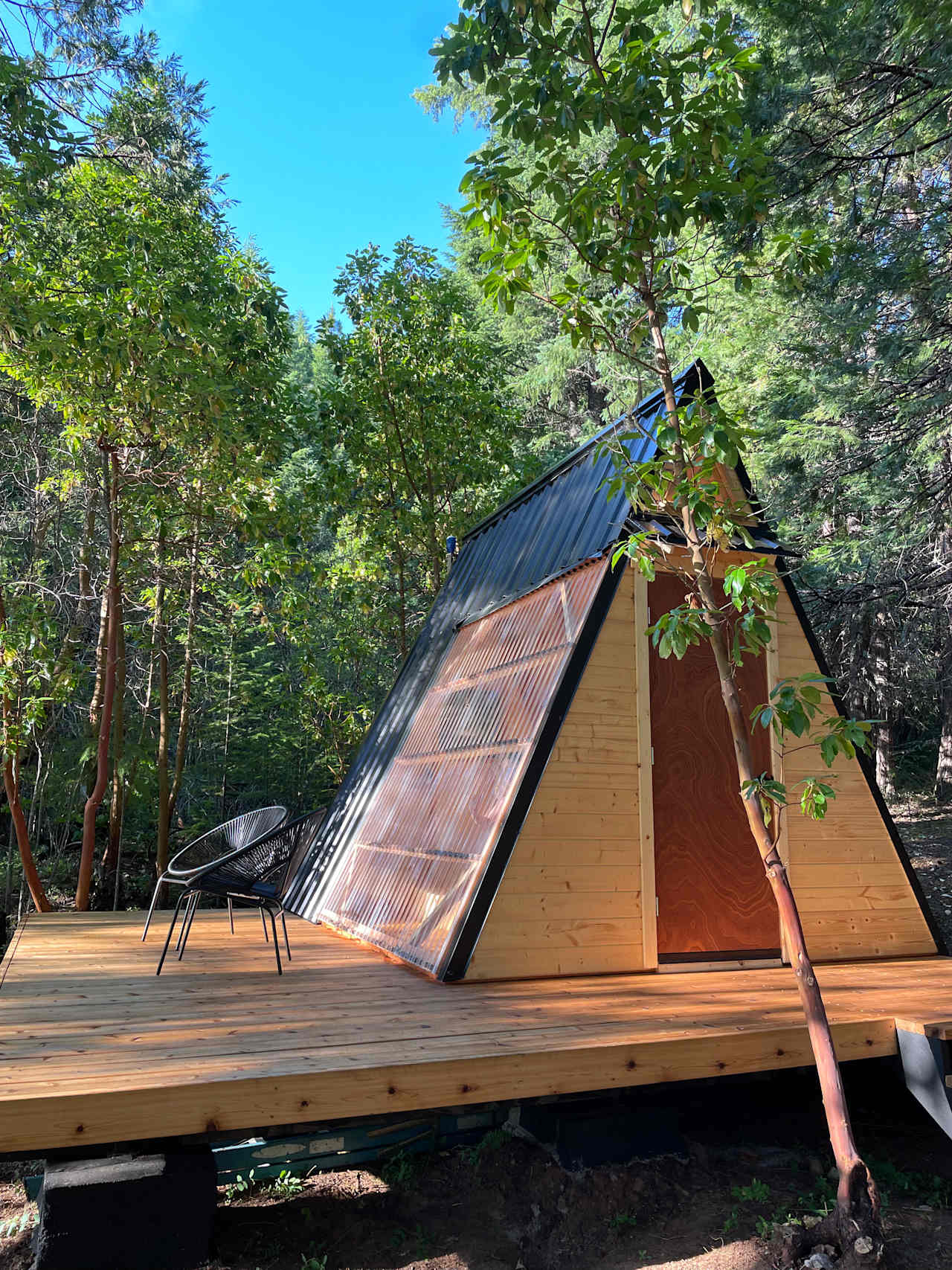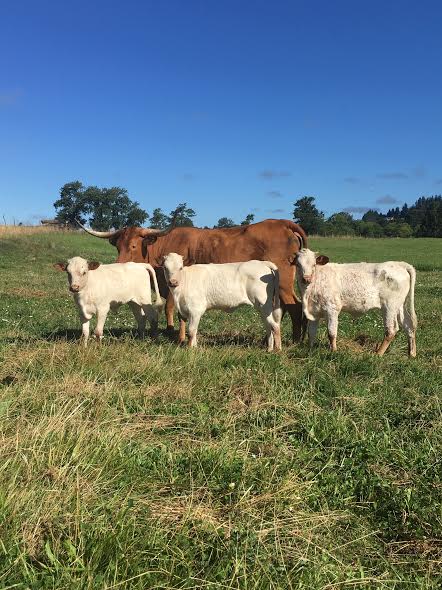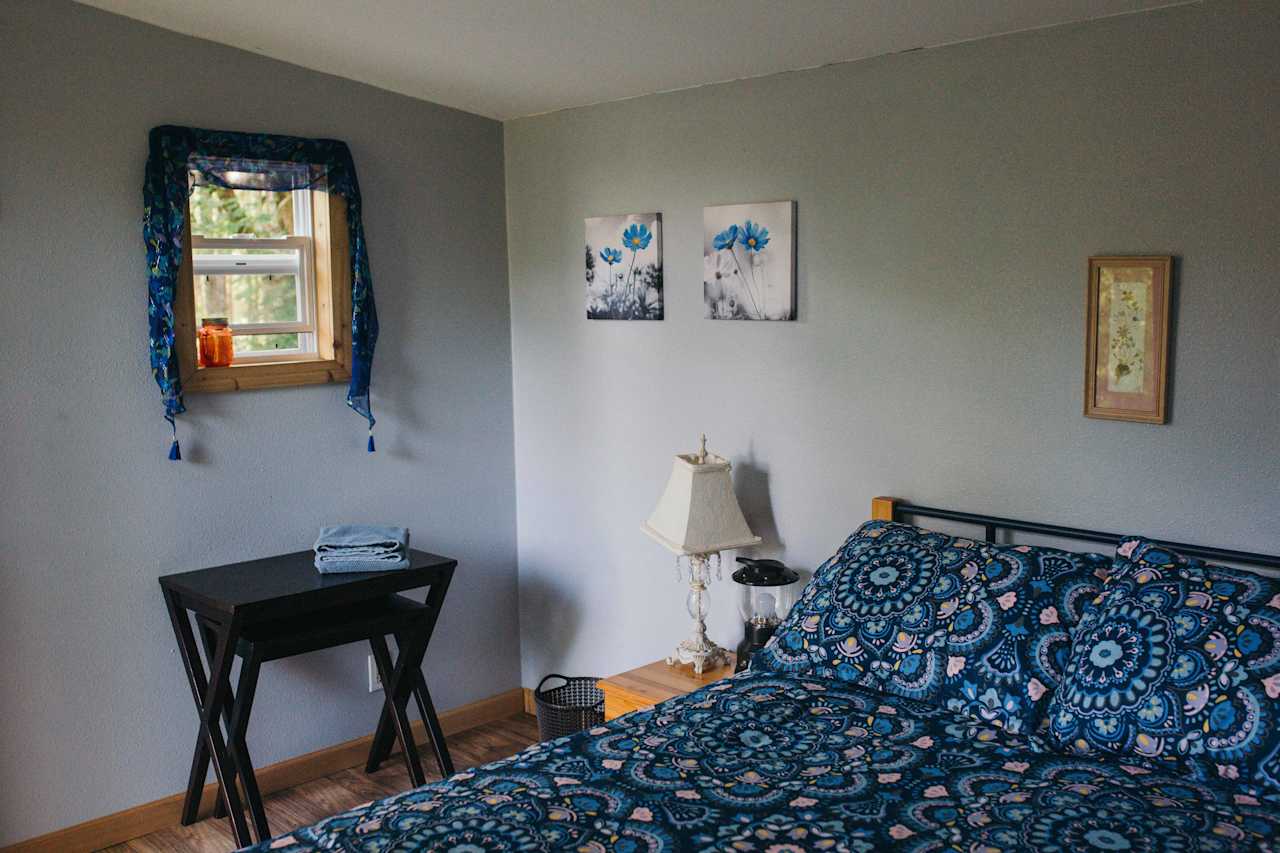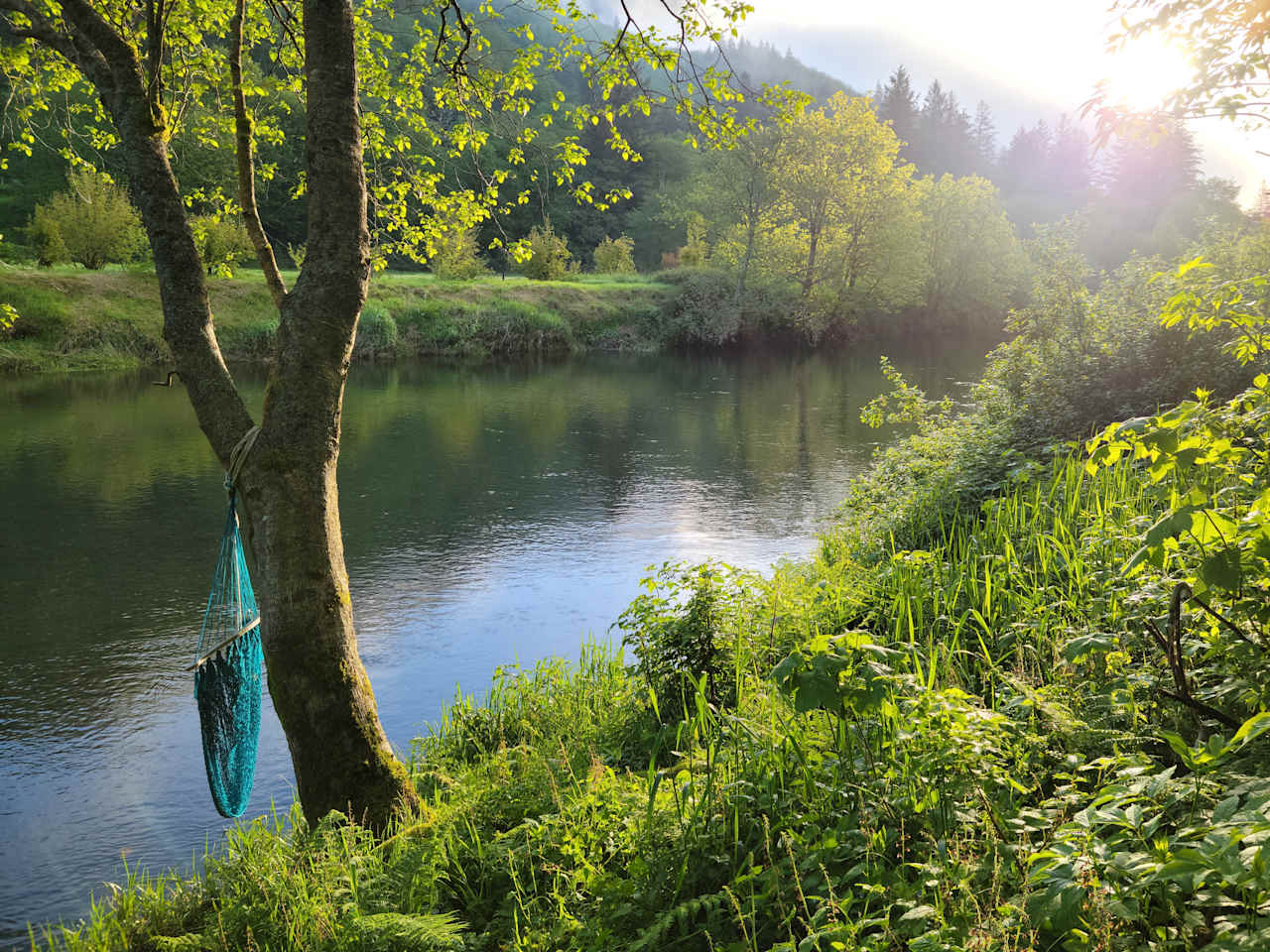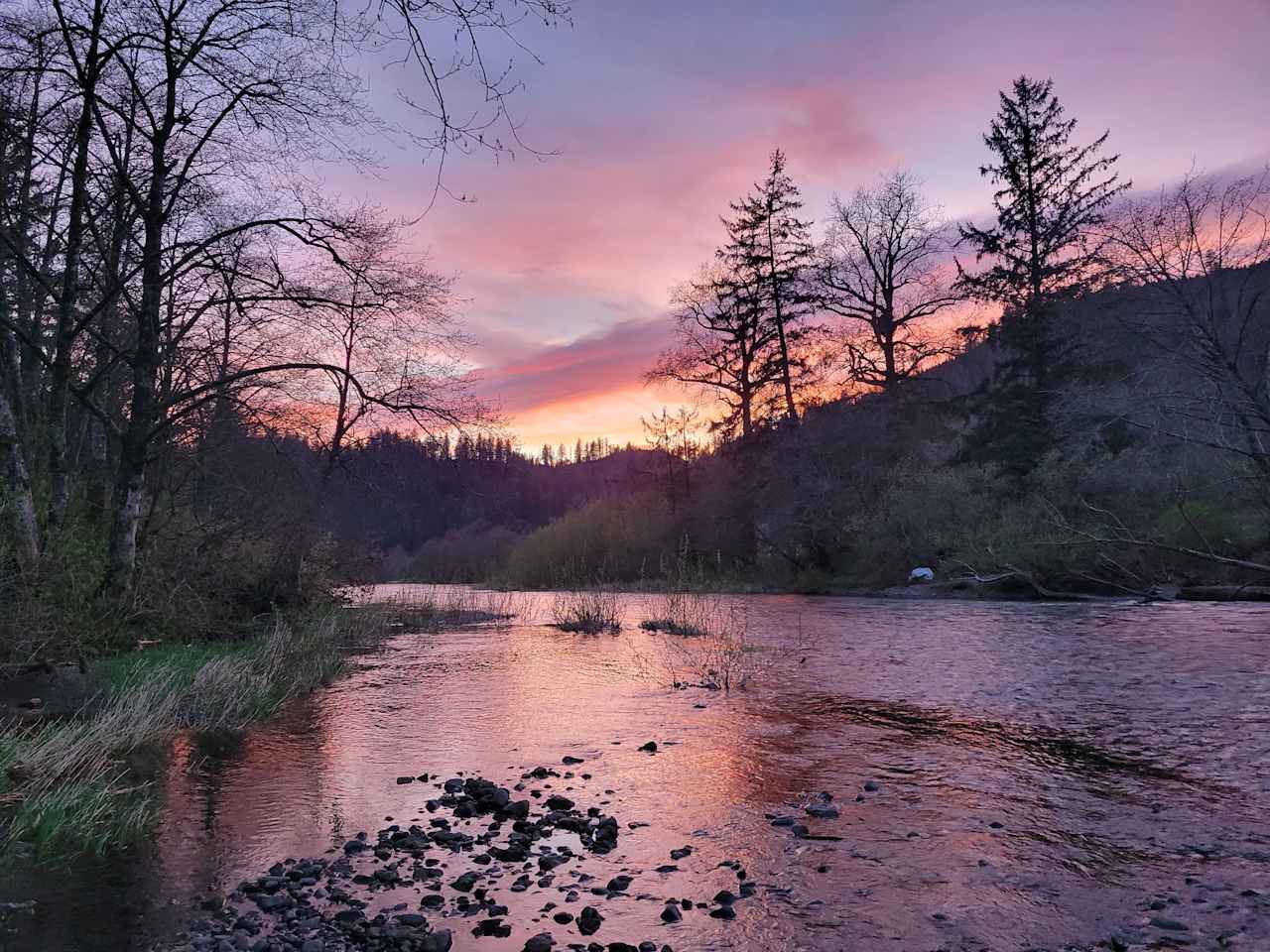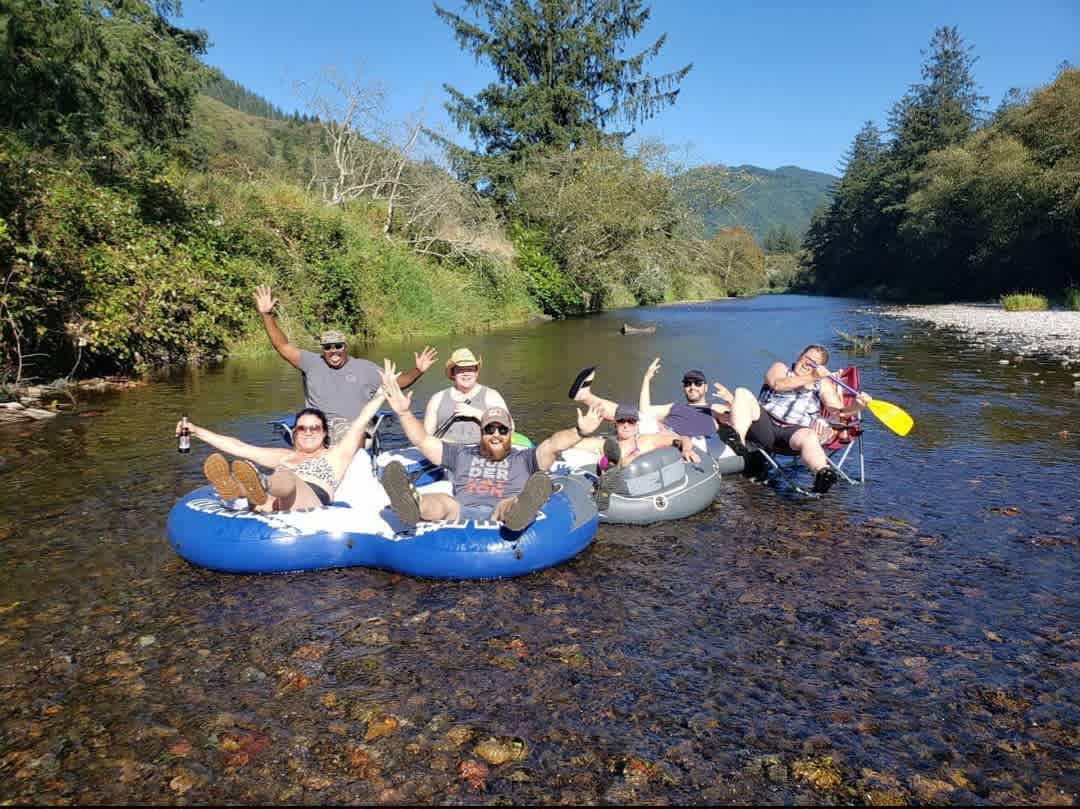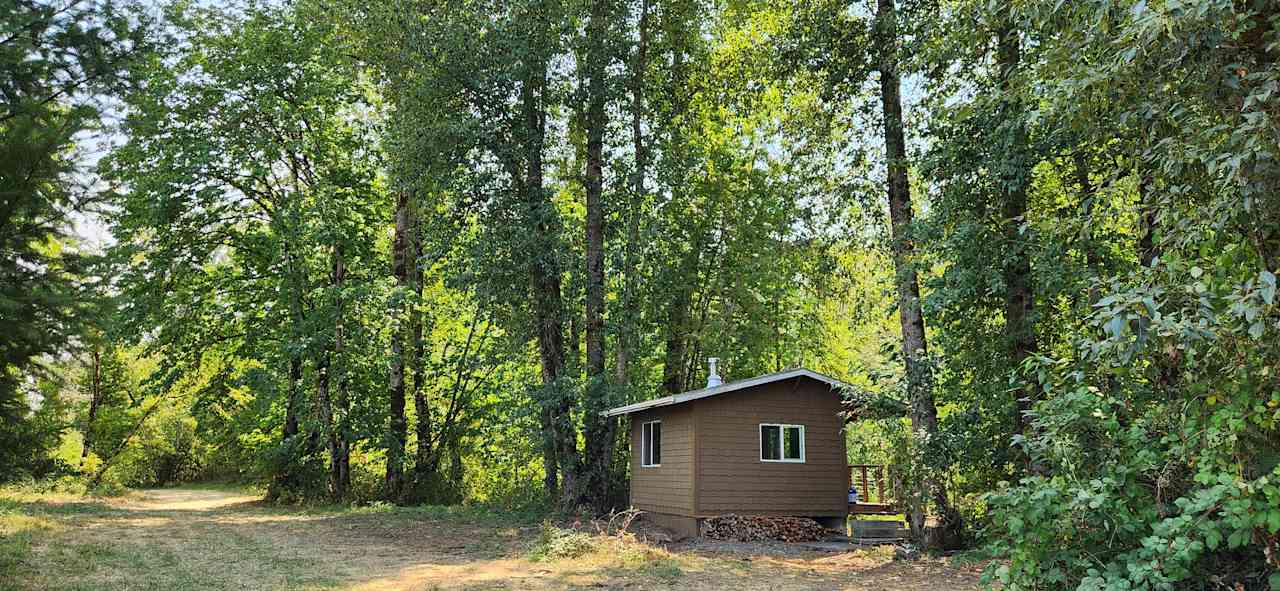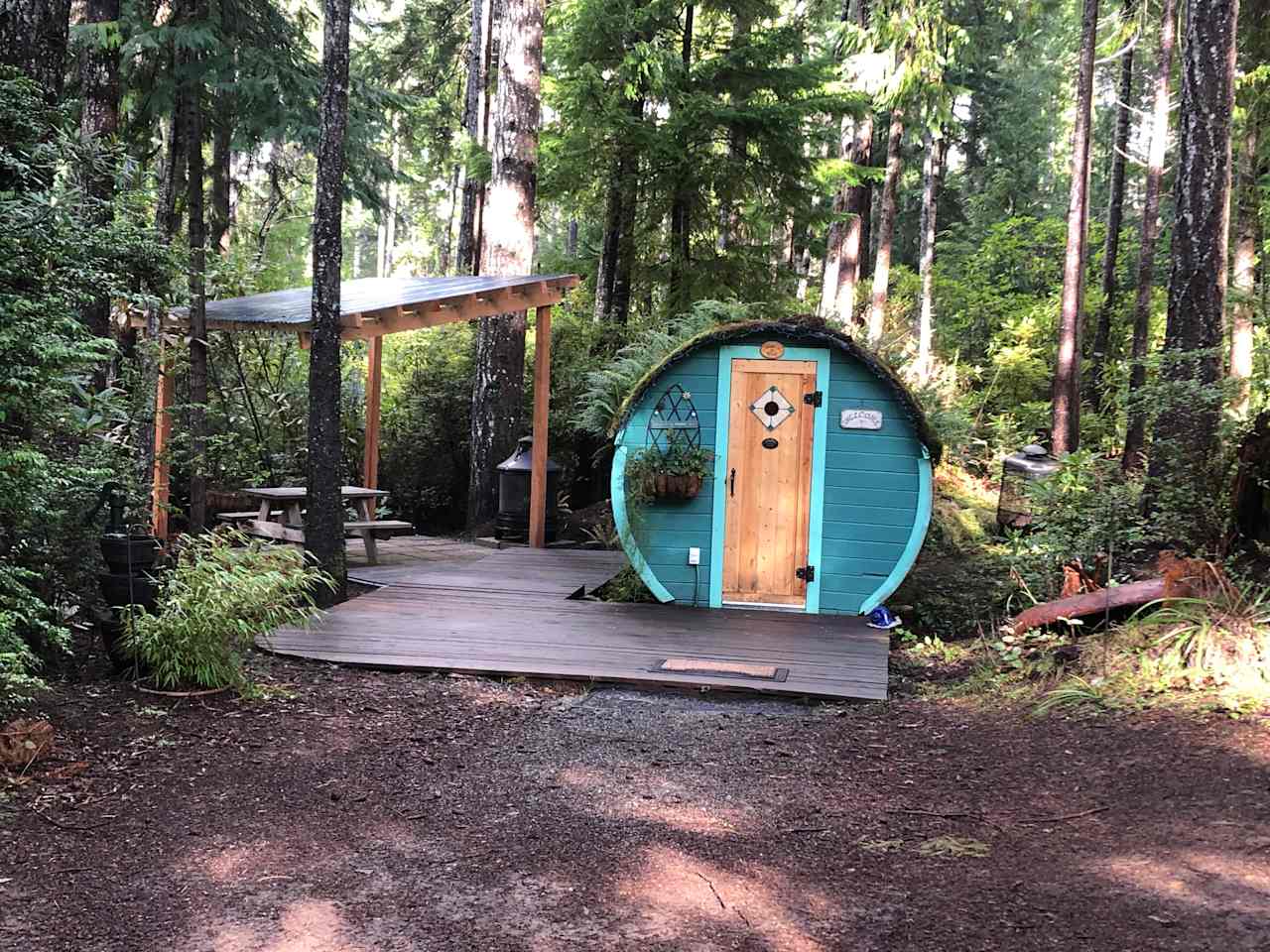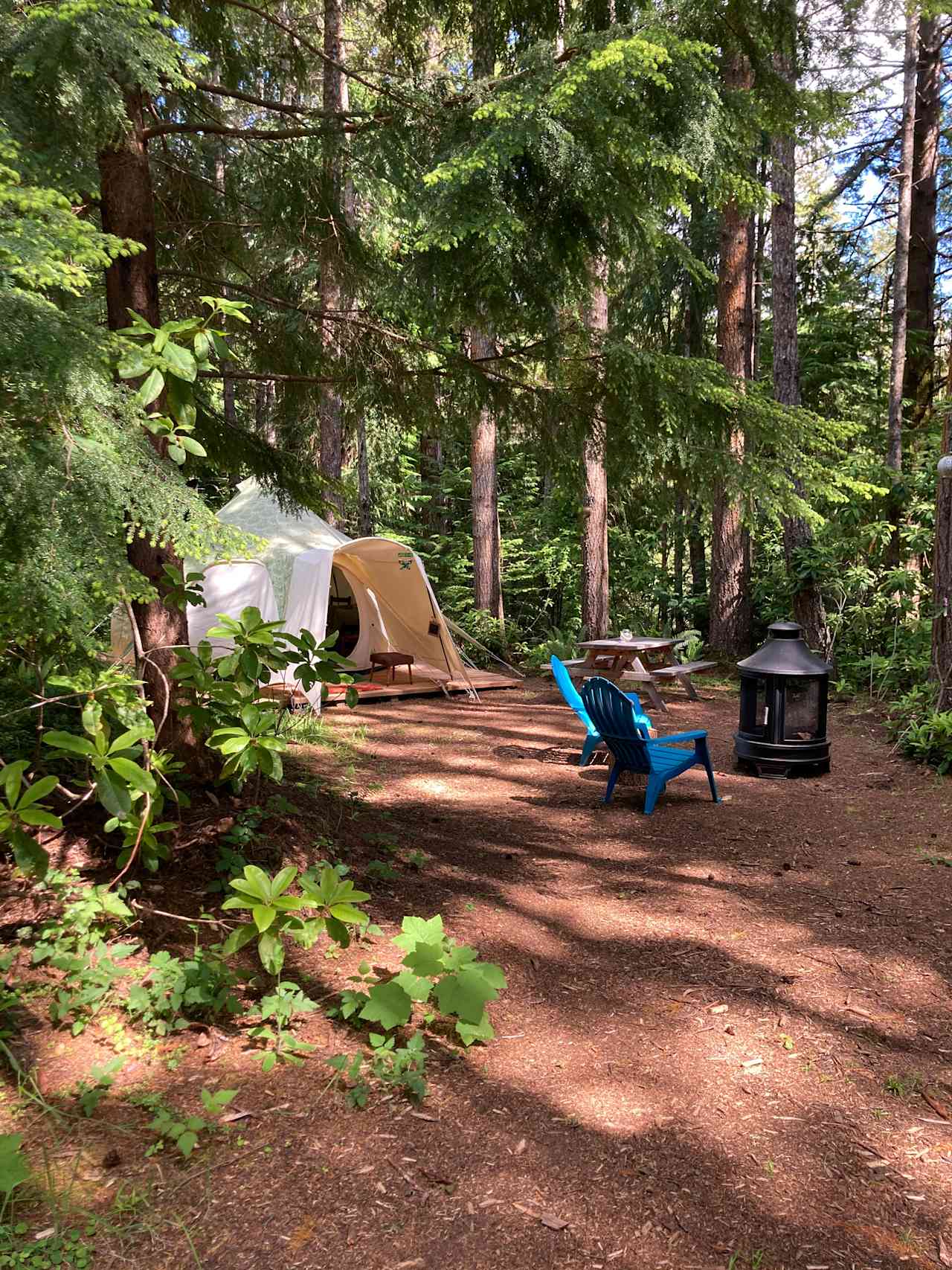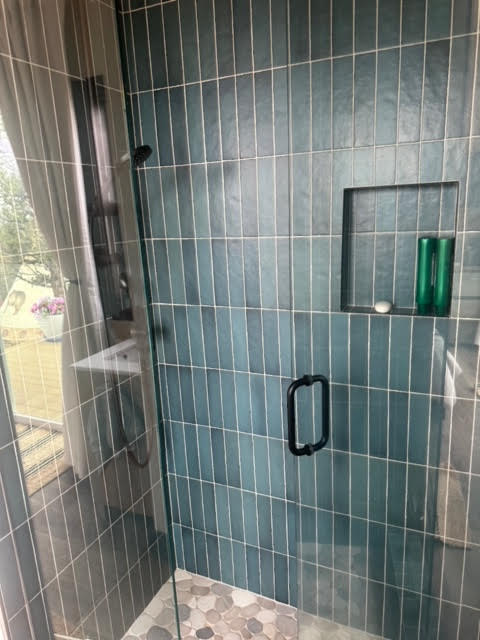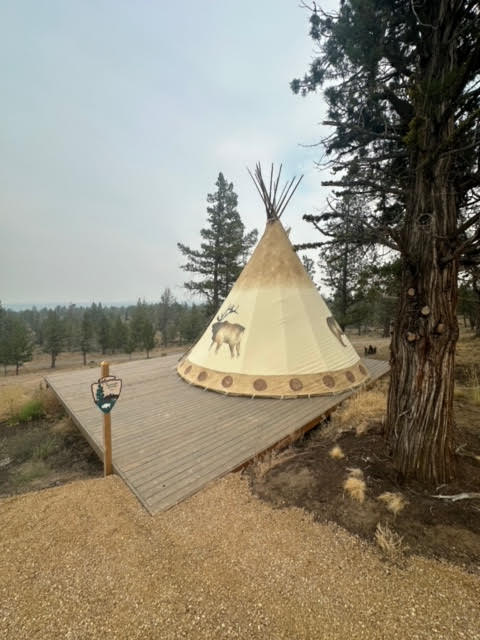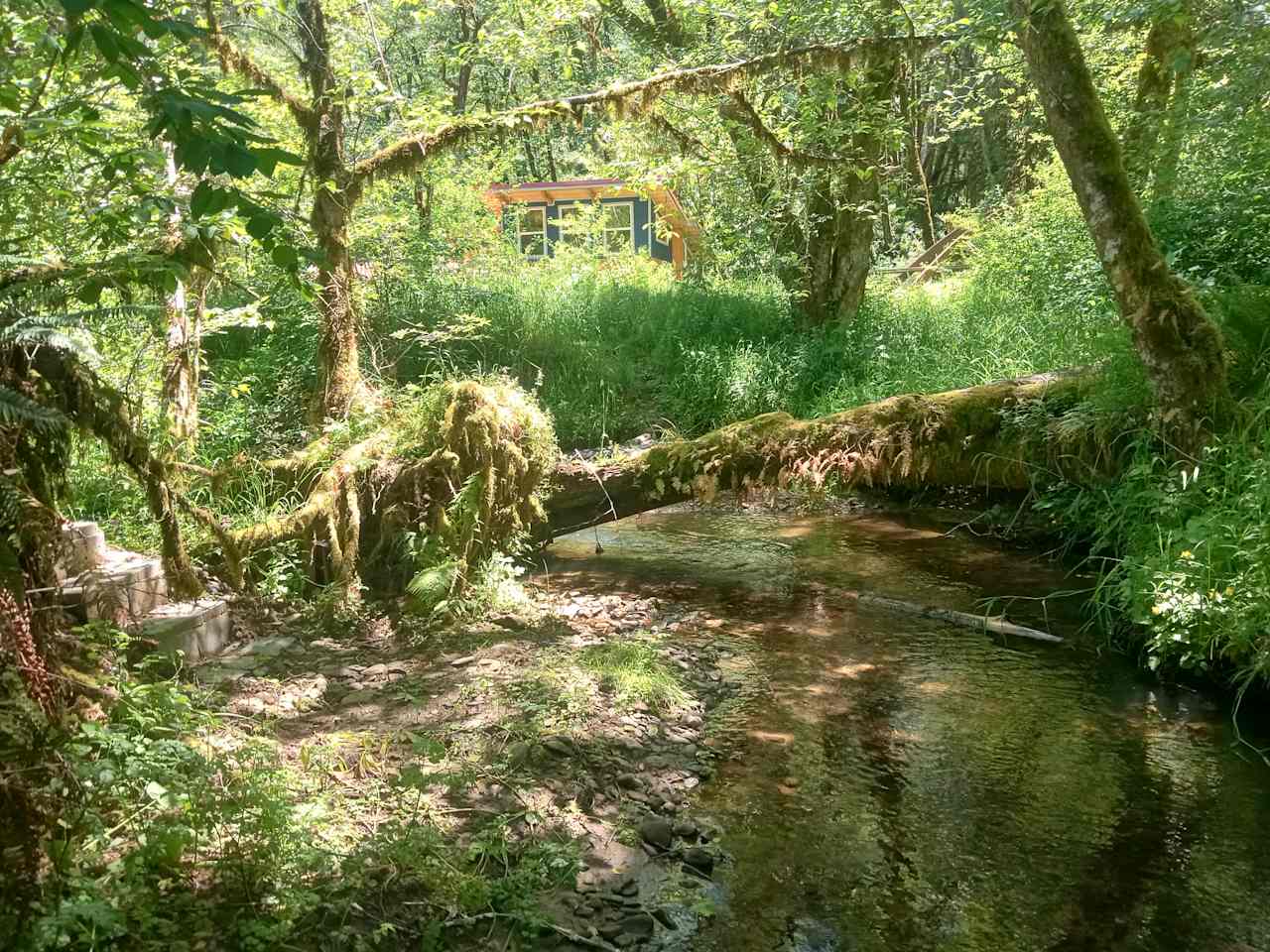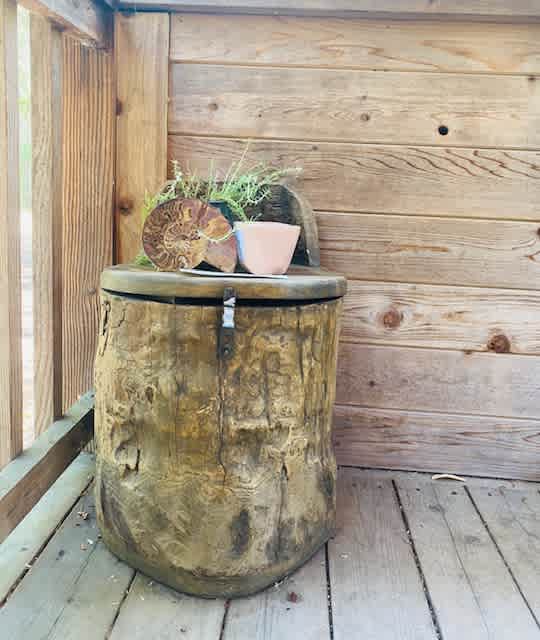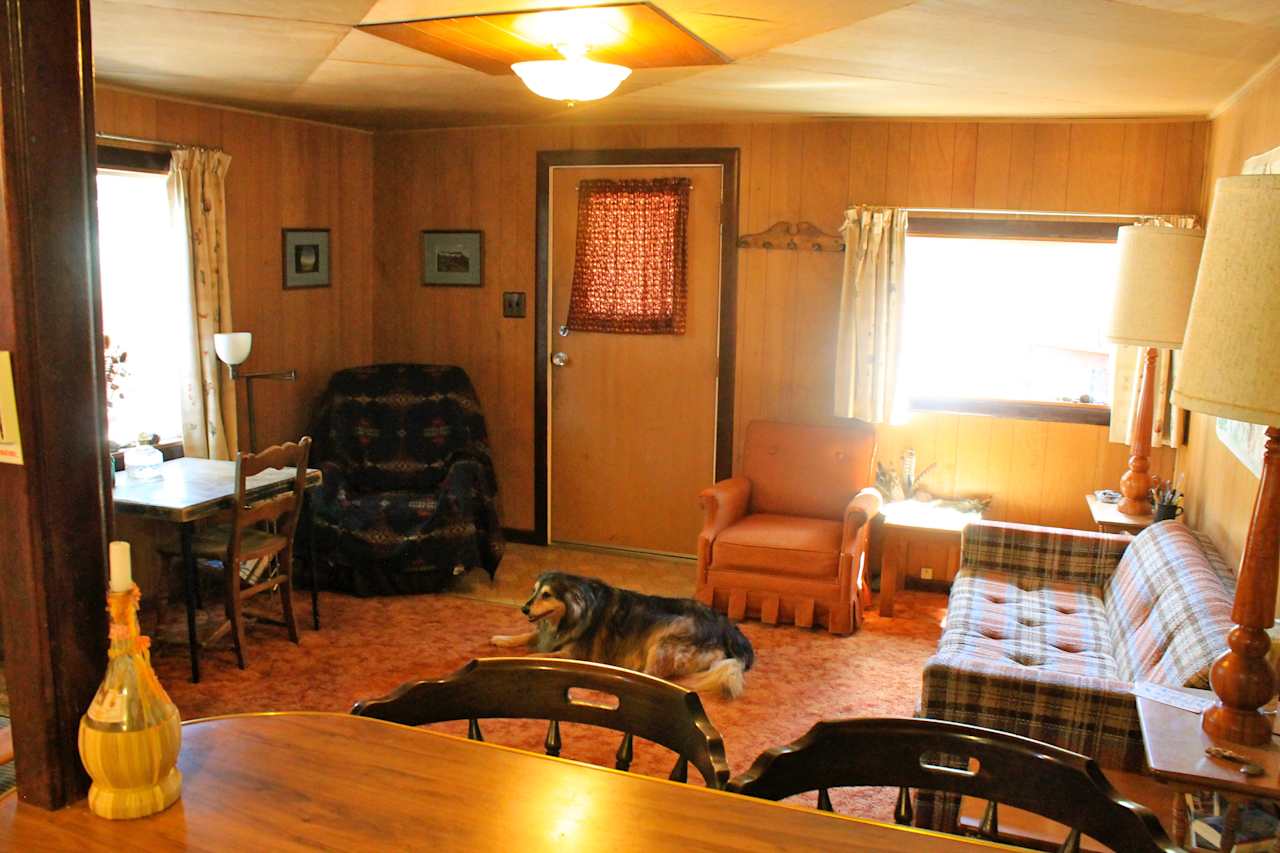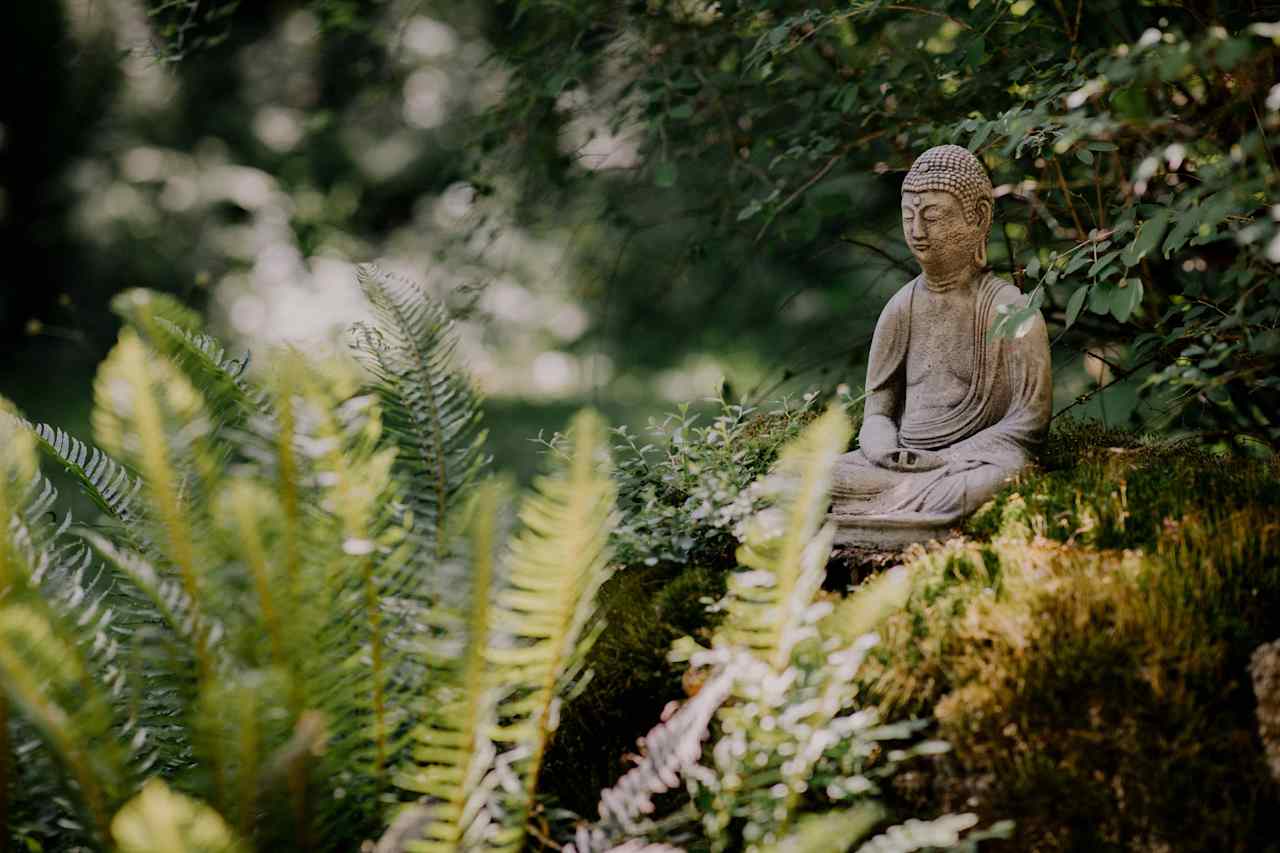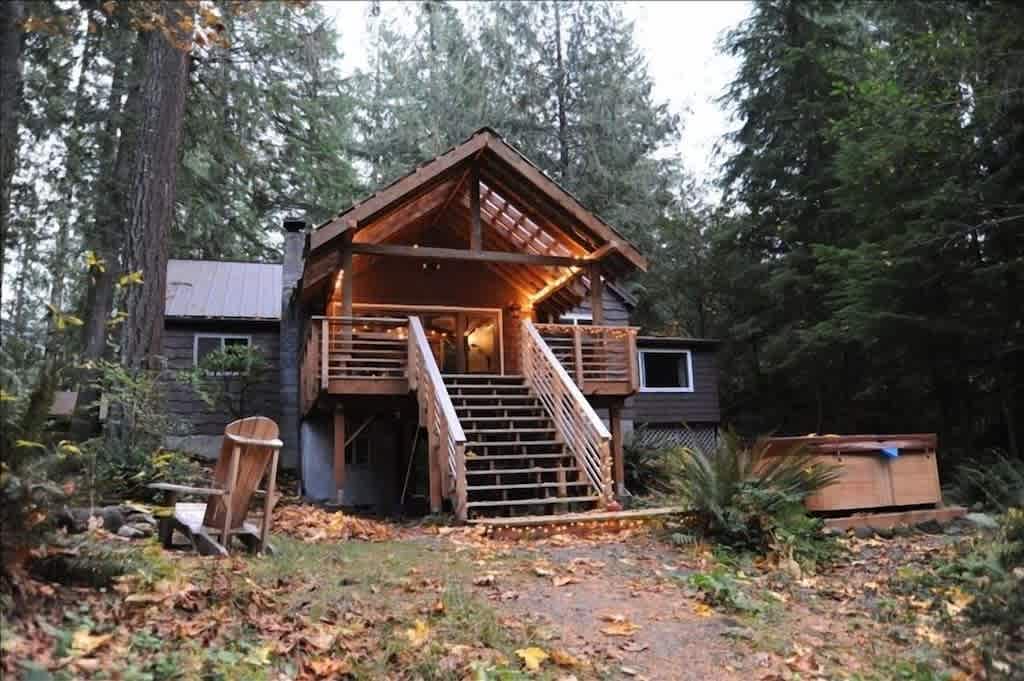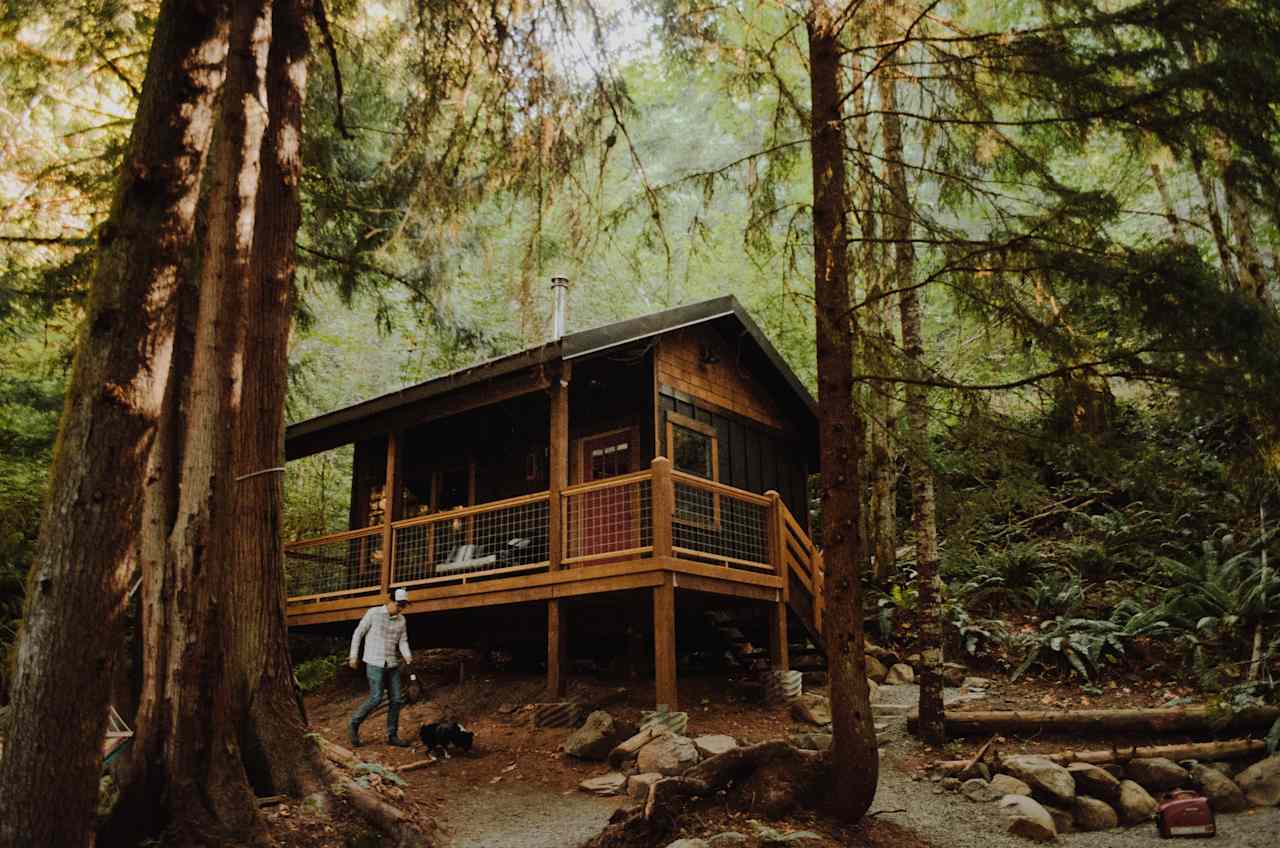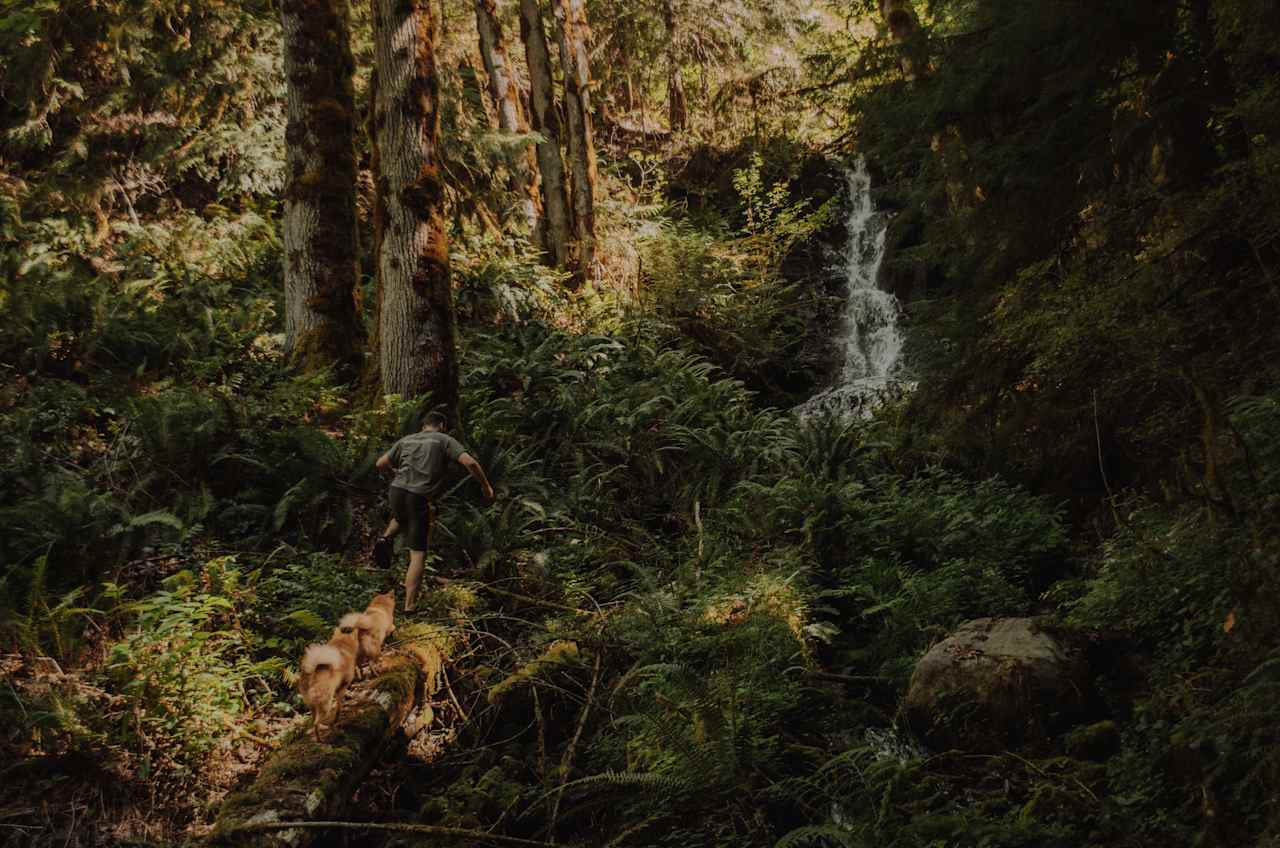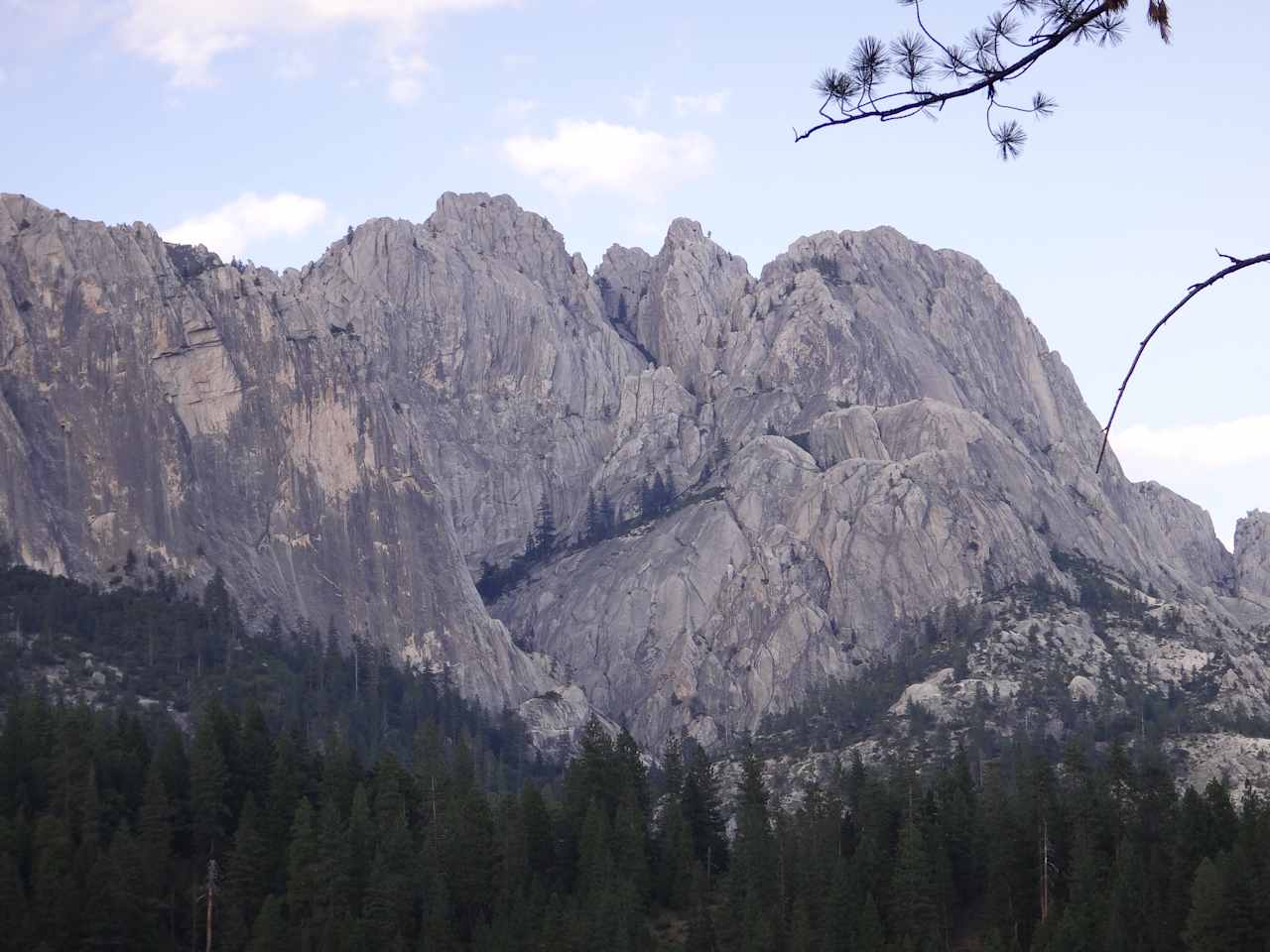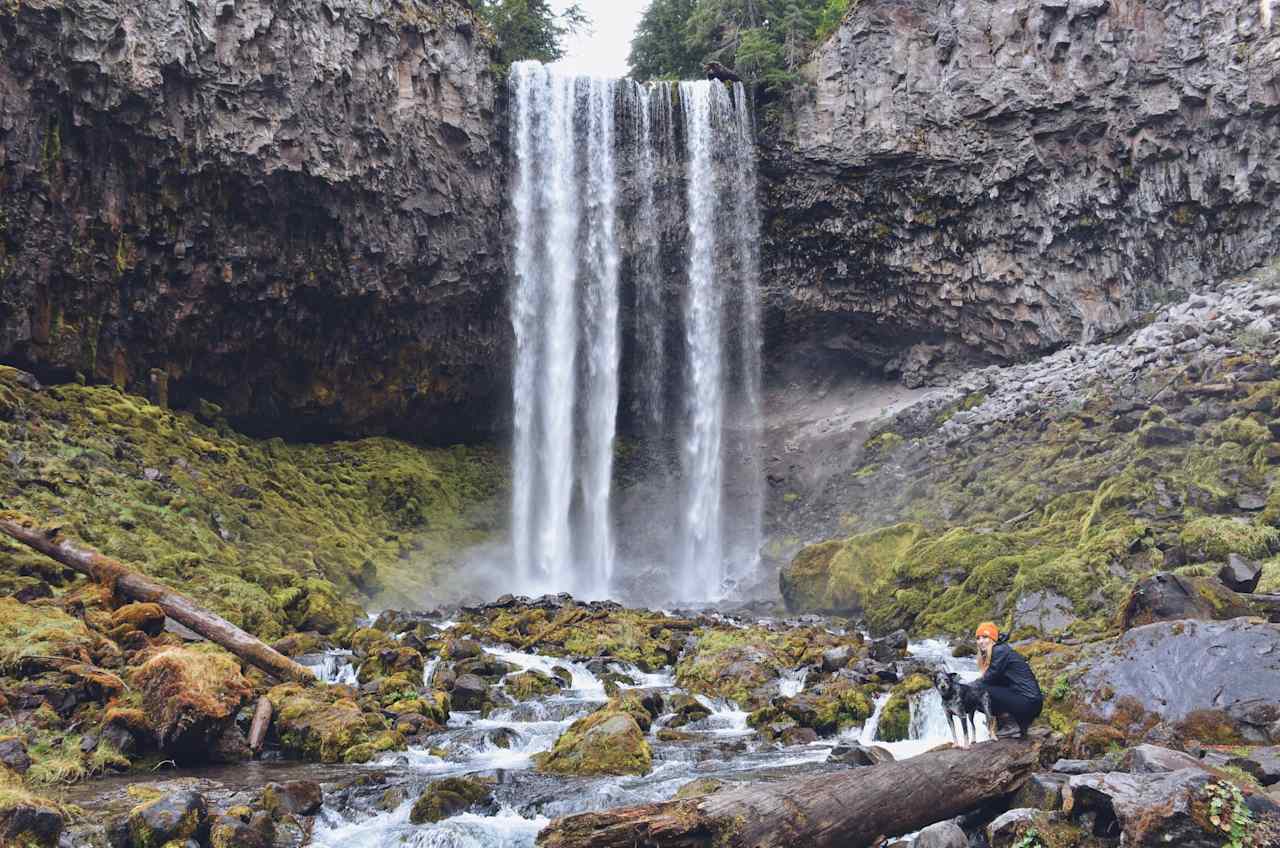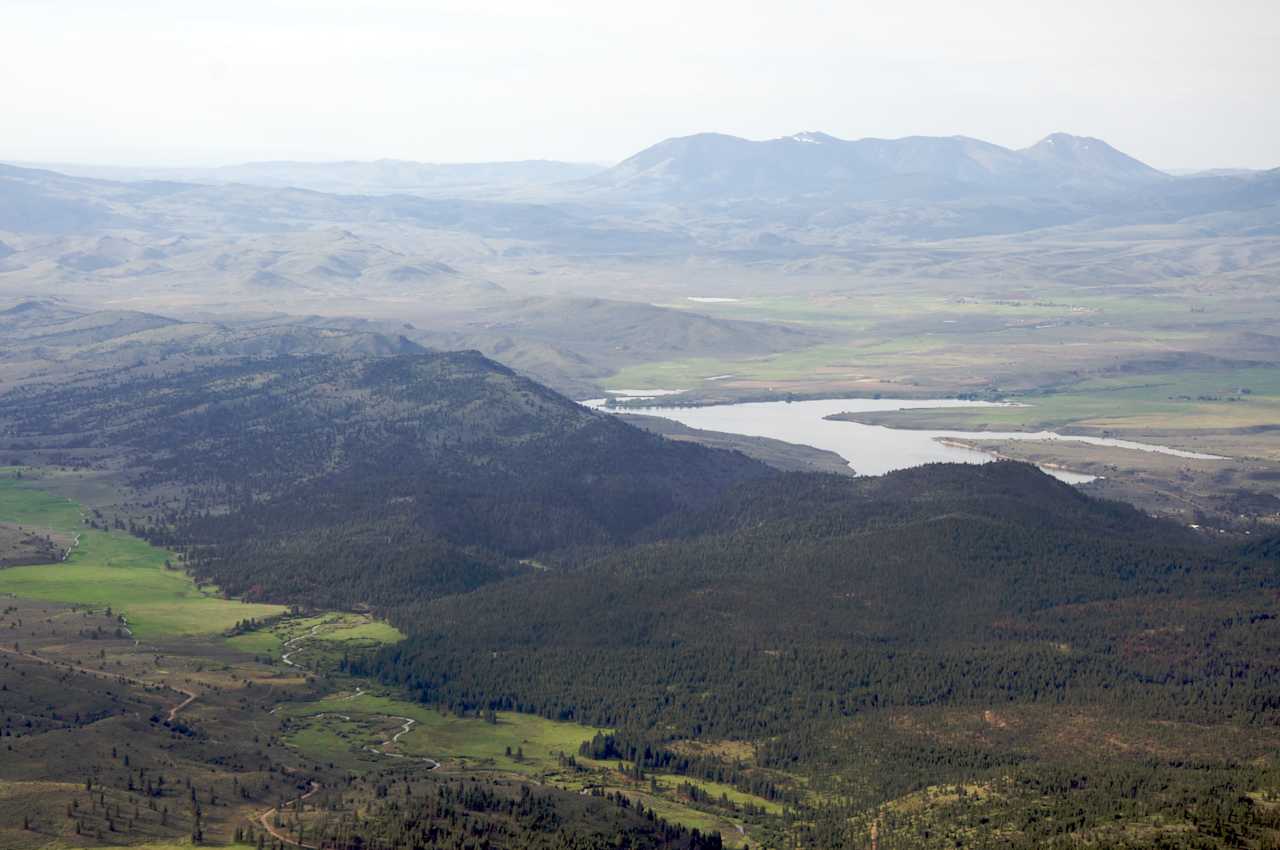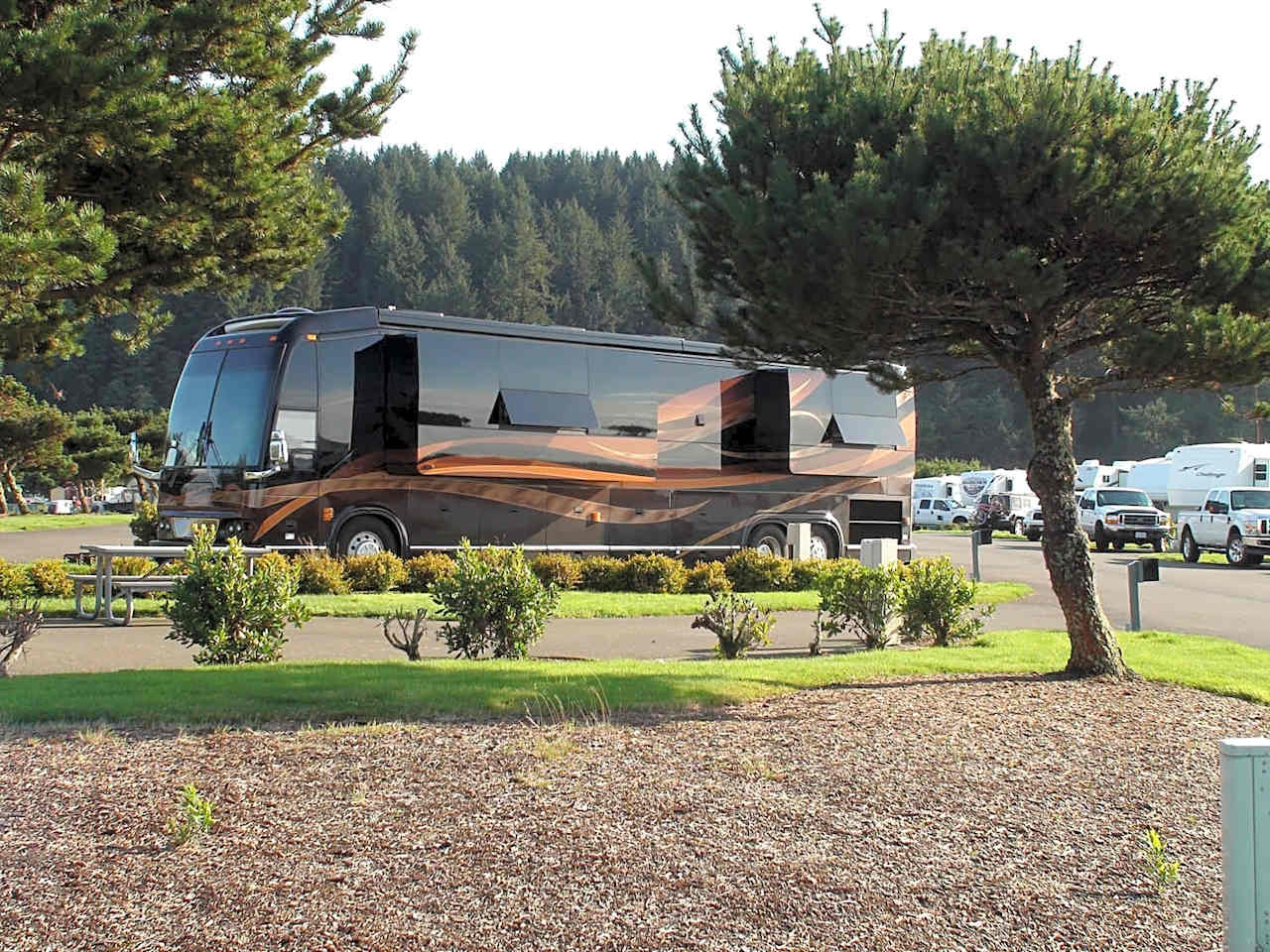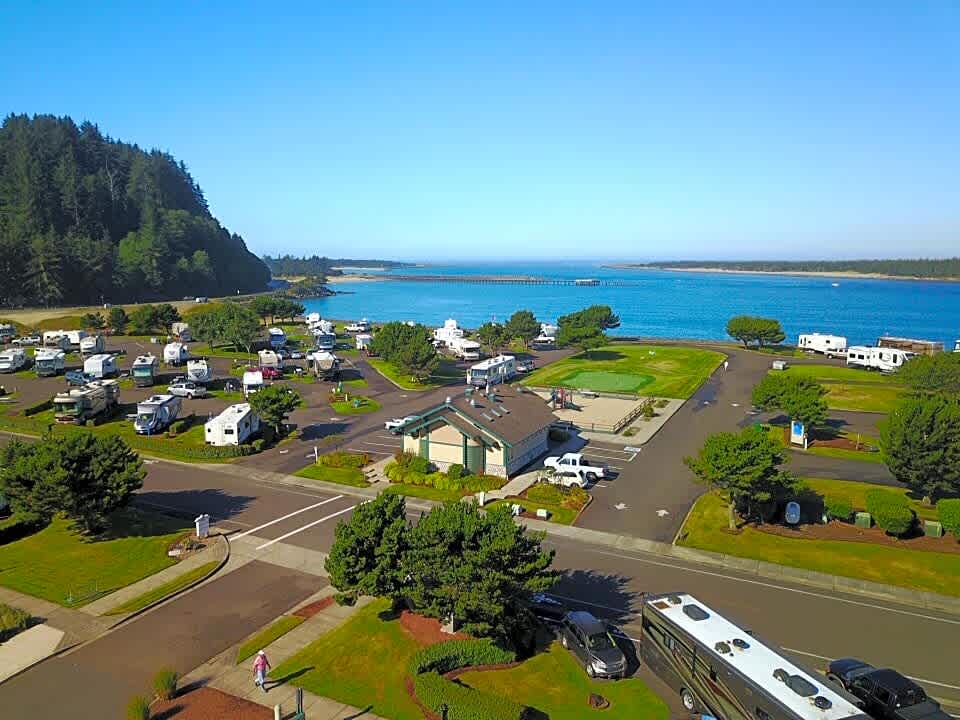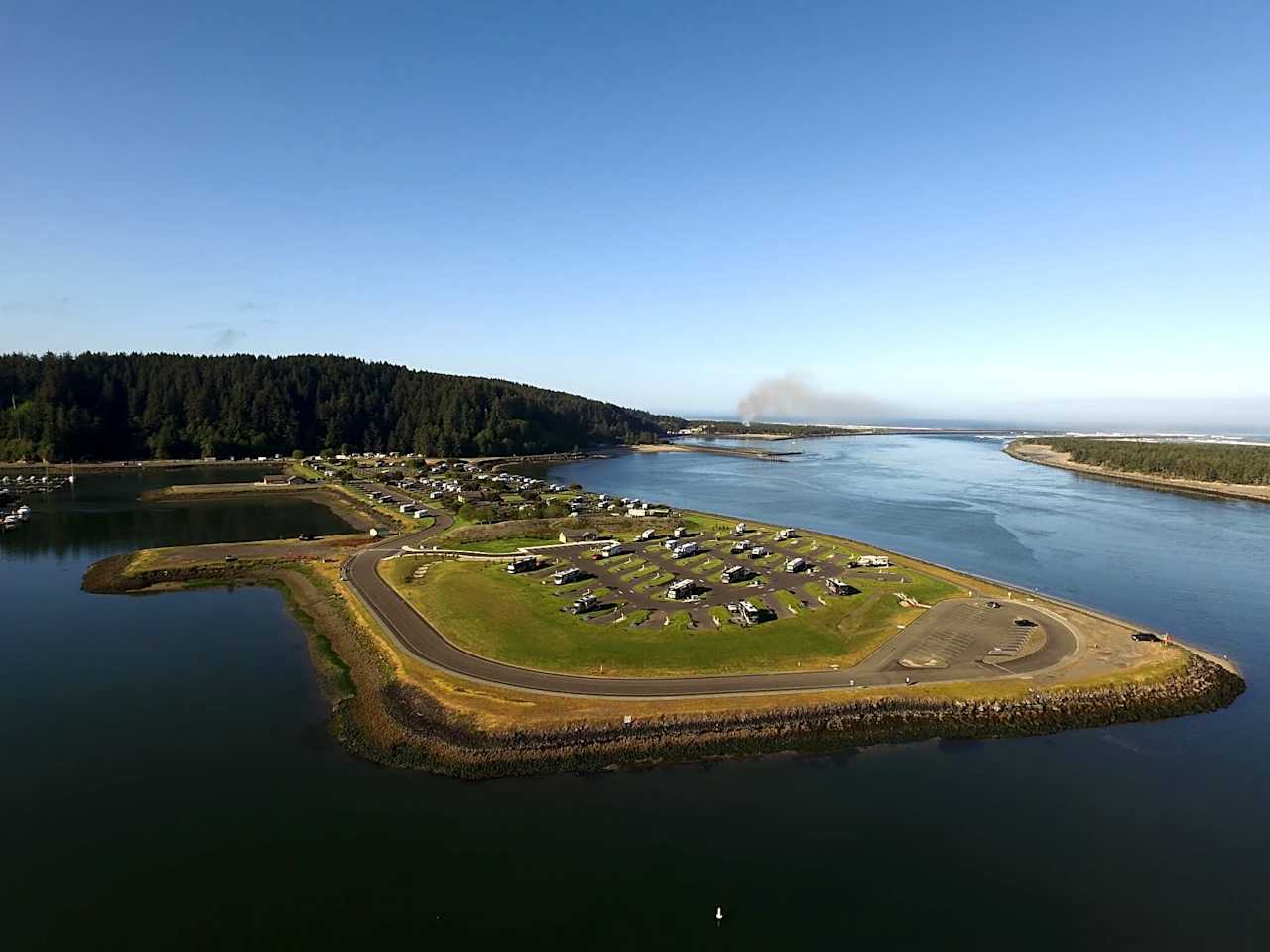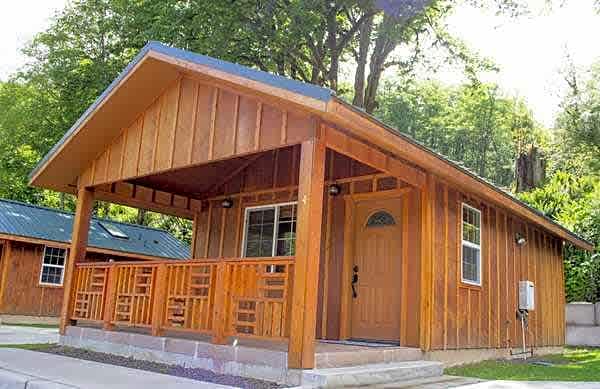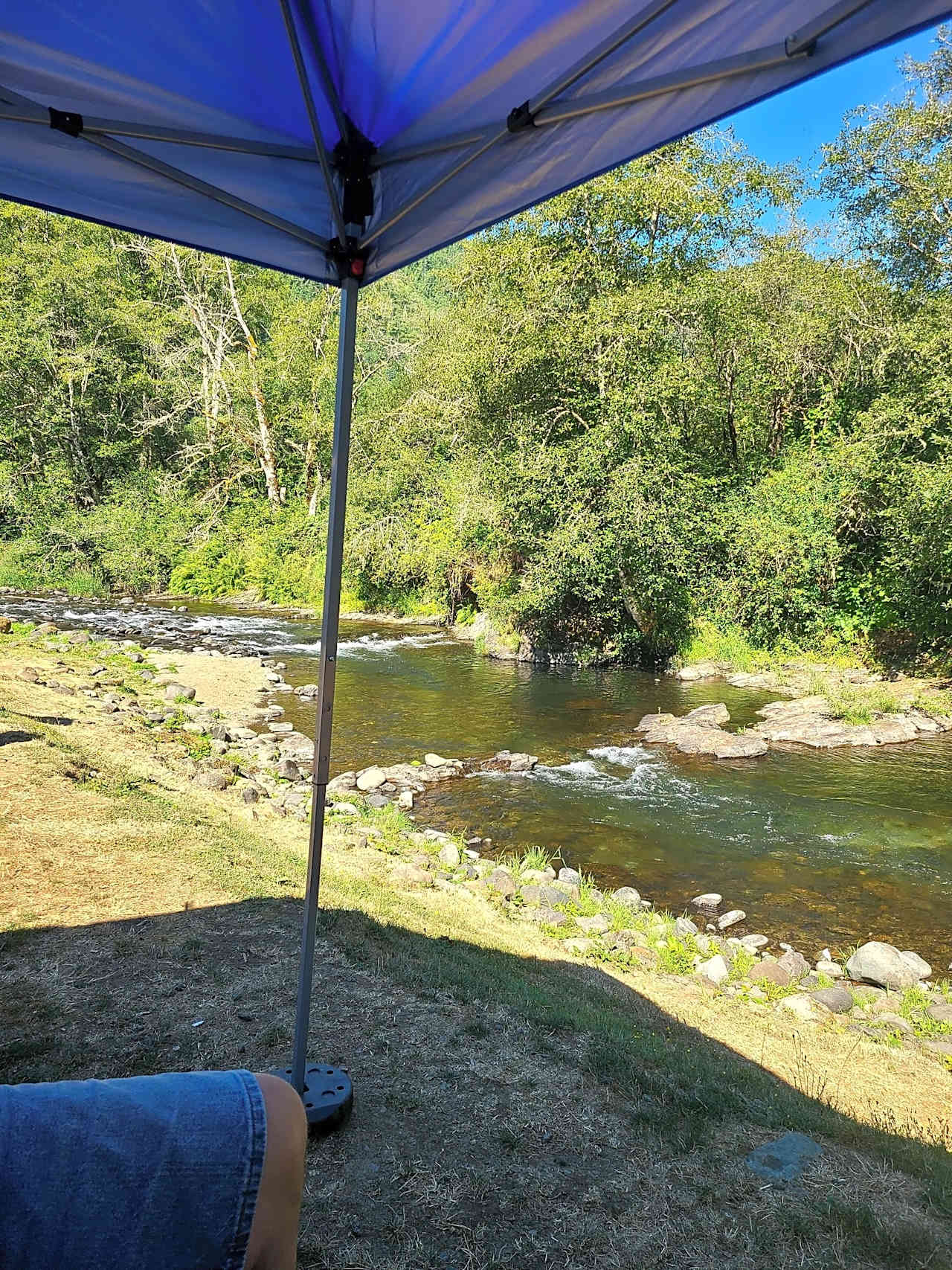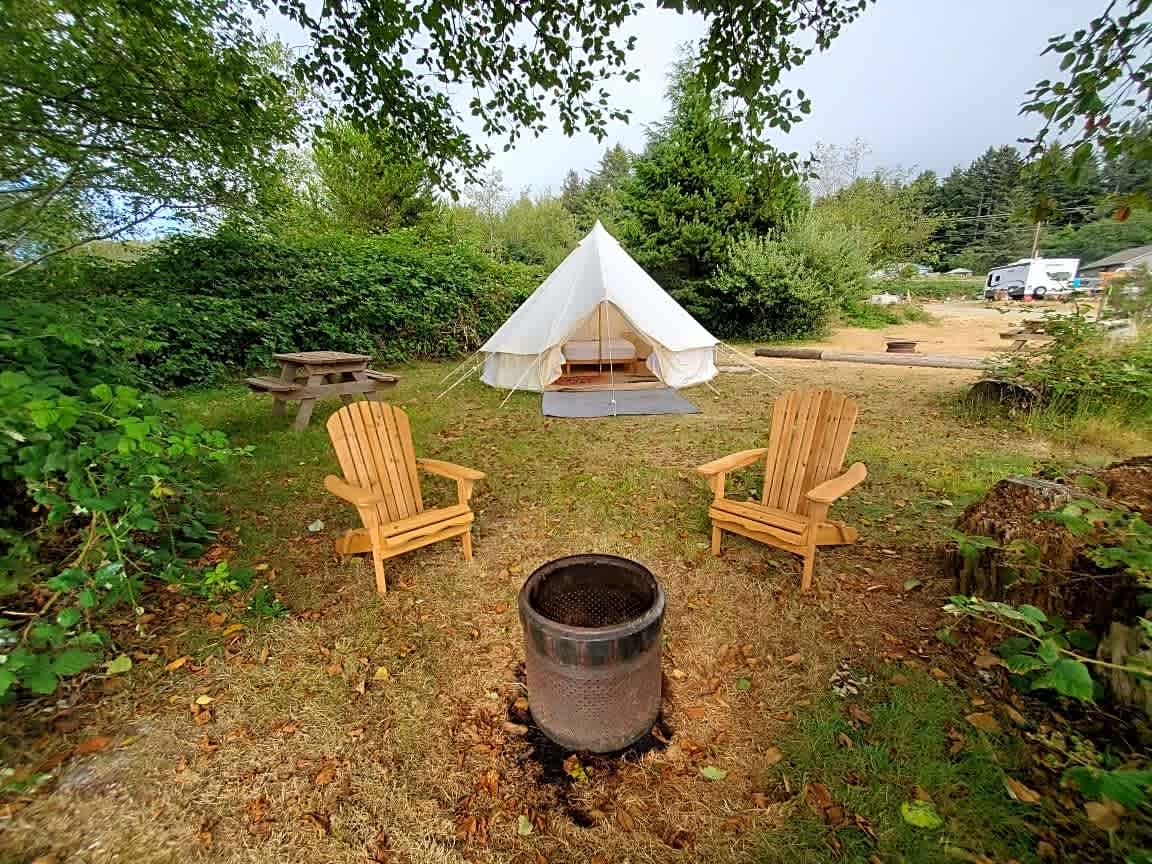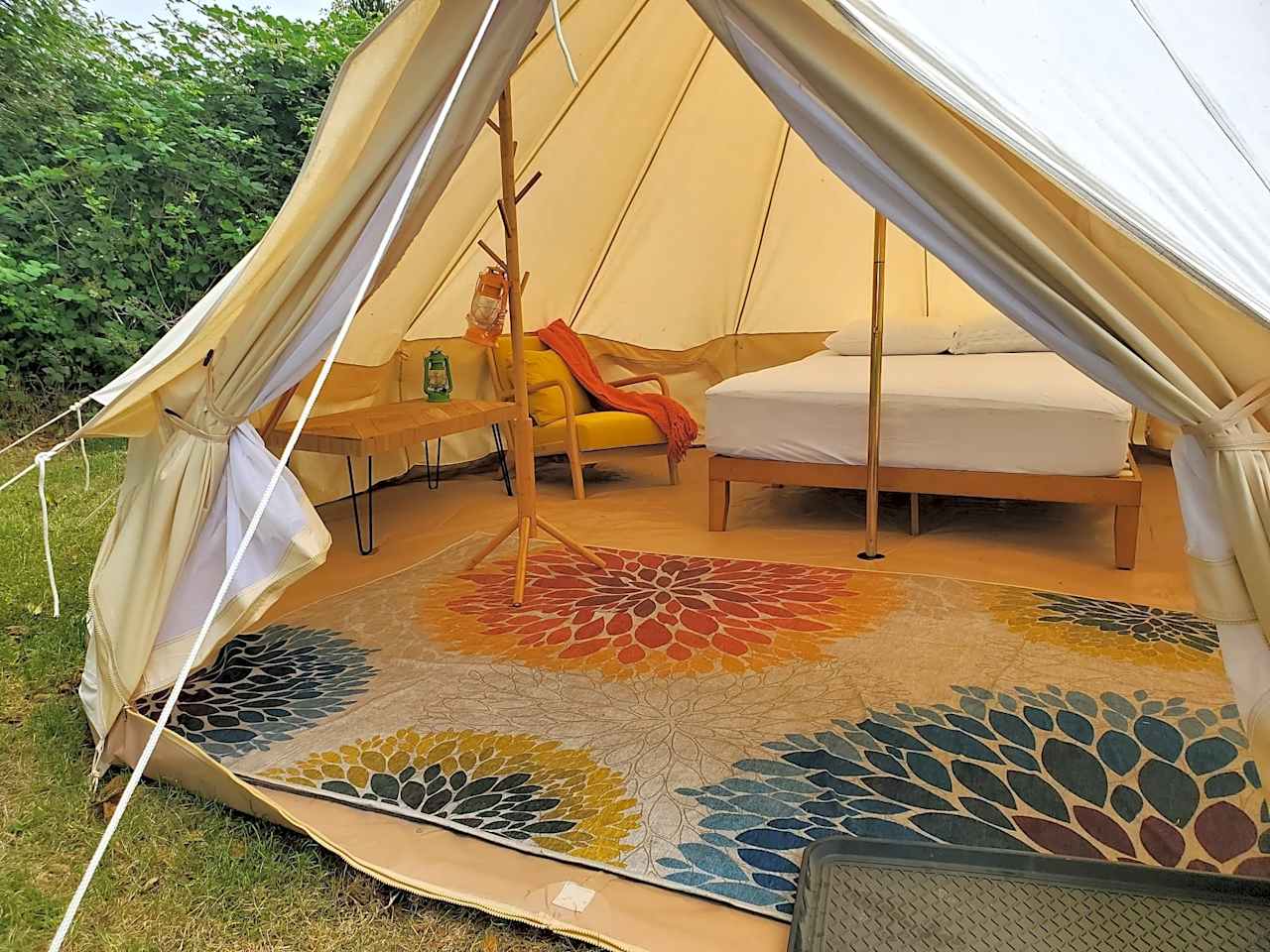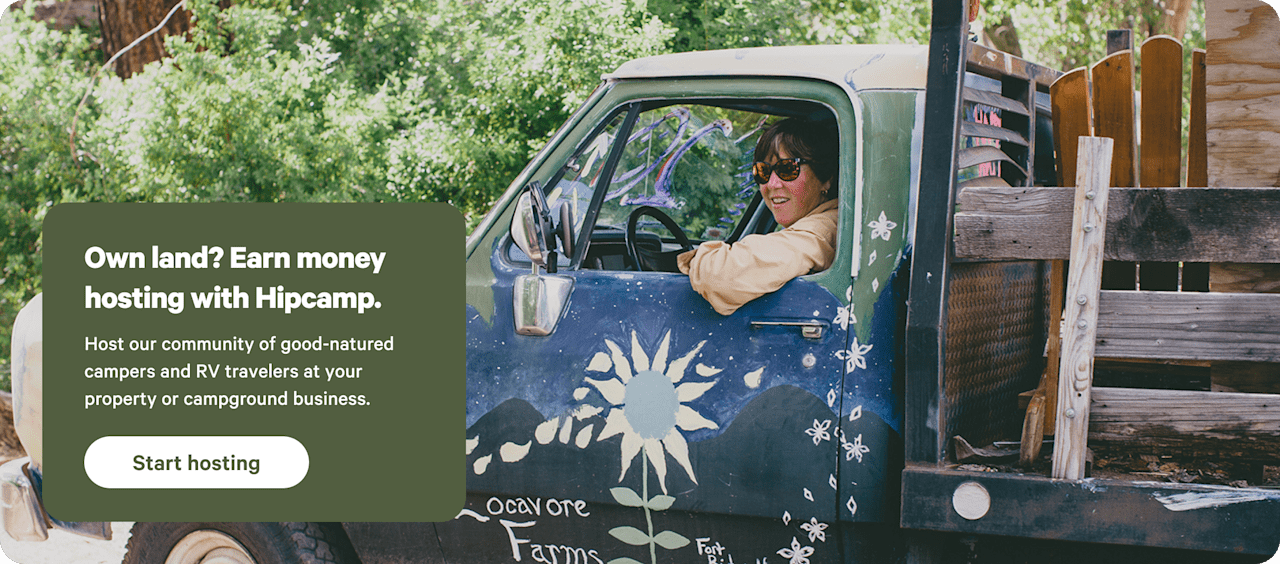River, stream, or creek cabins in Oregon
With quiet beaches, vibrant cities, and massive expanses of forest, Oregon has something for everyone.
98% (5429 reviews)
- Oregon
98% (5429 reviews)
Popular camping styles for Oregon
Community favorites in Oregon
Top-rated campgrounds reviewed by the Hipcamp community.
100%
(209)
Sweet Relief
1 site · Lodging20 acres · Damascus, OR
Close to Portland but far from the hustle. The forested 20 acre property slopes South, making it ideal to keep our solar powered cabins and wifi fully charged.Water, outdoor shower and composting outhouse are never more than a five minute walk on our groomed trails. In early spring you may see taps on some of the beautiful Maple trees. . (Why buy Maple Syrup from the store when you can spend days of hard work laboring to make your own!)Summer Brings the berries, Eat the Blueberries and Blackberries to your hearts content. Find refuge from the summers heat by relaxing by the year round spring fed brook or maybe take a nap on a hammock.Chilly fall evenings can still warm your heart by relaxing in the the Greenhouse or near the campfire. We are exited to share our little slice of heaven with you, and our extensive personal knowledge of Oregon's hiking and recreational opportunities.
Pets
Potable water
Toilets
from
$175
/ night
98%
(165)
Owl Creek Cabin Mountain Getaway
1 site · Lodging5 acres · Ashland, OR
Owl Creek Cabin is in the Cascade Mountains above Ashland, Oregon. The cabin, in a Douglas Fir grove next to a seasonal creek is on five forested acres, and adjacent to BLM lands that are open for hiking. It features a firepit (propane-fired during fire season) with Adirondack chairs and an outdoor clawfoot tub for a private soak and a shady deck for summer snoozing.
You’ll be greeted when you arrive and briefly introduced to some of the cabin's unique features, including attic stairs to the windowed sleeping loft. Downstairs is a sofa and a sofabed. The coffee cart kitchen has a refrigerator/freezer, coffee maker, electric tea kettle, toaster oven, and microwave. Cook on an outdoor gas grill with a skillet and saucepan, and a picnic table for outdoor dining. Dishes, linens, and bedding are provided. WiFi speed is suitable for basic use. Mobile phones connect through WiFi. The cabin is non-smoking. Children eight years and up are welcome.
Recreational areas with miles of trails, including the Pacific Crest Trail, are nearby. Howard Prairie Lake is across the road. We rent kayaks, paddles and safety gear, with transport to the Grizzly Campground boat ramp. Howard Prairie Lake is a local favorite for fishing Rainbow Trout and smallmouth bass. Birdwatchers can see eagles, pelicans, geese, ducks, hawks, herons, and many other bird species.
A 20-minute drive will take you to Lake of the Woods where you can dine, hike, and kayak. Crater Lake National Park is 50 miles away.
Potable water
Toilets
Campfires
from
$135
/ night
99%
(190)
Batwater Station on Columbia River
11 sites · Lodging, RVs, Tents60 acres · Clatskanie, OR
Batwater Station is located halfway between Portland and the Oregon Coast on the Columbia River. A private refuge where river otter, beaver, mink, muskrat, seals, raccoons along with threatened Columbia river white tailed deer can be seen. Property has 1,000 feet of boat docks, river deck, and pier. At the pier is a full kitchen, heated bathroom and shower room. Included are 2 outhouses, a fire pit for summer months, a viewing station overlooking the wetlands along with brick charcoal fired barbecue and another propane barbecue. We are committed to your privacy so guests are limited and spread out. High speed internet through out the property.
Batwater worked with several agencies when we breeched a levee and flooded 26 acres for salmon and wildlife habitat. Hike along the wetlands and see beaver dams and dens. Batwater is also home for many types of birds including eagles, osprey, tree swallow, purple martins, barn swallows, wood ducks, common and hooded mergansers, mallards, scoots, scaups, grebes, cormorants, great egrets, blue herons, geese and many types of song birds . In the spring and summer see our returning osprey who have. nested on our dock since 2013. There are now 2 osprey platform since a pair of Canada geese choose that as their nesting site as well. Some bald eagles winter here but we have our resident bald eagles Hep and Hope. They arrived in 2003 to start their nest on Crims Island. They still nest there although there old nest tree collapsed in 2020. Many birds migrate here for the winter. Common mammals are river otter, mink, muskrat, raccoons, nutria, coyotes, black tailed and threatened Colombia White Tailed deer. We also are home to native turtles and frogs.
Batwater is a working farm with cattle feeding on lush pastures, 2 retired horses and chickens. When eggs are available, we will share some with you.
Batwater is a great place to kayak, canoe, paddle board or row during the summer months. We have windy afternoons for windsurfers or sailors. The Columbia River is well known for salmon, and sturgeon. For an extra fee you can moor your larger boat while visiting. There are a volley ball and badminton set ups along with horse shoes during the summer months. We suggest swimming during the summer months when the tide is coming in or slack. You can also walk or drive down to Mayger beach which is popular with locals. There are sandy beaches on Crims island that you can paddle over too.
Check out the pictures for more information.
Pets
Potable water
Toilets
from
$40
/ night
95%
(41)
The "Farmer-For-A-Day" Program
4 sites · Lodging, RVs, Tents10 acres · Corbett, OR
Our property was homesteaded in 1919 by L.T. (Toot) and Doris Evans. We began working on our non-profit, children's program in 1992 and opened to serve kids in 1998. Old McDonald's Farm, Inc. utilizes Farm Program animals, agriculture, gardens and beautiful, natural resources to "teach and reach" children and youth. We offer many programs and "The Farmer For A Day Program" is just one. This one is open to older children and their families. We look forward to meeting you and having you join us as our guest!
Potable water
Toilets
Campfires
from
$49
/ night
96%
(142)
Camp Colton
19 sites · Lodging, RVs, Tents85 acres · Colton, OR
Escape to 85 acres of Pacific Northwest forest, just an hour southeast of Portland. Our modern-rustic accommodations blend seamlessly with nature—choose from cozy forest yurts, charming cabins, a tiny house, pet-friendly cottages, or the spacious River Falls Lodge. Tent campers and RV travelers will find serene sites under towering firs and cedars.
Hike through sun-dappled trails, explore our converging creeks, or swim and canoe in our spring-fed pond. Most sites welcome campfires (burn bans permitting) and furry companions.
Whether you seek a bare-bones adventure or comforts like full kitchens, our range of listings lets you unplug at your own pace. Ideal for romantic getaways, family trips, or creative retreats—every stay supports our mission of land stewardship.
****PLEASE NOTE: IN ADDITION TO OUR ACCOMMODATIONS, WE ARE A WEDDING AND EVENT VENUE, SO YOU MAY HEAR MUSIC AND JOYFUL VOICES ACROSS THE CREEK LATE INTO THE EVENING DURING OUR PEAK SEASON (ROUGHLY MAY 1 - OCTOBER 31). If you prefer only to stay when there is no event on our large site, please inquire before requesting to book.
Pets
Potable water
Toilets
from
$52.50
/ night
Booked 6 times
Sunnybrook Ranch
9 sites · Lodging, RVs, Tents750 acres · Eagle Point, OR
We are a goat and cattle ranch in Southern Oregon located in the Rogue Valley about 30 minutes from I-5. We are situated on the picturesque South Fork Little Butte Creek that runs year round through the property. We have a sitting area by the creek with a swimming hole guests can utilize. This also makes a great fly fishing hole. Our property has hiking trails that visitors can use with access to adjacent public land. With a signed waiver you can ride your horses or ATVs on the property and additionally access public land.
You can pick your own secluded 4WD site on the north side of the property with beautiful views of the valley.
Pets
Toilets
Campfires
from
$40
/ night
98%
(33)
Creekside Cabin in Williams, OR
1 site · Lodging11 acres · Williams, OR
You will appreciate the peace and quiet of this little cabin on Rock Creek, situated on 11 acres of forest in Williams Oregon. The only sounds you'll hear are the birds in the trees and the flowing creek water. Enjoy sitting on the deck overlooking the confluence of Rock Creek and East Fork Williams Creek. A bridge crosses Rock Creek and there is a hiking trail beyond.
Our garden hot tub is a welcome place to soak and enjoy the stars at night. Its an older tub but still keeps the water at 102 degrees.
Our cabin has a kitchenette with a small fridge, sink, 2-burner gas stovetop, microwave, teapot, crockpot, toaster, and 2-cup coffee maker, plus a few dishes, cutlery, and pots and pans - enough for simple meal preparation. Coffee, tea, sugar, and creamer are provided.
The cabin has a small woodstove as its only heat source. A little wood can be provided, and we provide newspaper, matches, and fire starters. There is an abundance of kindling around the property - great for getting a fire going. The stove holds 18" x 4" split logs, if you have some to bring. There are two smaller stuffed chairs, and two bar stools at a counter/bar with views of the creek.
The bathroom has a shower and vanity sink, and towels and toiletries are provided. There is hot and cold running water, although the 3-gallon hot water heater limits showers to less than 5 minutes.
Nice sturdy steps lead up to the loft upstairs which has an 8" full-sized (wider than a twin but narrower than a queen) memory foam mattress with fresh linens. The loft is low and cozy which allows the camper to sit up on the bed but not stand up.
A compost toilet is about 100 yards away, and has a rechargeable motion detector indoor light. Bring your flashlights to find the compost toilet as well as the hot tub as the property is very dark.
WiFi is available. The password is listed in the binder on the table. Mostgawinternet.ininternet for a while. Some games and puzzles are provided.
Pets
Potable water
Toilets
from
$80
/ night
97%
(99)
Yale Creek Ranch
8 sites · Lodging44 acres · Jacksonville, OR
Located in the beautiful Applegate Valley, Yale Creek Ranch seeks to create a beneficial and respectful environment for visitors to have meaningful experiences. There are six cabins and one dome and a main house on the property, which gives the ranch has a community feel while being spacious enough to provide privacy. The ranch is a great place to relax because of the beautiful landscape, lack of internet and cell service, and comfy lodgings.
There are also many things to do in the nearby area, including visiting excellent wineries or hiking the Sterling ditch mine trail.
For outdoor enthusiasts, there is Mt. Ashland for mountain biking, and the Rogue River for boating. Despite having the feeling of being away from city life, Ashland is only 45 minutes away. Popular things to do in the city include the Oregon Shakespeare Festival, or spending time in Lithia Park.
Despite having the feeling of being away from city life, Ashland is only 45 minutes away. Popular things to do in the city include the Oregon Shakespeare Festival, or spending time in Lithia Park.
Pets
Potable water
Toilets
from
$88
/ night
Public campgrounds in Oregon
Stories from the community

B
Ben
6 days ago
3 nights at Santiam Serenity
The cabin is really cute and is on a lovely spot right by the creek. It's a little more equipped than you might expect but still feels like you're unplugging and away from it all.
We had some issues pop up on our end that created a hiccup with our travel plans but the host was very accommodating and understanding. We would love to return sometime
See more
L
Lily
1 week ago
2 nights at Mt. Hood Enchanted Forest
Beautiful secluded cabin! Very romantic and a gorgeous forest space to relax in! Checked all of our basic boxes! Would definitely recommend :)
See more
Gretchen
1 week ago
With pets
Beautiful and much needed getaway from the city! Lovely view of the river with lots close by to explore. Can’t wait to book another trip! Thank you!
See more
K
Kate
2 weeks ago
With kids
The space is so beautiful and peaceful - we felt well cared for by the staff on site but had plenty of privacy. The dome is spacious, the bed is so comfortable, and the whole property feels super safe and tranquil.
See more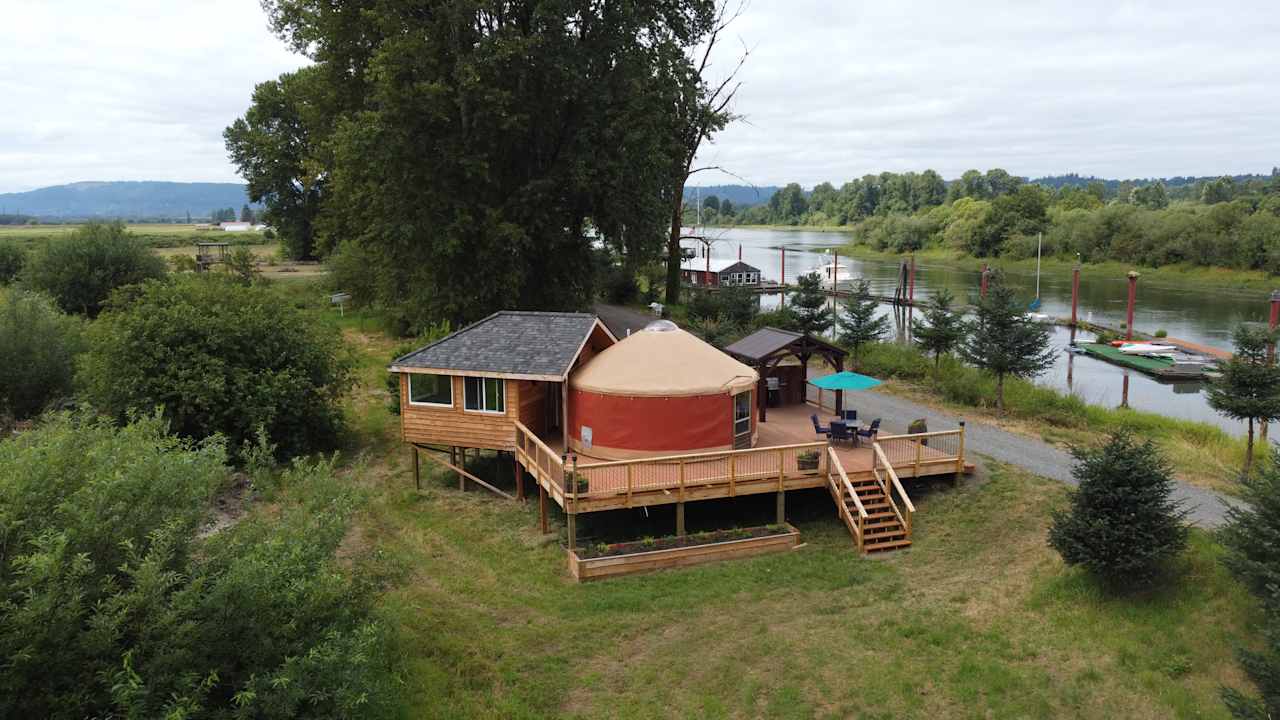
I
Ian
2 weeks ago
Weekend Trip to Batwater Station on Columbia River
Yurt was great, warm and comfortable. This is our 5th trip to the property and as always we enjoyed everything about this peacful retreat. From Karin and her husband to their sweet dog Molly. Enjoyed all of the birds including Osprey nesting right in front of the yurt. Simply watching the river go by and reading to the sounds of nature.
See more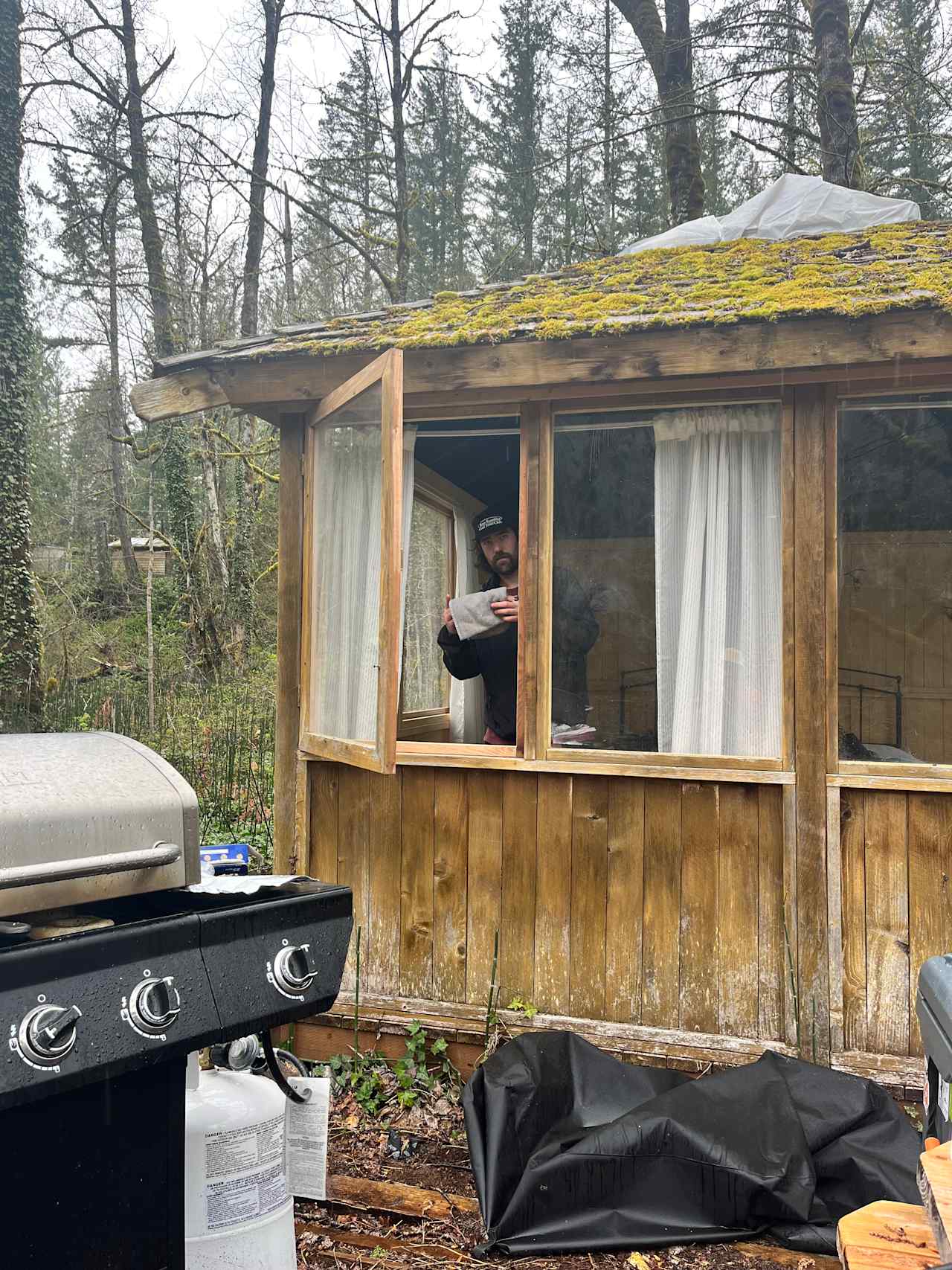
T
Taylor
2 weeks ago
Weekend Trip to Mt. Hood Enchanted Forest
Great spot on the river! Your own private sandy beach. Our dog was in heaven.
The room was very cozy with candle lighting and the bed was very comfy!
Everything is well marked and clear instructions provided. Would love to return !
See more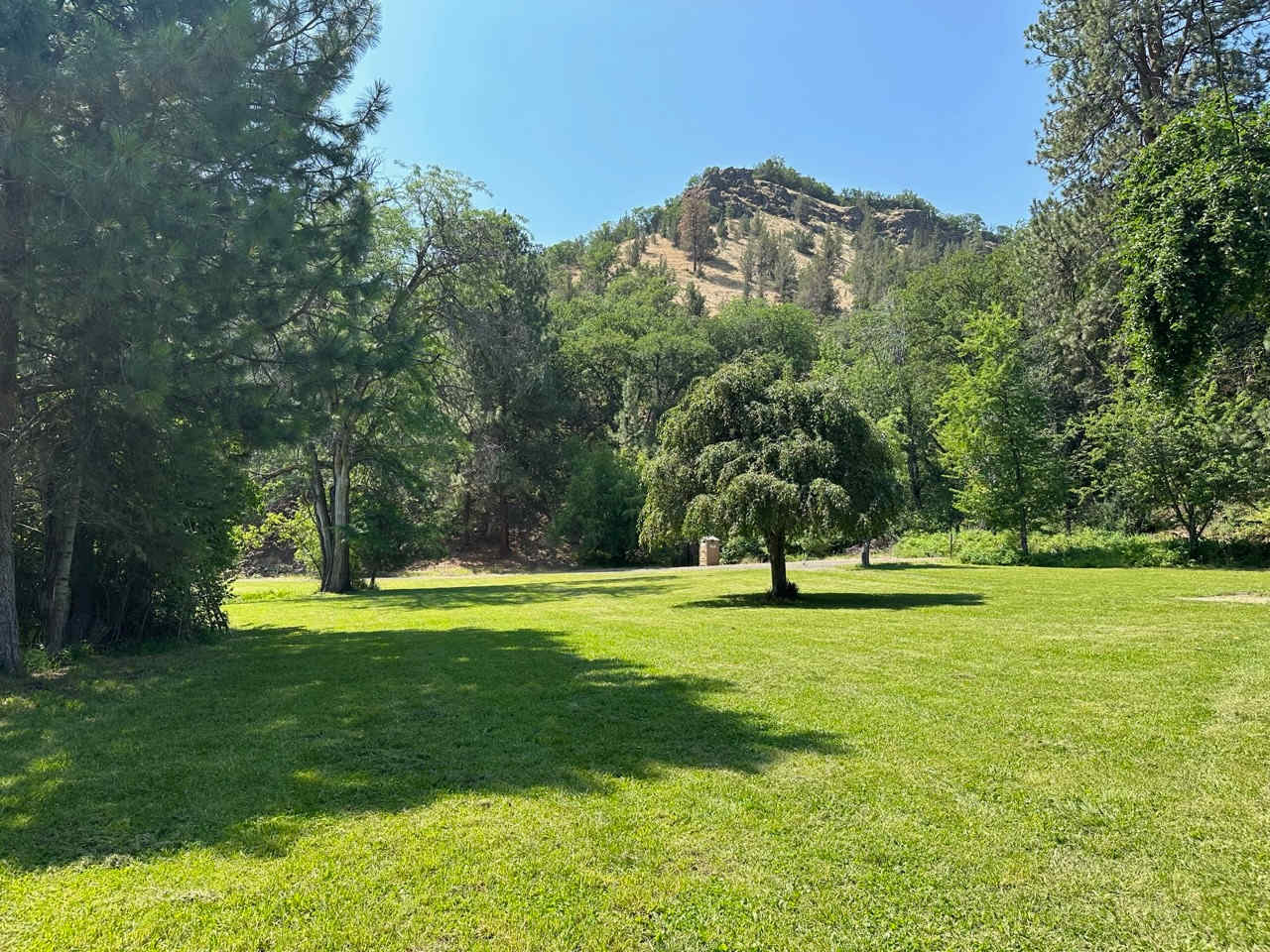
Meghan
2 weeks ago
Tent
With pets
Beautiful place. Spacious, lovely little ponds and creeks and so much privacy. Wonderful place.
See more
K
Kaela
2 weeks ago
Tent
This was one of the best Hipcamps my friends and I have been to! Joshua was super helpful and brought our camping gear to our campsite for us, has Venmo codes up to purchase more wood during your stay and was super responsive to messages. Would 100% stay here again :)
See more
Taylor
2 weeks ago
Weekend Trip to GeerCrest Farm
Awesome cabin, lots of space and comfy beds! Beautiful spot on on a wooded hill.
See more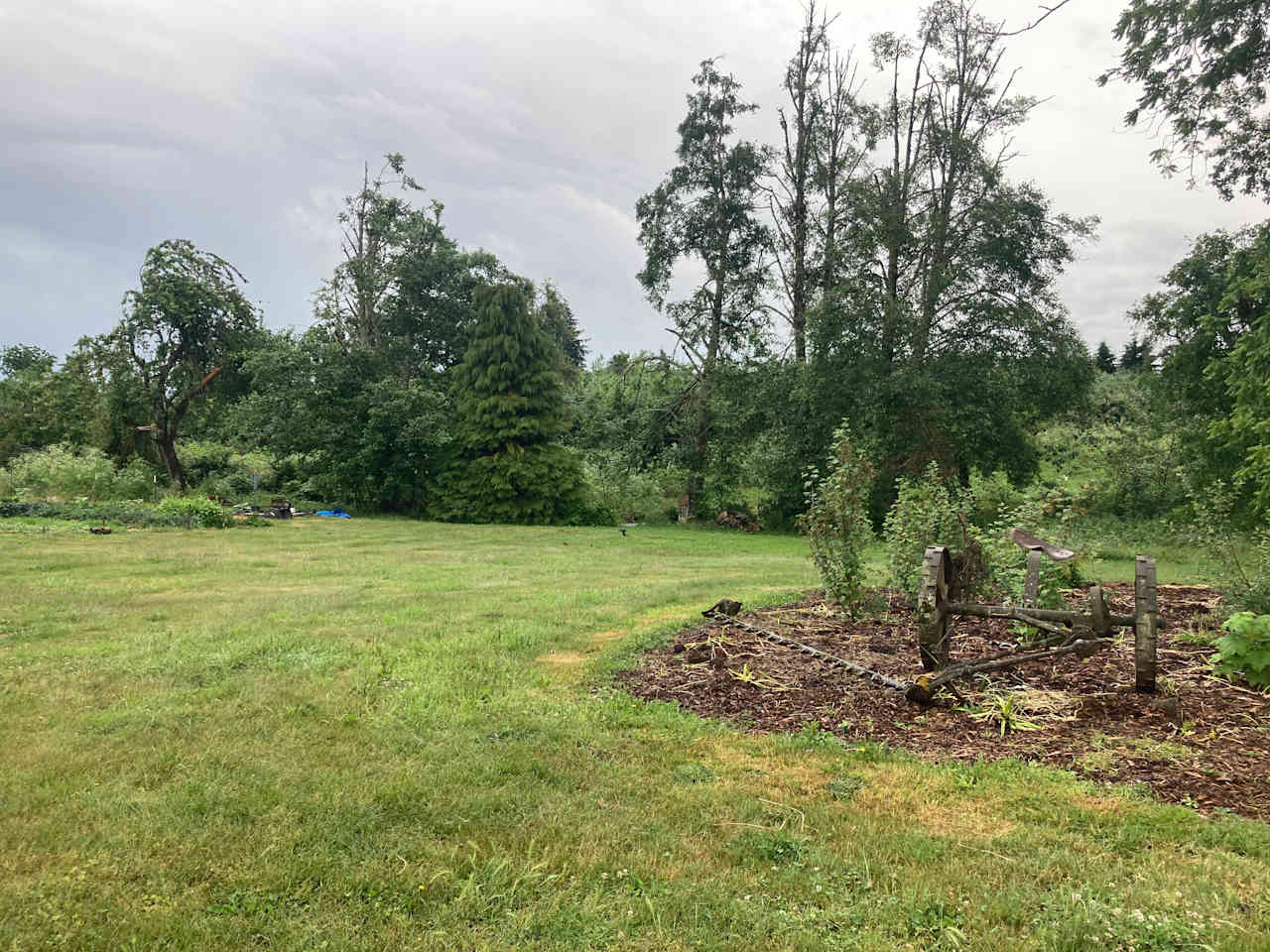
Taylor
2 weeks ago
19 ft Class B
With kids
We loved Alder meadow! This time of year the flowers are absolutely beautiful. We loved using the picnic table and firepit with our kids as well. Truly a beautiful spot.
See more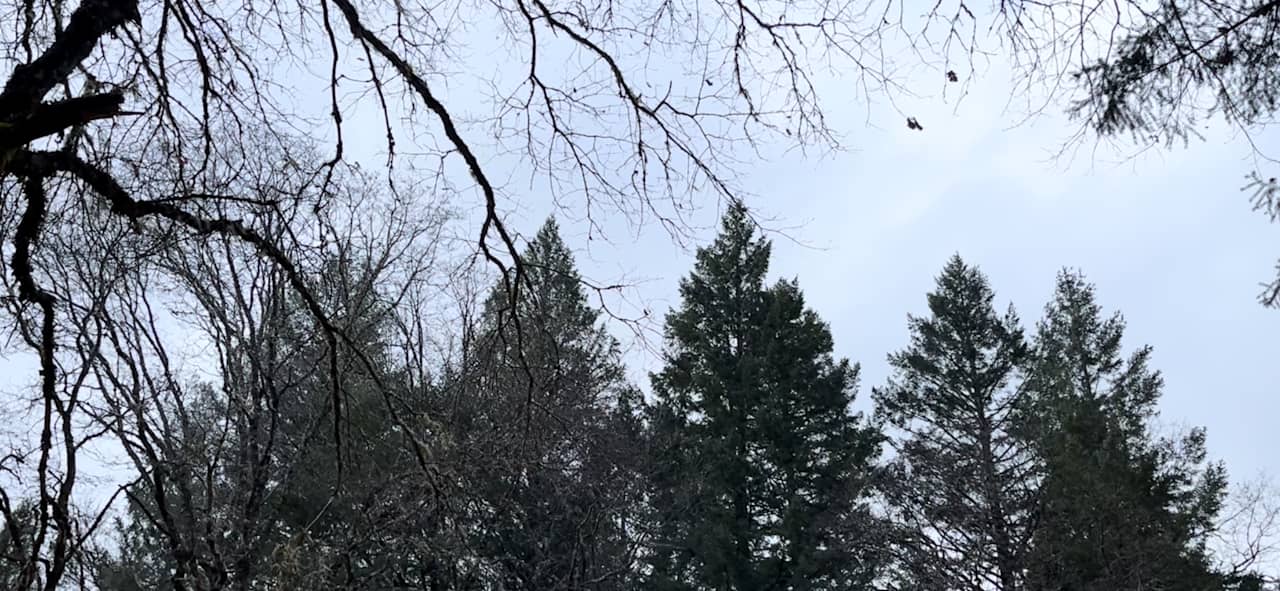
R
Robert
3 weeks ago
Tent
This park is very spacious and clean, full of vibrant energy. The tea lounge and river were highlights for me. This is a great place to catch some zzzs under a tree. It’s raining on my tent here now at the end of March, with patches of sunshine and warm weather in between. Zzzzzzzzz…
See more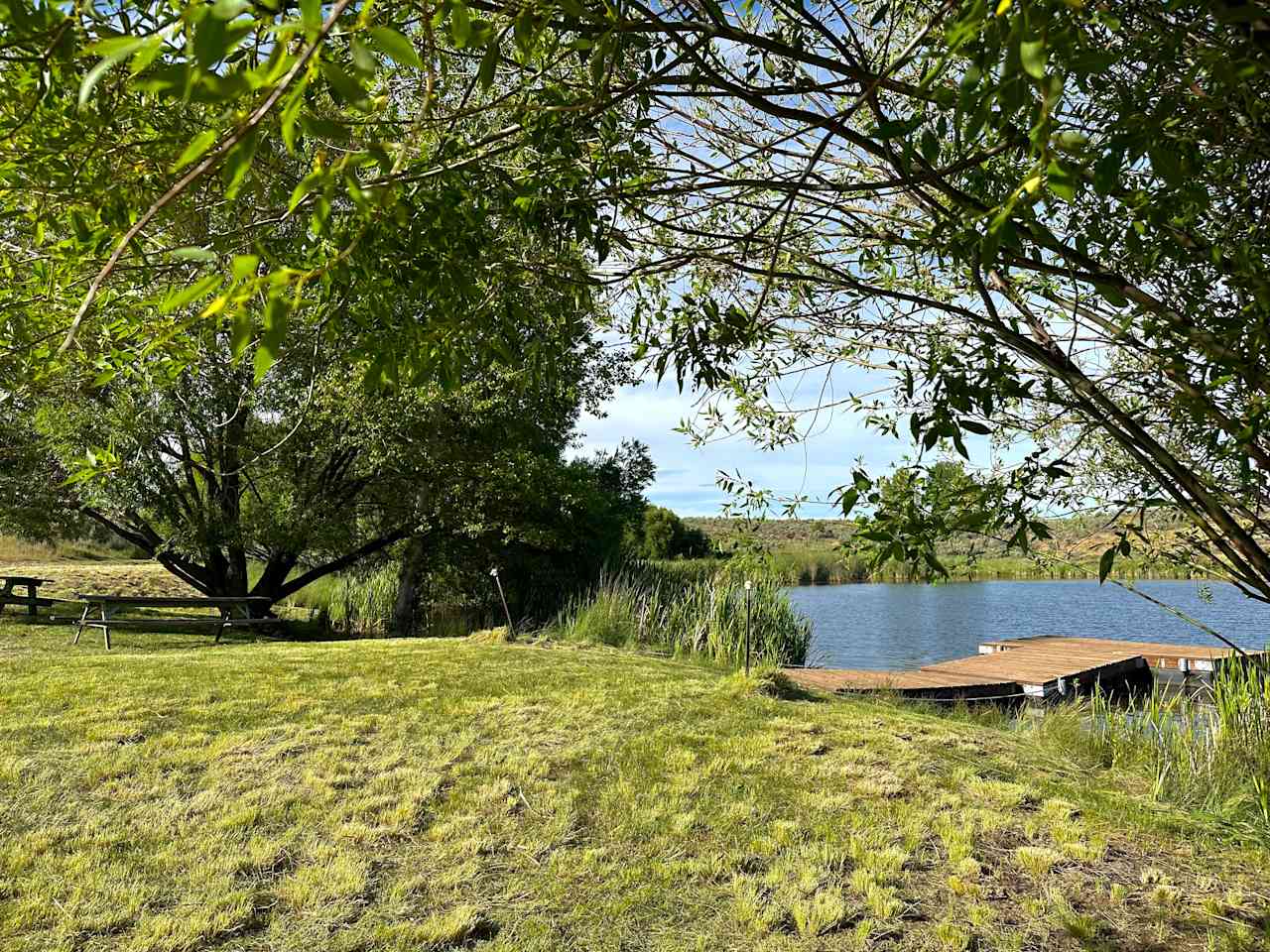
Meghan
3 weeks ago
20 ft travel trailer
With pets
Wonderful place and great hostess! We’ll be back to camp here again!
See more
N
Namratha
3 weeks ago
Tent
Group trip
We had a fantastic camping experience here. The location is ideal, right next to Sandy River. The host was incredibly helpful and provided detailed instructions about the campsite. The trail leading to the campsite is well-lit with automatic LED lights, making it convenient to navigate even at night. Additionally, the porta potty was clean and well-maintained.
See more
J
Jessica
3 weeks ago
With pets
Exactly what we expected based on description, photos, and reviews. Absolutely beautiful spot right on the river.
See more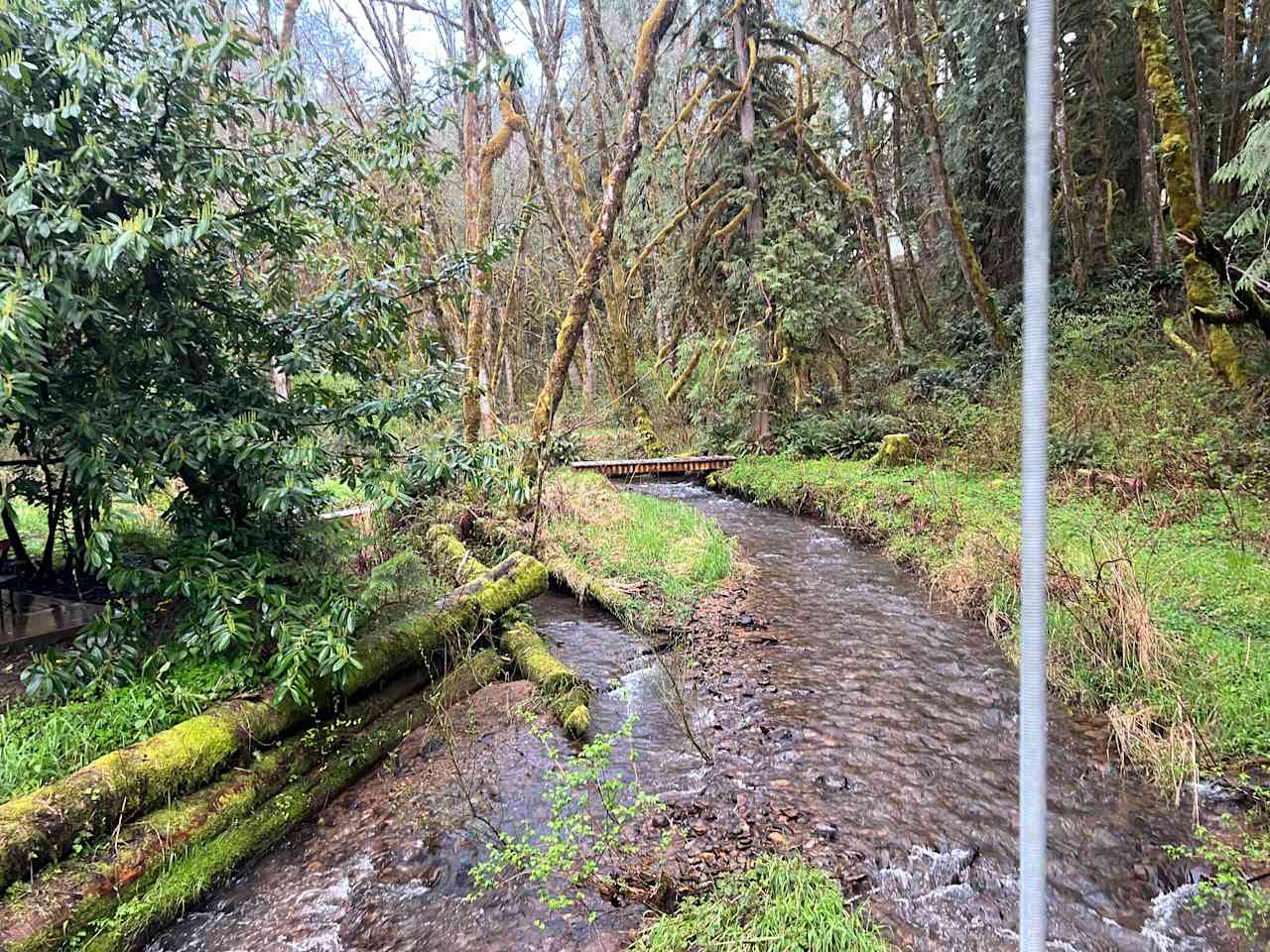
S
Samuel
3 weeks ago
With kids
The site was clean, beautiful and the hosts were extremely accommodating and friendly! A real gem of a stay, with a nice hike right off the premises and several others nearby.
See more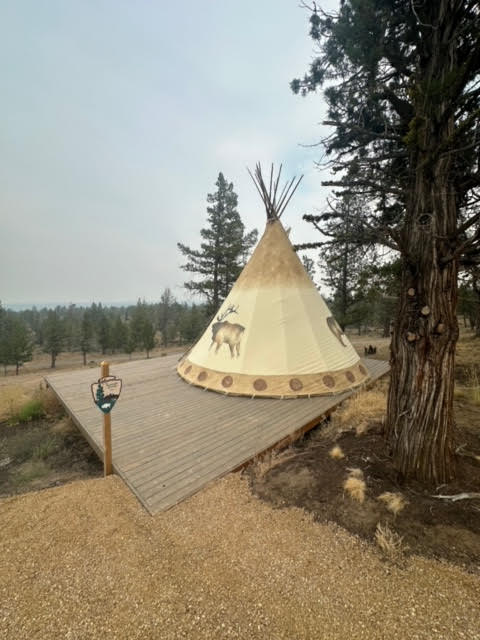
Sydney
3 weeks ago
Weekend Trip to STEEP DREAMS
April & Colby were great hosts. They were so accommodating and friendly. The property is beautiful and quiet. The cabin is temperature controlled, clean, and comfortable. My family spent the days walking around Sisters and the nights snuggled up in bed. We will definitely return.
See more
Chris
3 weeks ago
Tent
Would highly recommend staying here.
The location is perfect as well for visiting Silver Falls State Park (~20m) with the cozy town of Silverton being close by (8 min).
Jim greeted us and was great to hear the amazing history around the farm. There are plaques around the property explaining some of the history and the land is so peaceful. A creek is near the Adler Meadow and when we were there all of the flowers were starting to bloom. The Alder Meadow faces west as well for a perfect sunset view with extra warmth in the evening.
We'll be back!
See more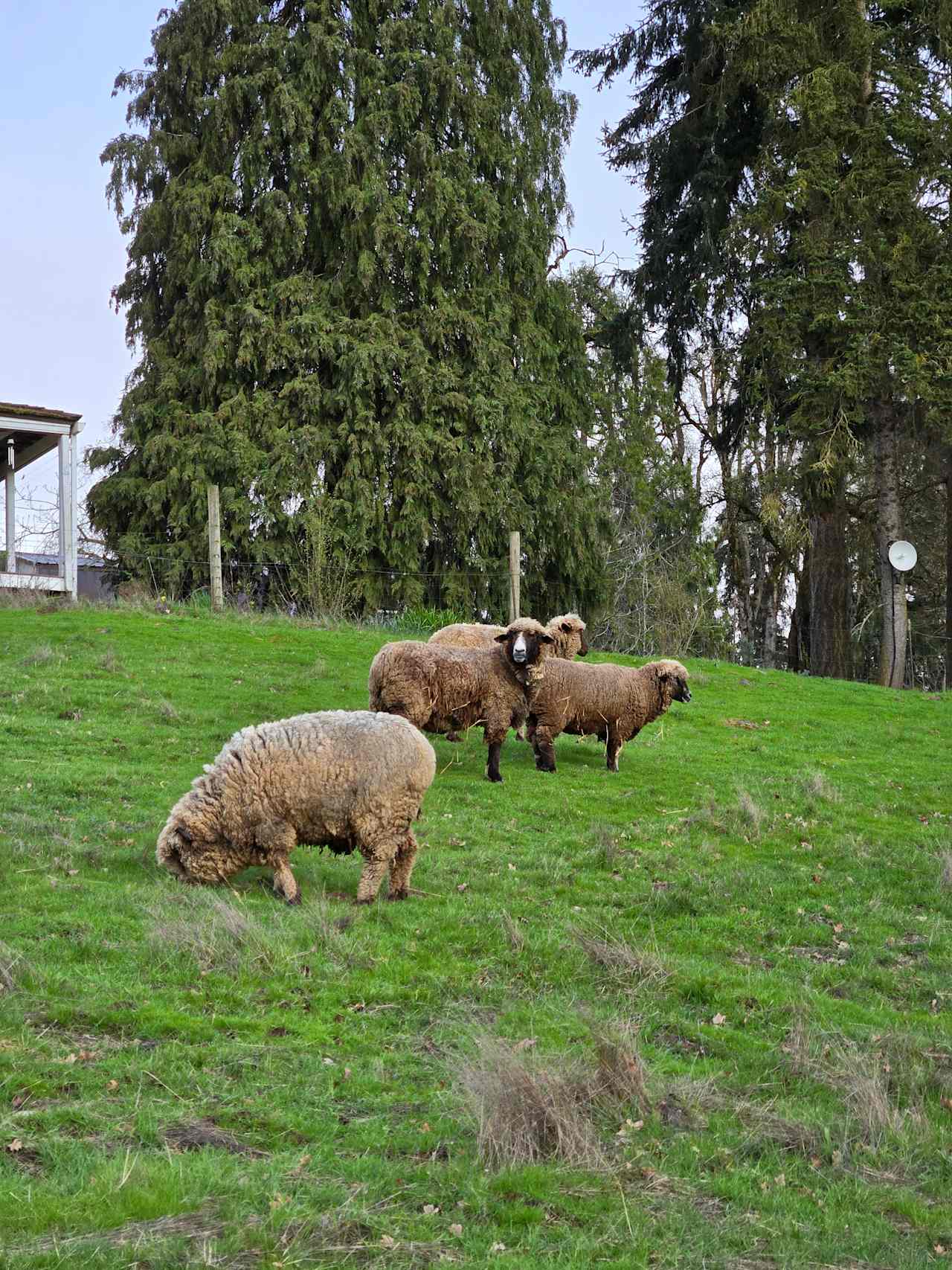
D
Dani
3 weeks ago
With pets
Just book it! This historic farm has all the charm of a storybook with a rich history(there are information plaques all around the garden, orchard and cabins, so make sure to walk around). The cabins are well stocked with everything from ample outlets to extra bedding to kindling for your woodburning stove. Jim was such a warm and excellent host. While we didn't end up needing anything I'm sure he would have been more than accommodating 😁 Silverfalls is only 20ish mins away and an epic adventure. There's also a small town just a few mins away from the farm, so if you need anything you can just pop into town. I hope you stay here so you can experience the peace and beauty yourself
See more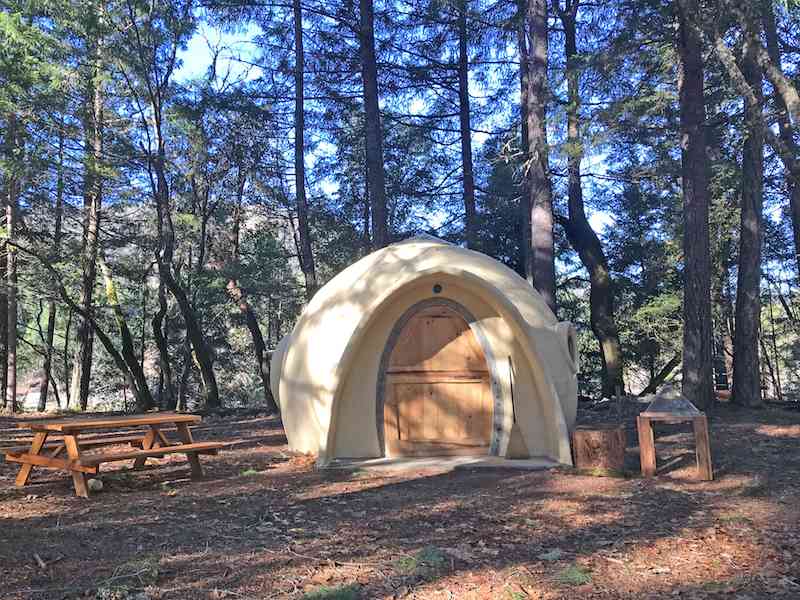
M
Mary
March 2025
With pets
My friend and I had a wonderful stay- despite it being cold and rainy, we were able to feel cozy. We returned from a day of hiking in the redwoods and Mea was wonderful about coordinating so the hot tub and sauna were all warmed up when we got back. She also gave us extra towels to keep the floor (and all of us) dry with the rain.
It was my first time bringing my puppy/teen dog on a “camping trip” and this was a good way to ease her into it and keep her comfortable! Very kind and thoughtful people on the property. I would definitely recommend staying! We all felt very safe here.
See moreStar Hosts in Oregon
100%
(29)
The Park at Loon Lake
11 sites · Lodging123 acres · Reedsport, OR
Come to The Park at Loon Lake.
Access to the lakefront and the dock along Lake Creek.
Endless views of wildlife as you are surrounded by creeks, ponds, cliffs, the lake, and natural forest land.
Enjoy the views and enjoy the water!
Rent a kayak or paddle board for the day or just swim and relax!
Pets
Potable water
Toilets
from
$220
/ night
99%
(89)
Bandon
2 sites · Lodging, RVs40 acres · Bandon, OR
Surrounded by forest & cranberry bogs, our location is private and peaceful! The land is home to wild beavers, ducks, birds, huge bullfrogs, chickens & bunnies. Cranberry farming has been a family tradition for multiple generations. The land encourages wildlife to make their home here & provides a musical backdrop for your enjoyment. You don't have to go far to get to the amazing shops and gorgeous harbor in Old Towne! Close enough to bike or hop in your car and begin your exploration. Our Farm Stay is for the discerning traveler who wants an experience, even while sleeping!Other family member's farms surround this property, making this truly a private oasis.
Potable water
Toilets
Showers
from
$110
/ night
100%
(55)
Azalea Grove Getaway
4 sites · Lodging, RVs, Tents13 acres · Azalea, OR
Ours is a Gem of a place - with forest, meadows, pond, orchard, garden, creek - perfect for pondering, wandering, writing, or resting. We are at one end of the Trans America Trail and offer EV chargers too for a small fee.
Come & Enjoy!
We offer a cottage, a house, as well as camping.
Savor our Gorgeous & Secluded 13+ acre Sacred Forest! Meander thru our Meadows, Ponder the Pond, Gaze at the Garden, or Plunk down on the Platform by the Creek for the lazy afternoon.... This is one Special place to Rest, Replenish & Rejuvenate your Spirit & Soul.
A Fantastic Photography Shoot, Writer's Retreat or Winery Tour weekend with several in the area. Fishing, Boating & Rafting nearby at Gaylesville Reservoir, Rogue & Umpqua Rivers.
We Cannot accommodate Trailers at this time. Campers & Vans not to exceed 25 feet in length, or tents are welcome.
Check with us first about possibly bringing your well-behaved dog, however - DOGS ARE NOT ALLOWED TO BARK & CHASE THE WILDLIFE AT ALL. You may be asked to depart if there is an issue with this. Please understand this a Wildlife Sanctuary of sorts with LOTS of resident critters including birds, fox, squirrel, skunk, turkey, deer and yes-cougar! Many species of trees on the property to wander through & identify.
Come spend some time & get Grounded in the Forest!
Pets
Potable water
Toilets
from
$45
/ night
100%
(21)
Crooked Finger Farms
4 sites · Lodging67 acres · Scotts Mills, OR
Come experience a romantic Glamping escape in the beautifully curated converted greenhouse. You will be surrounded by windows with beautiful views that allow you to enjoy the farm in style. (Privacy shades in the seating area and sleeping loft).
Guests love our new ‘Goodland’ wood burning hot tub. It heats relatively quickly and is not dependent on electricity. We supply wood and kindling and will even light your first fire for you (by arrangement) so it’s hot for you when you arrive.
The queen size bed located upstairs in the sleeping loft is 100% Latex and has crisp cotton sheets, down pillows, comforters and netting. Downstairs is a comfortable seating area.
We have heaters to keep you cozy for those chilly nights, and cool mountain breezes and fans to cool you in summer. Best of all you have your own private Hot Tub for your enjoyment! Please come prepared for inclement weather... Although heated, The Bali House has a gravel floor and is not insulated.
Please Note: The bathroom and kitchenette are located a short walk away (bathrobes provided) in our Historic Barn and where the horses will keep you company. You may see us and other guests working with the horses, cleaning stalls, etc... However, the kitchenette and Barn Bathroom is for for your exclusive use.
Explore private trails right from the property. And the amazing nearby waterfalls. Including Abiqua Falls just up the road, and 'The Trail of Ten Falls' at Silver Falls St. Park.
The 'Bali House' and surrounding yard are private. We do live on site and are available throughout your stay, but we will not disturb you.
As a working 67 acre organic farm, the property is very rural, but only an hour outside Portland, Oregon.
The Farm is also conveniently located close to several towns including Mount Angle and the cool little town of Silverton, Oregon.
Silverton has several excellent restaurants, great brew pubs, a seasonal farmer's market, and shopping. It is also home of The Oregon Gardens, a world class botanical garden.
Crooked Finger Farms has great history. The Farm and surrounding acreage was homesteaded in the late 1850’s-1860’s. You can still pick the fruit from the original heirloom apple and pear trees! The farmhouse, historic barn and outbuildings were built as a dairy in 1915.
Potable water
Toilets
Campfires
from
$156
/ night
100%
(27)
Little House On The Mountain
1 site · Lodging4 acres · Rhododendron, OR
I grew up in the Philadelphia area and in 2002, I followed my calling and moved out to Portland, OR. I am a nature lover and enjoy everything that the Pacific Northwest has to offer -- the mountains, unlimited hiking and biking trails, beautiful lakes and rivers. Not to mention the abundance of good IPAs, coffee and delicious food. Over the years, I camped in several places in the area and always dreamed of owning a cabin near Mt. Hood. In 2008, my dream came true when I purchased my cabin and land in ZigZag. I am very excited to share this magical place with you and hope that you enjoy your time!
Potable water
Toilets
Campfires
from
$127.50
/ night
12 top river, stream, or creek cabins sites in Oregon
98%
(2731)
Cedar Bloom
158 sites · Lodging, RVs, Tents100 acres · Cave Junction, OR
Cedar Bloom was purchased in the spring of 2017 by Spirit Weavers Gathering as a place of peace and healing, for all walks of life. Spirit Weavers is an annual women's gathering which happens once a year each June. We host over 1,200 women in just two weeks on the land.
Our beautiful forested land is located in Southern Oregon, in a small town off the 199 Redwood Highway. The land which we call home is 100 acres of beautiful protected forest and sits upon a mile of the Illinois River.
We are very fortunate to be surrounded by a widely diverse population of flora and fauna. As caretakers of this sacred land, we feel a strong responsibility to honor our plant and animal allies by not only protecting them and their habitat, but also to help educate others about what lives and grows here by providing people with opportunities to experience the beauty of these plants and animals for themselves. For this reason, We are honored to host the many different groups who will gather here on this land for learning and communing with the nature that flourishes here. We feel very fortunate to be involved in this process of helping promote a sustainable and abundant future for all living things on this planet by sharing knowledge and skills from the human past that can make a sustainable lifestyle a reality for everyone everywhere.
This is our home and we are happy to share it with you!
Pets
Potable water
Toilets
Campfires
Showers
from
$50
/ night
99%
(145)
Mt. Hood Enchanted Forest
4 sites · Lodging, Tents17 acres · Sandy, OR
The property is 17 acres of enchanted forestland with 300ft of Sandy River frontage. Both sides of the river are part of the Enchanted Forest
There are a few walking paths and plenty of room to roam.
Bring your paddle board or kayak to enjoy the river (Dependent on river level/current strength)
The property is located within 2 miles from the Sandy Ridge Mountain bike trails and Barlow Wayside hiking trails.
It's approximately 20 minutes to Government camp, ~ 35 minutes to Timberline for skiing and biking and an additional ~ 15 minutes to Mt. Hood Meadows.
Approximately 50 min to PDX airport, and 1 hour to downtown Portland.
Pets
Potable water
Toilets
Campfires
Trash
from
$38.95
/ night
96%
(137)
Justesen Ranches
20 sites · Lodging, RVs, Tents350 acres · Tygh Valley, OR
Justesen Ranches is family owned working cattle, wheat and recreation ranch. Our properties are located in the Columbia River Plateau in North Central Oregon.
Enjoy wide open spaces, reservoirs for wildlife watching and clear night skies for star gazing. This is a leave no trace, pack it in, pack it out camping area.
The property is located in Tygh Valley and is only a few minutes from the general store and the stunning White River Falls State Park. The Deschutes River whitewater rafting hub of Maupin is just a 10 minute drive away. The lodge two hours from Portland and 30 min from The Dalles.
Pets
Potable water
Toilets
Showers
Trash
from
$68
/ night
97%
(421)
GeerCrest Farm
7 sites · Lodging, RVs, Tents21 acres · Salem, OR
GeerCrest Farm was settled by the Geer family in 1848, and is still owned and stewarded by the family. The house Ralph and Mary Geer built in 1851 stands and is one of the oldest in Oregon to remain in the same family.
The farm features creeks, forests, pastures, orchards and gardens as well as the historic buildings. Currently we have four friendly sheep and a small flock of Mallard ducks to keep us company. The Pioneer Memorial Orchard features over 50 vairieties of pre 1850 apple trees. The Heritage Grove has ten fruit and nut trees that were recognizeds as a memorial the the early pioneers of the nursery trade by Oregon Heritage Tree program. The 20 acre property, offers three tent camp sites Including the Tree House site, as well as two forest cabins and a small forest bunkhouse (sleeps 6).
Our peaceful, small farm offers a reflective immersion in nature and history among the occasional quacking of ducks and baaas of sheep. The scenery from all corners of the farm is incredible - a favorite is the westward view of the valley pasture at sunset -- called "Homer's View" after famous political cartoonist and Geer descendant, Homer Davenport. No matter which camping site you choose, the sounds of the creek, pond frogs, or conversing owls are sure to lull you to sleep.
Feel free to roam the farm, but always leave gates as you find them, open or closed. Please say hello to our sheep and barn cats (they may say hello first). Explore the Heritage Grove of historic trees, the Memorial apple orchard and pear glade with varieties circa 1840s, indulge your senses in our medicinal herb garden, and chat with our farm family while they water the veggie gardens, if you so wish! Your experience will certainly be unique to the season.
Your host Jim Toler represents the fifth generation of the farm and will happily share stories of the farm and it's history.
GeerCrest Farm is truly an off-the-beaten-path gem.
Pets
Potable water
Toilets
Campfires
Trash
from
$36
/ night
98%
(156)
Crater Lake Private Woodlands
5 sites · Lodging, RVs, Tents100 acres · Prospect, OR
Private and protected forest woodlands, trails, wildlife, ponds, wildflowers, old growth timber and views. Unspoiled nature at its best! We are located in southern Oregon near Crater Lake NP, just off of hwy 62, part of the Rogue-Umpqua Scenic Byway, more commonly known as the "highway of waterfalls" and near the little town of Prospect on what is known as the beautiful side of Crater Lake NP. Three waterfalls, the Prospect Cafe, and the Historic Hotel are all within a two-mile radius. If you're after that famous pie at Beckie's Cafe, you are 10 minutes close.
Our 100 acre ranch allows us to host guests in their own RV's, at camp/tent sites, or in our new A-frame Cabin all located in private, and even secluded, sites. Several well maintained trails wind throughout the property and can be enjoyed by guests. Nature enthusiasts enjoy the hiking, wildlife viewing, and the beautiful ponds and woods.
Crater Lake Woodlands is part of the historic Katydid Ranch. Once owned by Boise Cascade who used it both for growing seedlings to replant logged mountain sides and as a vacation getaway for their executives, the story of Katydid Ranch goes back to the early 1900's when it's owner named "Katy" used it as the "half-way" overnight lodging for horse & buggy guests traveling to Crater Lake from the Rogue Valley. Leaving the valley at the crack of dawn, they could arrive at "Katy's" by nightfall, in time for a meal and sound mountain sleep. They'd hitch up at dawn and make it to Crater Lake by nightfall.
Historically, the first residents were the Rogue River Takelma and Latgawa native Americans. Latgawa lived in the Rogue Valley of interior southwest Oregon. In their own language "Latgawa" means "those living in the “uplands," though they were also known as the Walumskni by the neighboring Klamath tribes. Specifically, Ha-ne-sakh. The Latgawa were one of two peoples who spoke the Takelma language. They were hunters, gatherers, weavers and fished the Rogue River. They were known to have a stationary settlement and trading post at the Katydid Ranch location. Their tribes lived in the upper Rogue River area extending beyond Prospect and Union up to Crater Lake.
Since we've owned the Ranch, we've maintained the custom of welcoming overnight guests and at the same time, we continue to honor the protected wildlife designation given to it back in the 50's. Wildlife viewing is one the delights we share with our guests. Please be mindful of native wildlife keeping dogs on leash so as to avoid chasing and barking at wildlife. Thank you.
The animals here include, but are not limited to black tail deer, elk, fox, coyote, ringtailed cat, raccoon, skunk, and also typically farther up the mountain are the elusive mountain lions and black bear which we have never spotted on our property. The ponds and surrounding area are home to migratory to the Oregon Pond turtle, Canada geese, quail, wild turkeys, various owls including the great horned owls, hawks, cranes and eagles. Our pond bird watcher friends spotted Common Mergansers, Ring Necked Ducks, Canada Geese…and a Loon. The bull frogs orchestrate the evening and can be heard at times throughout the day. Katydid Ranch is a wildlife sanctuary.
The flora and fauna of the forest is abundant and diverse. This land is home to many native grasses, ferns, and berries, wild flowers, as well as many other edible and medicinal plants and numerous varieties of mushrooms. If you are visiting during blackberry season, feel free to pick, pick, pick and indulge.
Katydid trees include old growth Douglas Fir, Ponderosa, Sugar, and Jeffrey Pine, various Cedar tree varieties, Incense Cedar, the majestic Pacific Madrone, Alder, Big Leaf Maple, Black and White Oak, Dog wood, and Vine Maple. You may also spot the prolific wild hazelnuts. As Forest Stewards, we are committed to maintaining a well balanced and diverse forest ecosystem.
Pets
Potable water
Toilets
Campfires
from
$46
/ night
98%
(522)
Tillamook - Trask River
3 sites · Lodging, RVs, Tents52 acres · Tillamook, OR
Welcome to a premier Texas Longhorn ranch where you will be staying right next to the Trask River with access to fishing, boating and kayaking.
If you are needing a little sensory-deprivation from everyday life.
You have found it!!
We invite you to experience a relaxing, calming atmosphere on the riverbank of the Trask River.
Pitch your tent or bring your RV and embrace mother nature. Please contact me by phone 503-812-0630, as you can see we have closed our sites. However, i'm willing to work with folks around time frames. Thank you, Carmen
Pets
Potable water
Toilets
Campfires
Showers
from
$50
/ night
98%
(185)
Creekside cabins and showers
6 sites · Lodging, Tents30 acres · Molalla, OR
Creekside campground with showers has 4 separate sites:
1. The campground with a kitchen and hot/cold potable water and 20 amps of power. Includes 3-4 picnic tables and a covered stage area with power. This can hold 8-10 large tents comfortably. Price includes up to 10 people. Children under 12 are not counted and are free (except to their parents).
2. Tiny Creekside cabin has no power and a queen size bed with bedding and towels included. Sleeps 2 with about 120 SF (tiny) includes 150 SF covered deck. You may add tents around the cabin but must add the guests under extras so you pay for additional tents/people. No kitchen with cabin. This site has a private fire pit.
3. Creekside RV - retro trailer newer looks like a 50's diner. Has fridge, stove top, microwave, electric hot water kettle and Air Conditioning. This is a nice addition to the other sites due to the AC and fridge. RV is parked next to creek across from campground. The toilet is not connected (please use Portable toilet next to trailer).
4. A cabin in the trees 12'x20' with queen bed and all bedding included. No Kitchen in the Cabin, The cabin includes a picnic table, fire pit, hammock, and outdoor bench and chairs.
No Electricity.
All sites have shared access to hot showers, portable toilets, and potable water next to Outdoor kitchen and dinning area.
Guests love staying with us; "Brenda's property is fantastic. We had a gathering of friends for a long weekend on this property (rented the cabin too) and had the best time. Having the creek to splash around in, warm running water for showers and washing dishes, trails to explore, and the delivery of fresh produce and eggs from the property far exceeded our expectations. Brenda is the best host - she answered all my questions quickly and was very generous with our group. Definitely recommend!"
Pets
Potable water
Toilets
Campfires
Showers
from
$76
/ night
83%
(3)
Kilchis River Retreat
6 sites · Lodging5 acres · Idaville, OR
Enjoy a quarter mile of Kilchis River access in the Tillamook Forest! If you prefer a private setting you can put up a tent on the west end of the property, or chose the comfort of staying in our rustic cabin. There is no electricity or running water in the cabin, however a generator can be rented if it is desired. Potable water is also available if you bring a jug to fill. A portable toilet is available on-site. Take advantage of the opportunity to go fishing, swimming, or launch your boat/kayak/tube. Alternatively, simply relax and enjoy the picturesque views of the river and the wildlife in the coastal rainforest. Watch the salmon jump during spawning season in November. We are also a birdwatcher's and rockhounding paradise! Just a few minutes away from town amenities, this location allows you to immerse yourself in the tranquility of the forested river canyon, away from the hustle and bustle of the city.
Pets
Potable water
Toilets
Campfires
Trash
from
$75
/ night
100%
(27)
Santiam Serenity
1 site · Lodging97 acres · Lebanon, OR
Enjoy the calm, quiet serenity of the South Santiam River. Get back to the basics here and just relax and enjoy nature. We have a small cabin with a bunk bed, and a camping toilet is provided. Bring your tent or camper for extra room.
Our campsite is nestled among the trees next to the river. There's lots to enjoy. Do you like hiking? Silver Falls State Park is only 36 miles away. Boating? You can put in your kayak/canoe at Gills Landing in Lebanon and float down the river back to the campsite. Fishing? Bring your fishing pole and try catch and release in our pond. Swimming? Take a swim in the cool water. Of course, you can just relax by the water's edge and enjoy the tranquility provided by the soothing flow of the river.
This 192 sq. ft. cabin is very basic. There is no shower, but there is a portable toilet with a wash station located outside. We do provide a full 5-gallon water cooler for drinking since there is no running water. For cooking there is a 24" Blackstone 2-burner griddle, and small propane cans are provided. Also, the cabin is furnished with a small supply of pots and pans. There is a battery that provides lighting, and phone charging is available in the cabin. During the cooler months, there is a small wood stove for heating, and firewood is provided. The cabin sleeps 2, but there is room for a camper and/or tents. This campsite is meant to be very simple, so you should plan on bringing whatever you may need/want for camping.
Pets
Potable water
Toilets
Campfires
Trash
from
$76
/ night
99%
(589)
Dew Valley Ranch Nature Retreat
15 sites · Lodging, RVs, Tents40 acres · Bandon, OR
ADULT RETREAT: NO OUTSIDE PETS OR SERVICE ANIMALS. CHILDREN 12 AND OLDER ONLY.
Due to the presence of free-range farm animals, we cannot accommodate any animals.
Dew Valley Ranch Nature Retreat is a Private Membership Association dedicated to providing a peaceful, nature-filled experience to rejuvenate your mind, body, and soul. We specialize in private camping and unique glamping options, with each site offering an acre or more of wooded land and a private potty, ensuring a high level of privacy that you won’t find in traditional campgrounds. Face Rock State Beach is just a short 10-minute drive away.
Here, you’ll meet friendly farm animals, explore scenic trails through the woods, enjoy games, a camp community garden, hot showers, and a heated dishwashing station. We’re located only 10 minutes from the charming Bandon by the Sea, where you’ll find fun shopping, a crabbing dock, world-class golfing, Whiskey Run mountain biking trails, West Coast Game Park, horseback riding on the beach, Circles in the Sand, excellent restaurants, and of course, beautiful beaches.
Come enjoy a tranquil and relaxing stay at Dew Valley Ranch. We look forward to hosting you!
Pets
Potable water
Toilets
Campfires
Showers
from
$55
/ night
100%
(12)
STEEP DREAMS
2 sites · Lodging17 acres · Sisters, OR
RELAX!!.... Or hike, or bike, or swim or simply recharge your batteries!
Stay the night in our tipi or cabin while taking in the peaceful views of mountains and the treetops. Camps are located on the top of a canyon where you can see for days on this one of a kind central Oregon property. Camps are located next to county and BLM land if you want to hike, bike or take a dip in the pond. 20 minutes to Bend, 15 minutes to Redmond and only 10 minutes to Downtown Sisters.
Pets
Potable water
Toilets
Showers
Trash
from
$50
/ night
100%
(18)
Alsea Valley Farm
1 site · Lodging7 acres · Alsea, OR
Our farm is nestled at the end of Honey Grove Valley in the lush coastal mountains. The creek meanders through our seven acre property. The north side contains a field, small orchard, greenhouses and barn. The south side is steep and wooded with healthy riparian. An extension to the Honey Grove trail leads out of the property accessing seven miles of hiking and mountain bike trails.
Nearby activities include hiking and mountain biking in Mary's Peak and Alsea Falls recreational area. Fishing access to the Alsea River is located 1.5 miles from the property on Honey Grove Road.
The guest cabin has two rooms and can sleep (4) guests comfortably and up to (6) guests. It contains (2) queen size beds, one pull out couch, and an optional futon mattress and a fold out single bed. One bed is in a loft accessed by a ship ladder. There is a small kitchen and attached bathhouse. The toilet is non-flush, composting. From the designated parking area there is a 200 foot walk along a gravel path to the cabin.
Other features include a fire pit, sauna, and creek access. Internet is available in the cabin. There is a Level 2 vehicle charger available for guests.
The property also contains a host residence. The area around the residence is for the hosts.
The cabin and the property are very quaint and inviting but also very rustic. Do not be surprised to see a few spiders and other bugs, the occasional bunny, wild turkeys, Garter Snakes by the ponds and newts on the trails. Please maintain good situational awareness when enjoying the property as structures and grounds may have some inherent hazards.
Barn is off limits. Greenhouse and gardens are fine to explore as long as doors and gates are closed and dogs are kept out. Please refrain from harvesting produce and/or eggs unless accompanied or given permission from hosts directly.
Pets
Potable water
Toilets
Campfires
Showers
from
$120
/ night
Dog-friendly getaways
98%
(26)
Forest Cabin with a deck
1 site · Lodging5 acres · Williams, OR
Learn more about this land:Welcome to the Willow Homestead. We are a hip-conscious, eco friendly five acres in the beautiful lower valley of Williams, OR. Expect to see us on the land tending the gardens and animals. Children at play! We live on the property with our children which are 11 and 15, as well as another family with a 2 year old. We have 2 Australian shepherds that are very friendly on the property that run freely, and 4 cats. We are farmers, artists and musicians holding a high vibe.We are offering a stand alone forest cabin with a lovely bathroom and shower. It has a comfortable double bed. There is a mini fridge and a hot plate on the deck.The cabin is approximately 200 square feet. It has a small wooden deck that looks out into the forest. There is a children's play structure available for smaller children. We ask if you bring a pet they are kept on a leash at all times as we have ducks that occasionally free range. Larger dogs are not aloud in the cabin but are welcome to sleep on the deck.AIR CONDITIONING is provided in the Forest cabin!The cabin has plenty of privacy but you can see the other homes in the distance (as close as 70 feet away)NO CAMPFIRES , CANDLES OR BBQ'S !!!!EXTREME FIRE DANGER IN EFFECT!!!We do not provide towels or bedding.We have a lovely hot soaking tub in the deck. If you are interested in this as an option you can book it under EXTRA'S at the bottom of this listing.We are 25 minutes off the I-5 near Grants Pass, ORWe are very close to rivers such as the Applegate, the wild and scenic Rogue (Morrissons and Galice resort offer rafting, book ahead!), the Smith river and the Illinois river. Applegate and squaw lake are near by as well as lots of beautiful wineries. Two of my favorites are Cowhorn Biodynamic and Troon. Ashland is a 60 min drive away, Jacksonville is a 30 min drive away. Both are cute historic towns with great restaurants. I have provided a list of recommended restaurants and recreational places in the cabin. I can send it to you prior to arrival upon request. We are a two hour drive to the coast through the redwoods. We border Pacifica Gardens (pacificagarden.org) an incredible place to explore, hike or fish. Walking distance across the creek and through the woods.We look forward to making your stay in Oregon great!
Pets
Potable water
Toilets
from
$85.50
/ night
100%
(18)
Back of Beyond
2 sites · Lodging20 acres · Lakeview, OR
Welcome to Back of Beyond.
We are the only year-round residents living off of Camas Prairie in the North Warner Mountains, perched at 5,700' elevation. We have owned this beautiful piece of ground since 1996. It has ponderosa and aspen forests with a few white firs, junipers, and willows along the seasonal creek. Wild flowers are all over these mountains from Spring through September.
The Squirrelville cabin was built in the early 1920s by a Lake County judge. The Whitetail cabin was built just after WW2 and is fully plumbed w/ hot water and a redwood deck, perfect for gazing at the stars. We are a member of Dark Skies Oregon, there is no light pollution, and on a clear night you can see the Milky Way.
Privacy and solitude are on tap here: We are up against the Fremont National Forest, a massive 2.4 million acre forest offering multiple hiking and walking trails & winter sports. Speaking of winter sports, Warner Canyon Ski Area and Camas Sno Park are only a 5 minute drive away.
The road running along our property is part of the 50+ miles of trail through the North Warner Mountain range, and into California. Love biking? It is also part of the new Timber Mountain Bike trail, as well as the Oregon Natural Desert Association alternative route to Lakeview.
If you're looking to take home some of Oregon’s finest sunstones,
South Central and Southeastern Oregon are the only areas in the world where the gem-graded sunstones with copper inclusions are found. Better yet, the Sunstone Public Collection Area is only an hour and 45 minutes away from camp.
We are a mere 10 miles from the wide open spaces of the Great Basin, and a short drive to Hart Mt. Antelope Refuge. You get 2 ecosystems for the price of one! Hart Mountain Hot Springs and Petroglyph Lake are all an easy day trip away. Discover the largest concentration of Native petroglyphs in the entire state of Oregon, on and around Hart Mountain. Native Americans have lived in this area for over 10,000 years.
Fishing enthusiasts will be happy to hear that native Red Band trout are in many water ways close by. Fly-fishing on Deep Creek and Vee Lake, or lure fishing for crappie and bass in the Warner Lakes, as well as Drew's and Cottonwood Reservoirs, Dog Lake, and Goose Lake.
Seasonal wild flowers and bird watching are all very close at hand. Bird watch at the foot of Hart Mountain in the Warner Valley, where a series of lakes and wetlands form part of the Western Flyway for migrating birds. There are trails and blinds for bird watchers.
Our water is pure Artesian spring water that we do not need to touch w/ chemicals.
Pets
Potable water
Toilets
from
$125
/ night
Booked 2 times
Bridal Veil Lodge
5 sites · Lodging28 acres · Corbett, OR
Originally built as an auto camp in 1926 supporting roadsters along the newly built Historic Columbia River Highway built in 1916.
Bridal Veil Lodge currently remains the only lodging along the waterfall corridor.
You can now hop on a trolley or bike and avoid parking to tour the 77 waterfalls accessible by trail.
We are excited to offer accommodations for road trippers camping,
looking to embrace the forest and seek out waterfalls.
The Columbia River Gorge offers outdoor enthusiasts opportunities of hiking, biking and paddling. Enjoy the scenic area from our doorstep.
Welcome to Waterfall Alley
We are a Bed and Breakfast along the Columbia River Gorge.
There's an open air shuttle that picks up and drops off at the end of our driveway.
Pets
Potable water
Toilets
from
$250
/ night
100%
(3)
Camp Festivus
1 site · Lodging1 acre · Rhododendron, OR
🔥 Camp Festivus is a unique 1926 Vintage cabin that has been thoughtfully restored, featuring a stone (Steiner) fireplace, reclaimed barnwood and 6 person hot tub all on a private creekside acre.
💧Challenge your nerve by swimming in Clear Creek or relax in the hot tub over looking the water. Indulge your inner slug, grab a book and read in the hammock.
🎣 Feeling lucky, you can try fishing in the back yard or walk across the street to see if they are biting in the Sandy River. Afterwards you can cook up what you catch at the outdoor fire pit or grill, then fall asleep to the sound of water or gaze at the old growth trees or creek view from every window.
🎿 You can throw down your gear or tune your bike or skis in our large heated mudroom, and toast s'mores out back or come inside and listen to your favorite music via Spotify or watch a movie on one of our flat screen TV's. Do you want a bit more privacy for the adults, then the kids can go down to the comfy TV room with flat screen, dvd player and stereo, there are tons of pillows and fold out mats to relax, watch movies, or listen to music.
🪑 The iron and woodwork and much of the furniture have been custom designed and produced to maximize the beauty of the cabin as well as the surrounding area.
Camp Festivus, a place you can rest(ivus).
Pets
Potable water
Toilets
from
$227.50
/ night
100%
(152)
Crystal Creek Cabin
2 sites · Lodging80 acres · Rhododendron, OR
Sit on the covered porch no matter the weather and enjoy the sounds and scenes of nature! This is the ideal place to come, unwind and just be a part of nature.
Your views will be of trees, mountains and creeks. The cabin is far enough away from our home so you will have privacy and seclusion. It is a short but very uphill hike from the parking area. When you arrive, feel free to find your way up to the cabin. You may want to pack light as it is a bit of a hike! Linens and blankets will be provided for the King size bed.
The cabin is constructed from local trees we've harvested using our sawmill as well as Redwood and Douglas Fir salvaged from an old water tower deconstructed locally on the mountain.
This is the perfect rustic, quiet and private retreat for all seasons. We now have a King size bed in the cabin for up to 2 people.
This is a one of kind rustic experience. We provide all of the firewood needed for the cabin.
Longer stays at a discounted price for those engaged in creative projects will be considered...please message me.
Pets
Potable water
Toilets
from
$195.50
/ night
Nearby parks
Explore the area’s public lands.
Other options in Oregon
Winchester Bay RV Resort
1 site1 acre · Winchester Bay, OR
Nestled in the heart of Winchester Bay, the RV Resort offers a unique blend of serene coastal living and breathtaking views of Salmon Harbor, making it the perfect home away from home. Each campsite provides stunning vistas of either the bay or the Umpqua River as it flows into the Pacific Ocean. With full hook-ups, easy access, and top-notch services, you can enjoy the great outdoors without sacrificing comfort.
Adventure seekers will discover a wealth of nearby attractions. Explore the historic Umpqua River Lighthouse, or enjoy a picnic on the picturesque shores of Lake Marie. For those looking for excitement, ATV rentals are conveniently available for touring the stunning dunes. Alternatively, unwind on our 40 miles of pristine, untouched beaches.
If fishing is your passion, consider chartering a boat to navigate the unspoiled Umpqua River or venture out into the Pacific Ocean with one of our experienced guides. You can also bring your own boat and fish at your leisure. For a taste of local flavor, try crabbing right from the docks—Winchester Bay is renowned as the Crab Capital of Oregon—or indulge in clamming at the nearby prime locations.
After a day of exploration, treat yourself to Winchester Bay’s gourmet restaurants and charming gift shops, all within easy walking distance. Come visit
Pets
Potable water
Toilets
Trask River RV Park
28 sites1 acre · Tillamook, OR
Trask River RV Park stands out as a hidden gem in the heart of the Pacific Northwest, offering a unique blend of tranquility and adventure just a stone's throw from the Pacific Ocean. Nestled on the outskirts of Tillamook, this charming campground provides easy access to a variety of local attractions, ensuring that you have everything you need for a memorable getaway.
The park features spacious sites that allow for privacy and relaxation, making it an ideal spot to unwind after a day of exploration. Whether you choose to lounge on the peaceful property or venture out to discover the stunning natural beauty of Oregon, there’s something for everyone.
Nearby, you can enjoy outdoor activities such as hiking, fishing, and swimming in picturesque locations. The quaint town of Tillamook is also just a short drive away, where you can find delightful restaurants and unique shops to enhance your stay. Don’t miss the chance to experience all that Trask River RV Park has to offer—book your spot today!
Pets
Potable water
Toilets
Kelly's Brighton Marina
1 site1 acre · Rockaway Beach, OR
Kelly's Brighton Marina stands out as a premier destination for crabbing enthusiasts in Tillamook County, nestled in the stunning Nehalem Bay. This picturesque location offers an ideal environment for both novice crabbers eager to learn the ropes and seasoned veterans looking to take advantage of the rich marine life that thrives in these waters.
At Kelly's, you can embark on an unforgettable adventure that caters to every member of your family and all your friends. The experience is straightforward and genuine, ensuring that you create lasting memories while enjoying the beauty of the Oregon Coast.
Whether you're seeking a fun day out or a chance to connect with nature, crabbing at Kelly's Brighton Marina is the perfect choice. Make this your next outdoor adventure and discover the thrill of crabbing in one of the best spots along the coast!
Pets
Potable water
Toilets


River, stream, or creek cabins in Oregon guide
Overview
Camping in Oregon is a true escape to nature. Hipcamp offers over 270 options for those seeking a cabin near a river. Cedar Bloom, with 1299 reviews, is one of the top campsites for this combo. Prices range from $40 to $187 per night. Far Away yet Tranquil and Close and Tillamook are also popular options. Trash, pets, and toilets are popular amenities, while climbing, swimming, and wildlife watching are among the most common activities.
Top parks in Oregon
Top cities in and near Oregon
Top regions in and near Oregon
States near Oregon
Safety at Hipcamp
Hipcamp is created with ❤️ and hope for our future.
